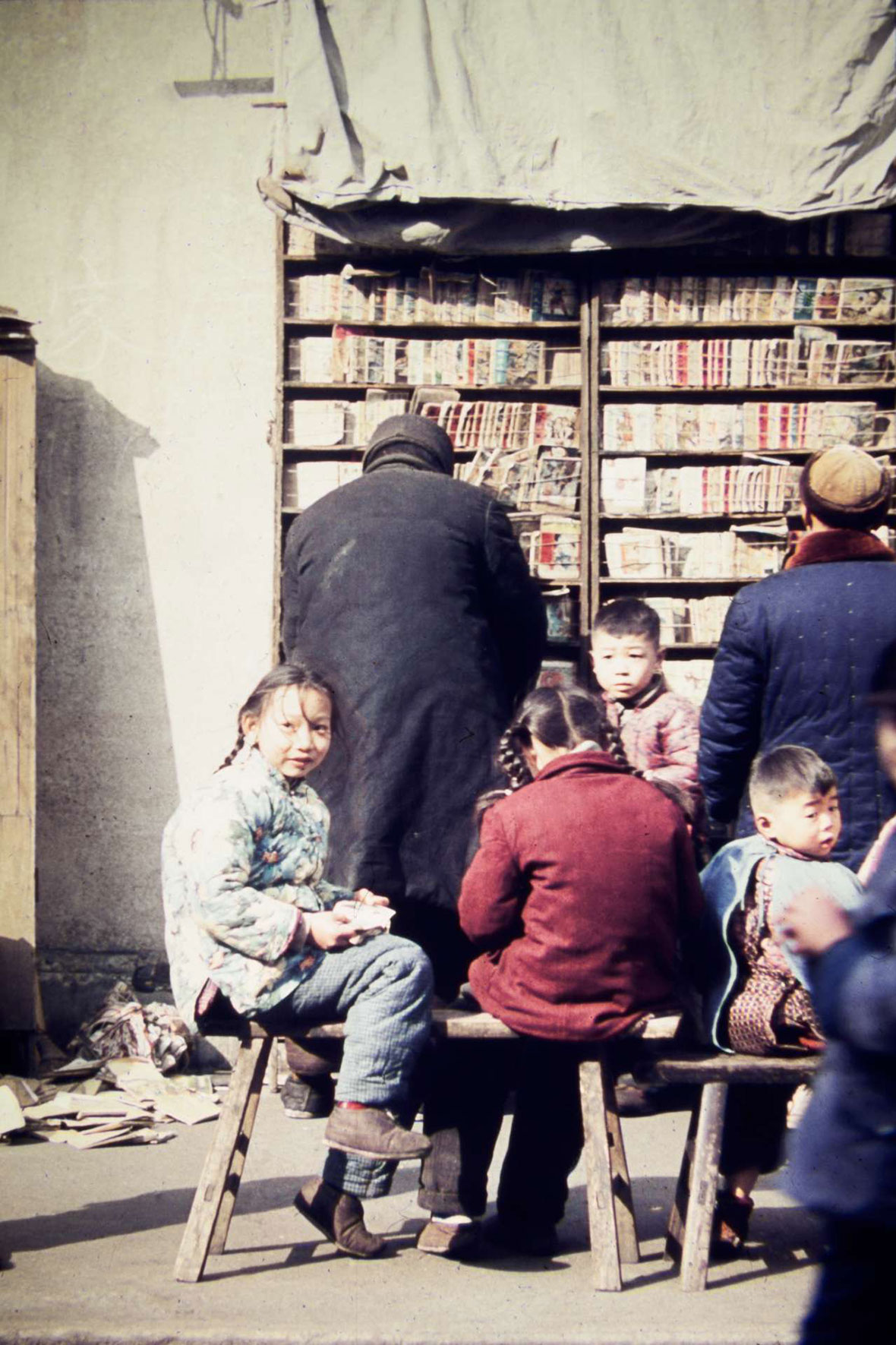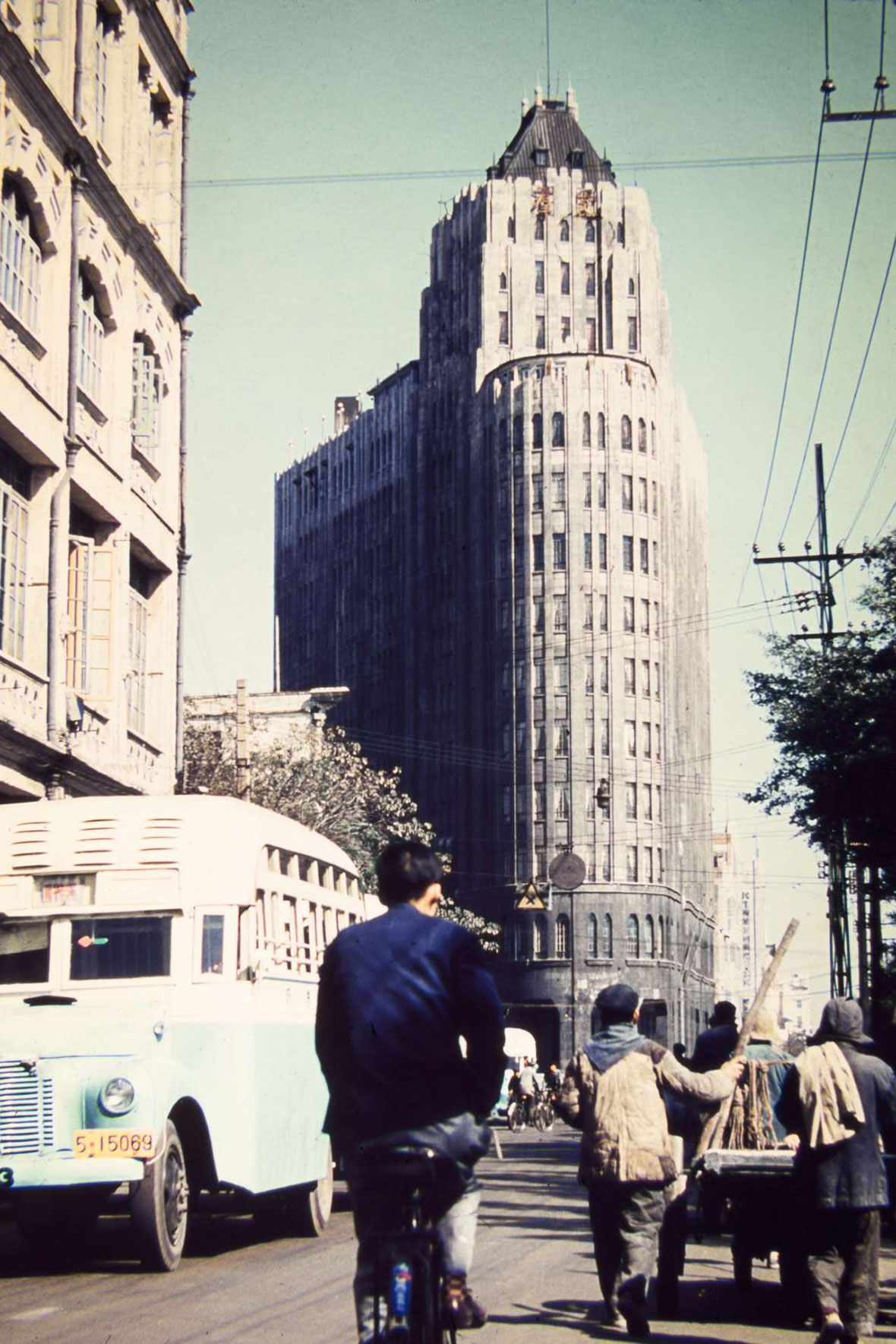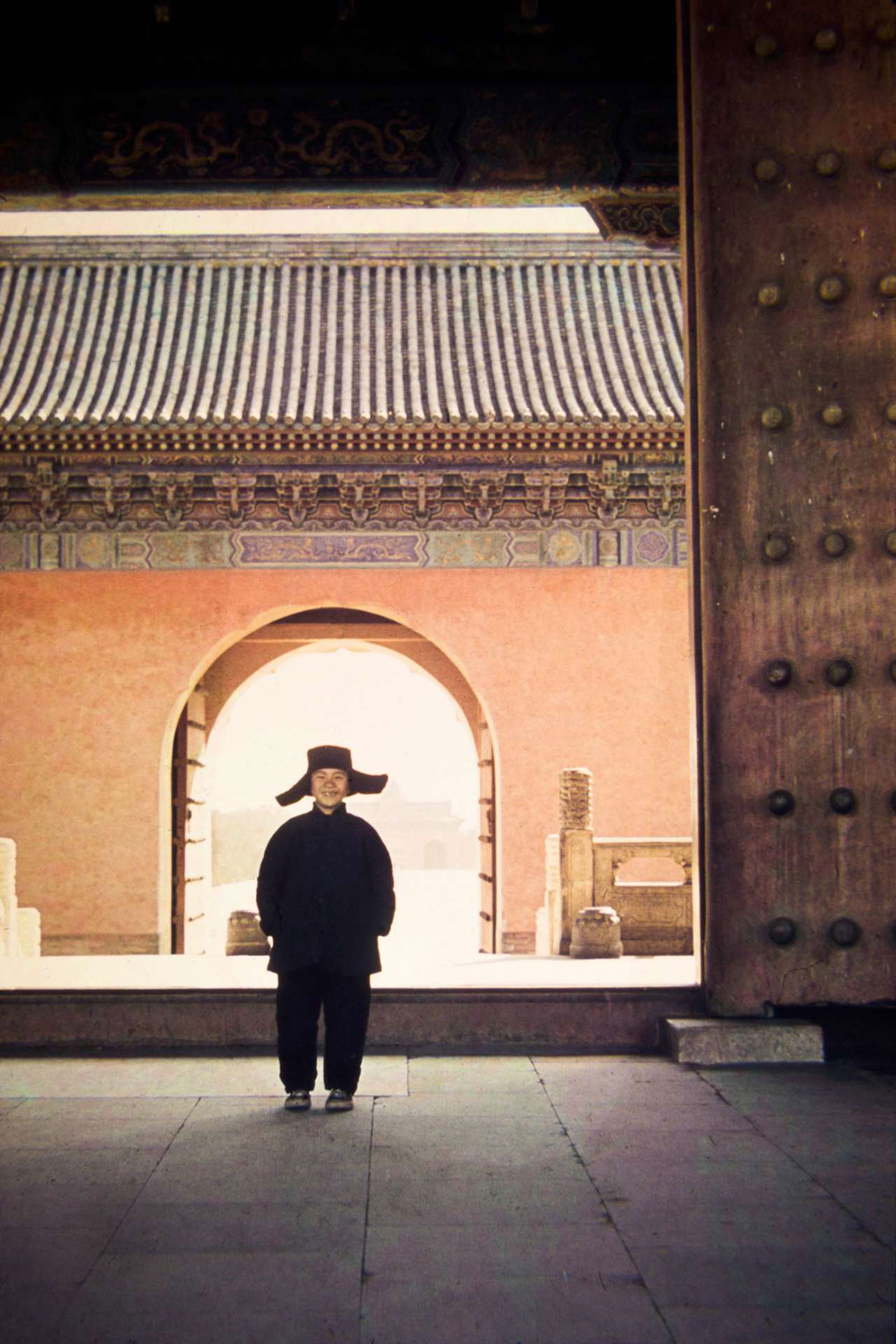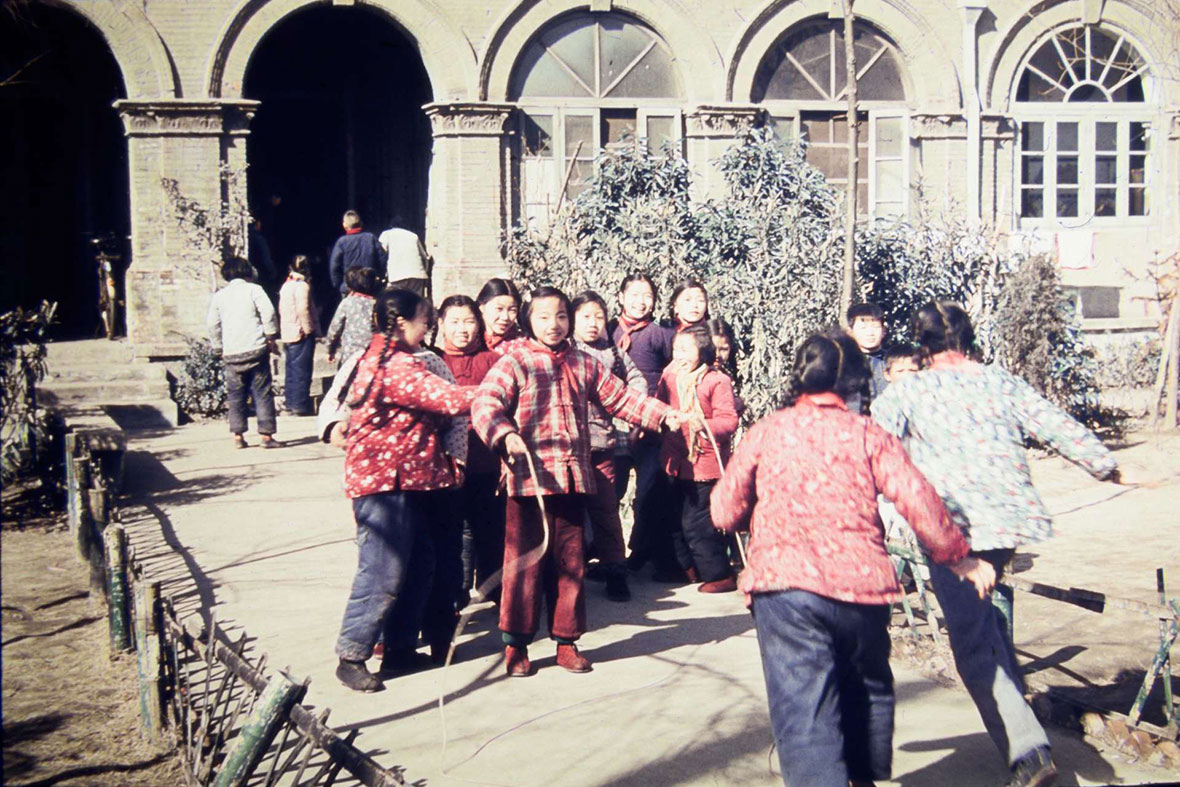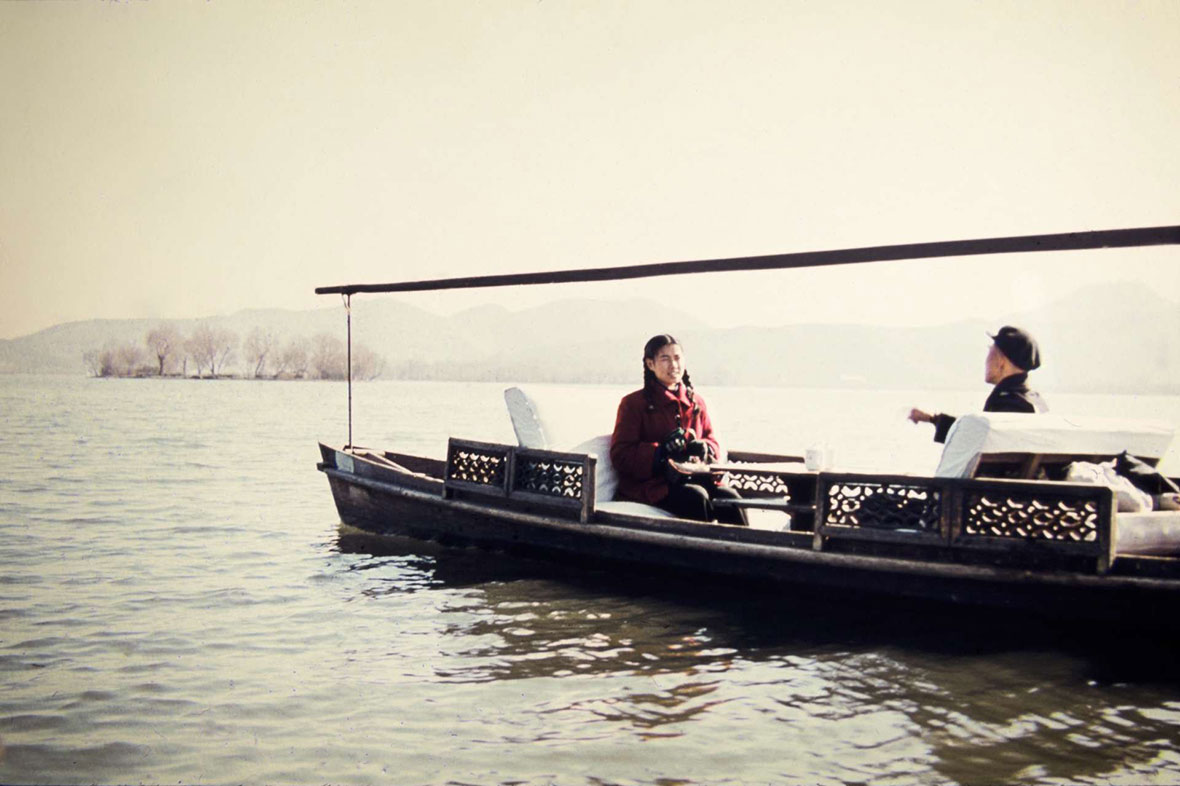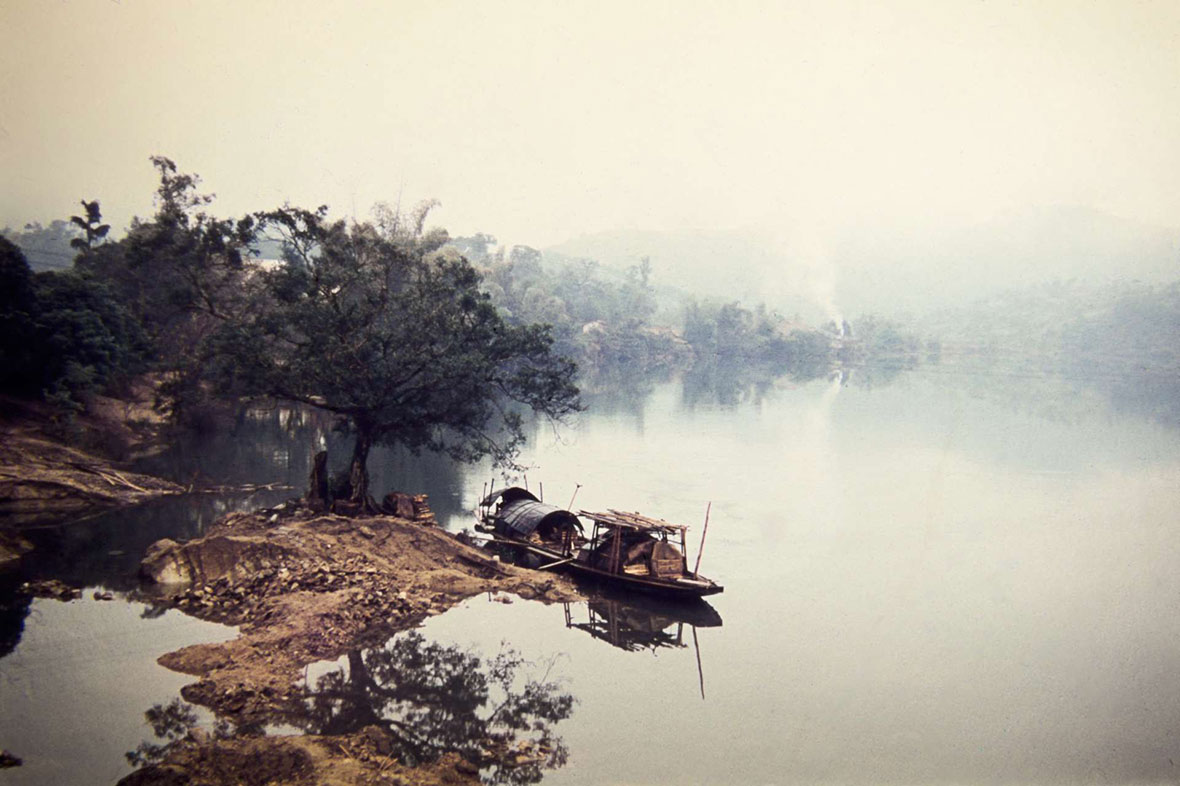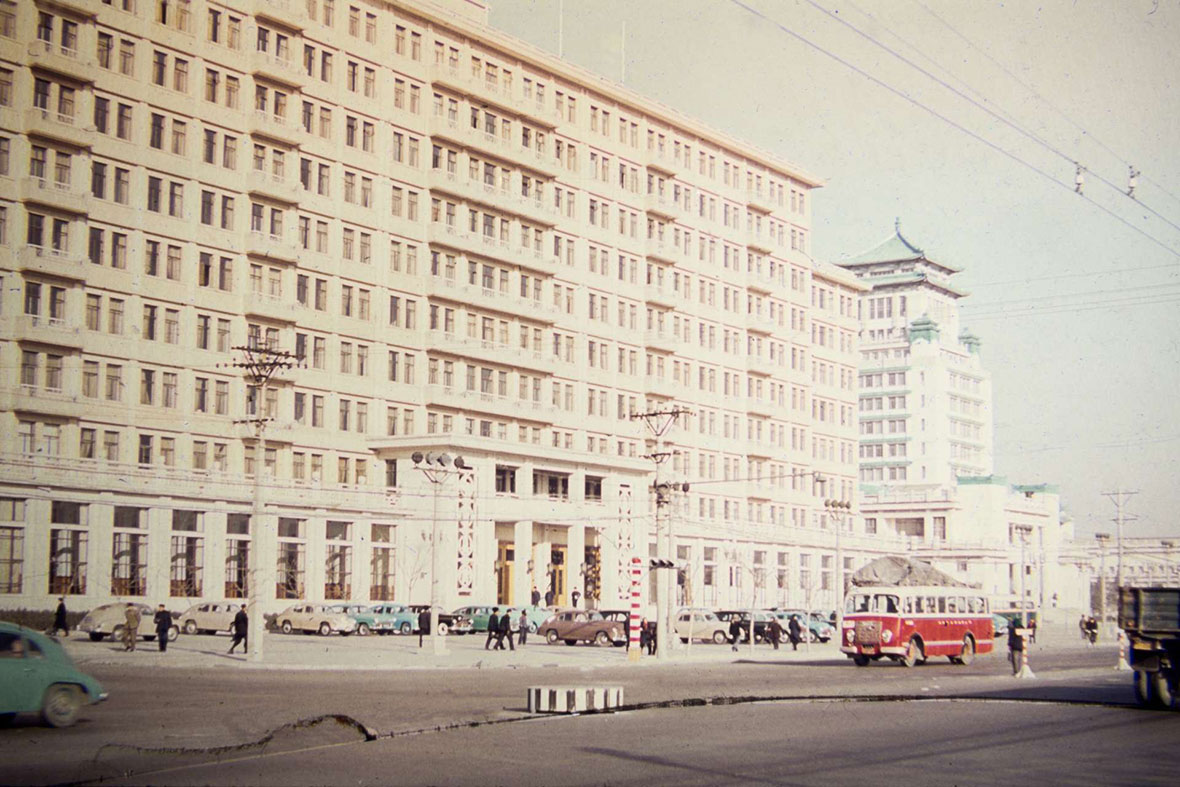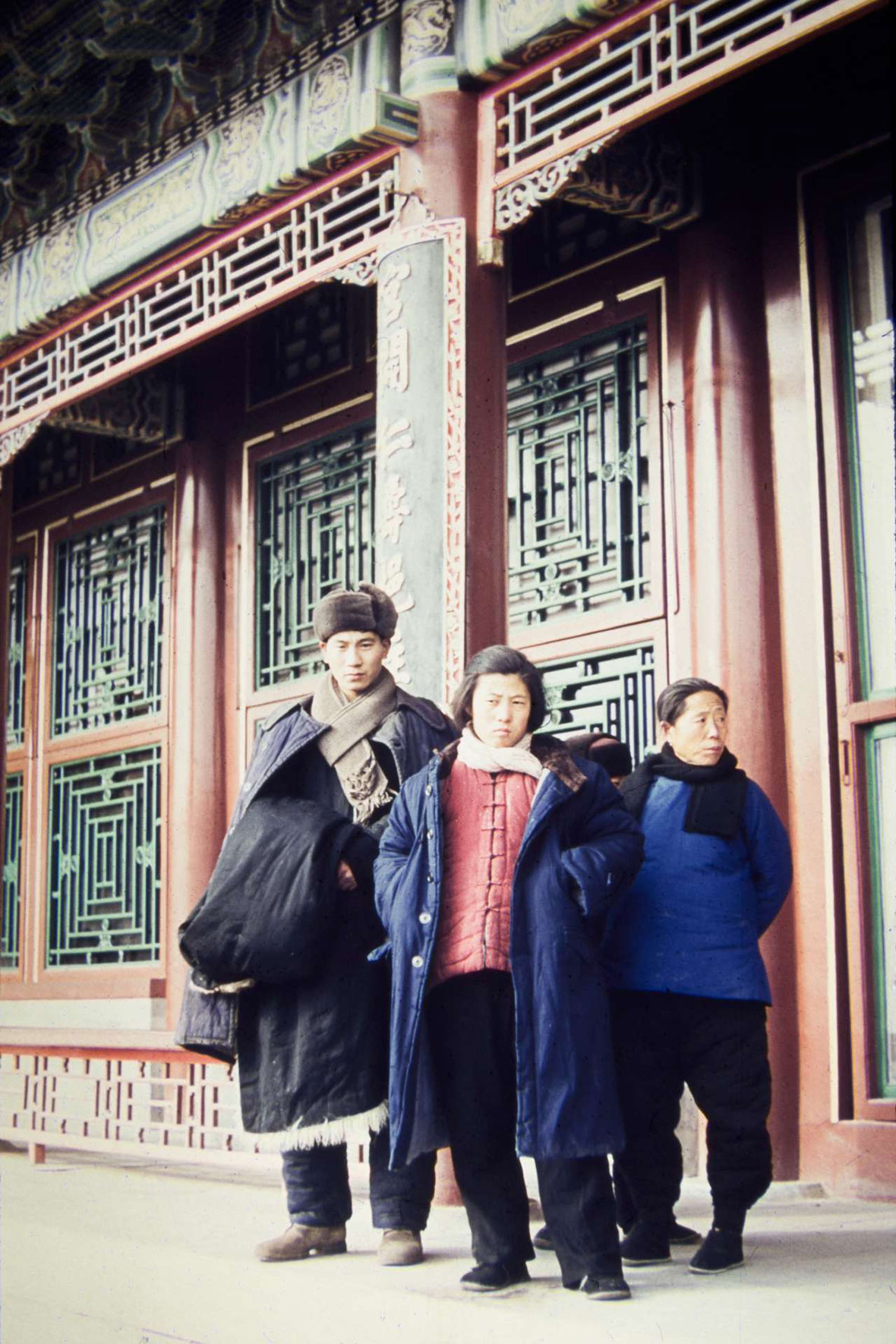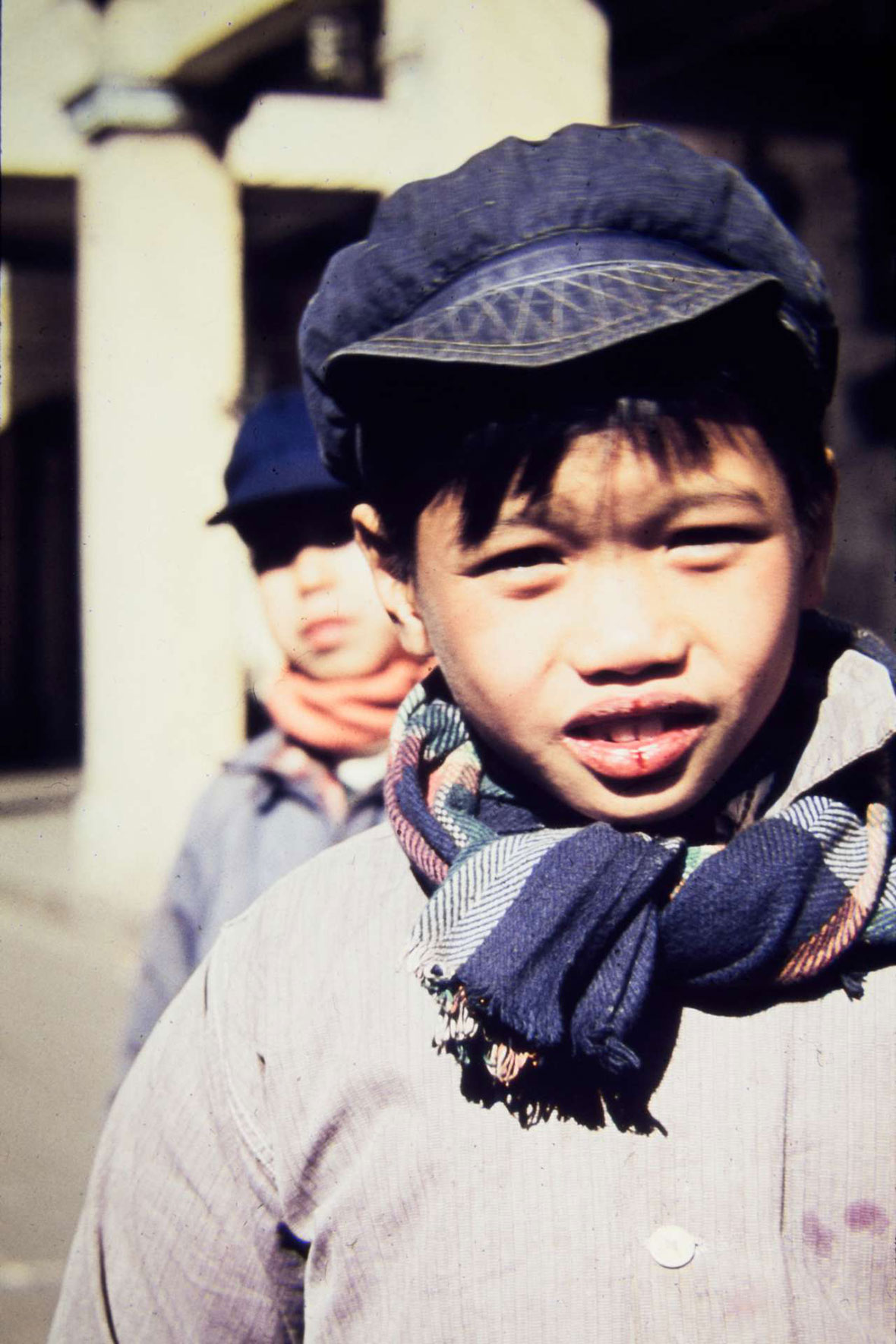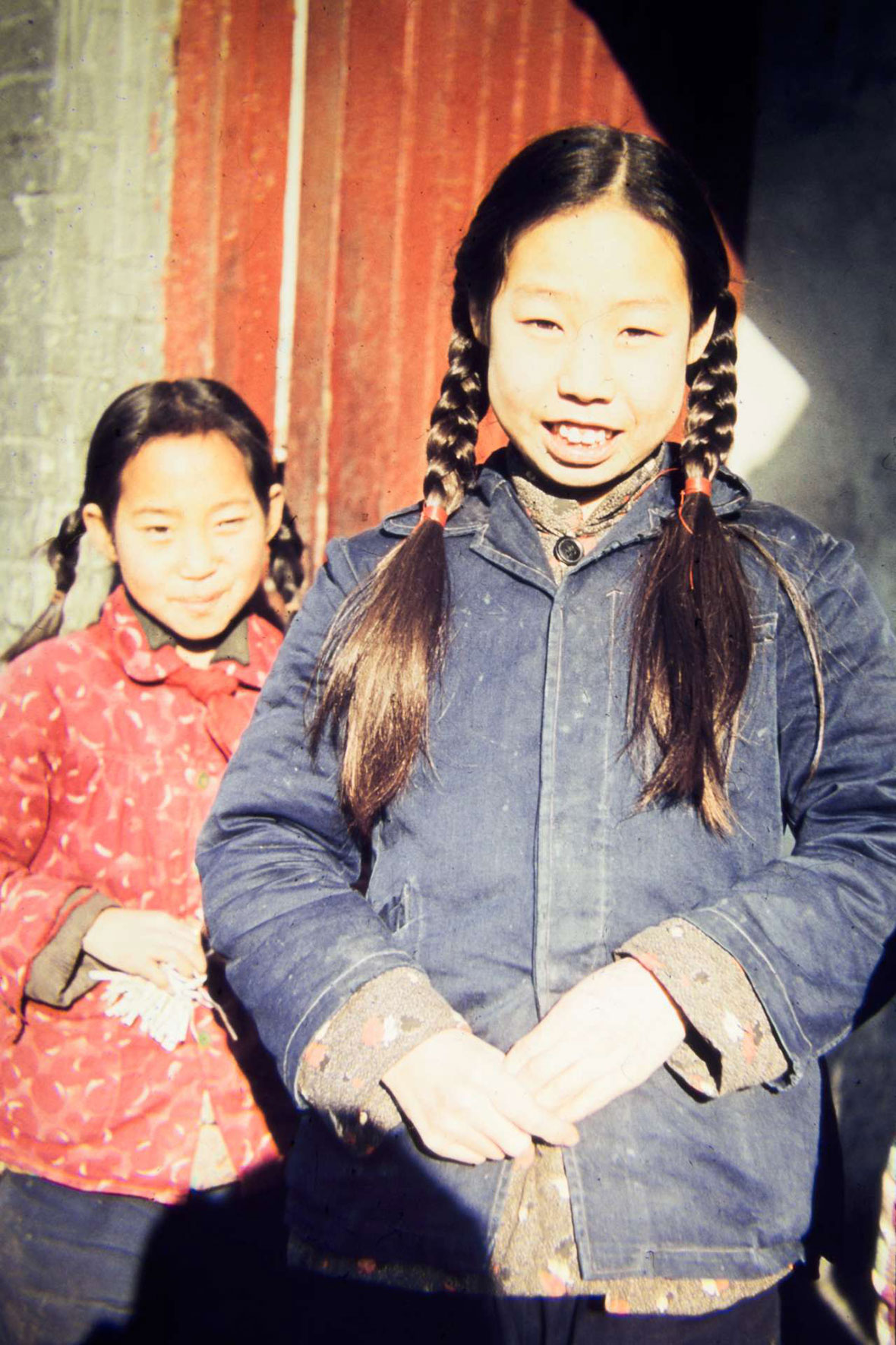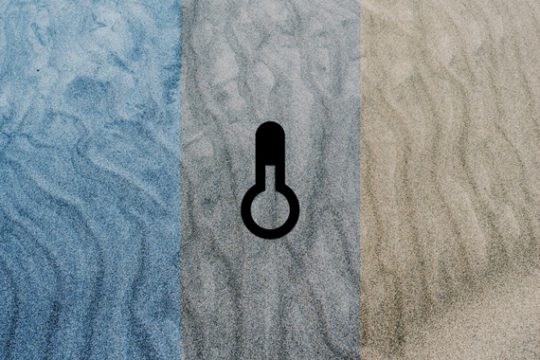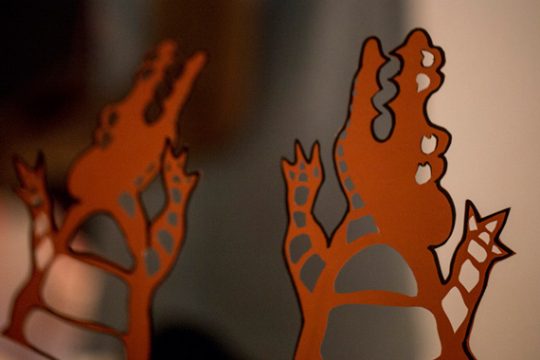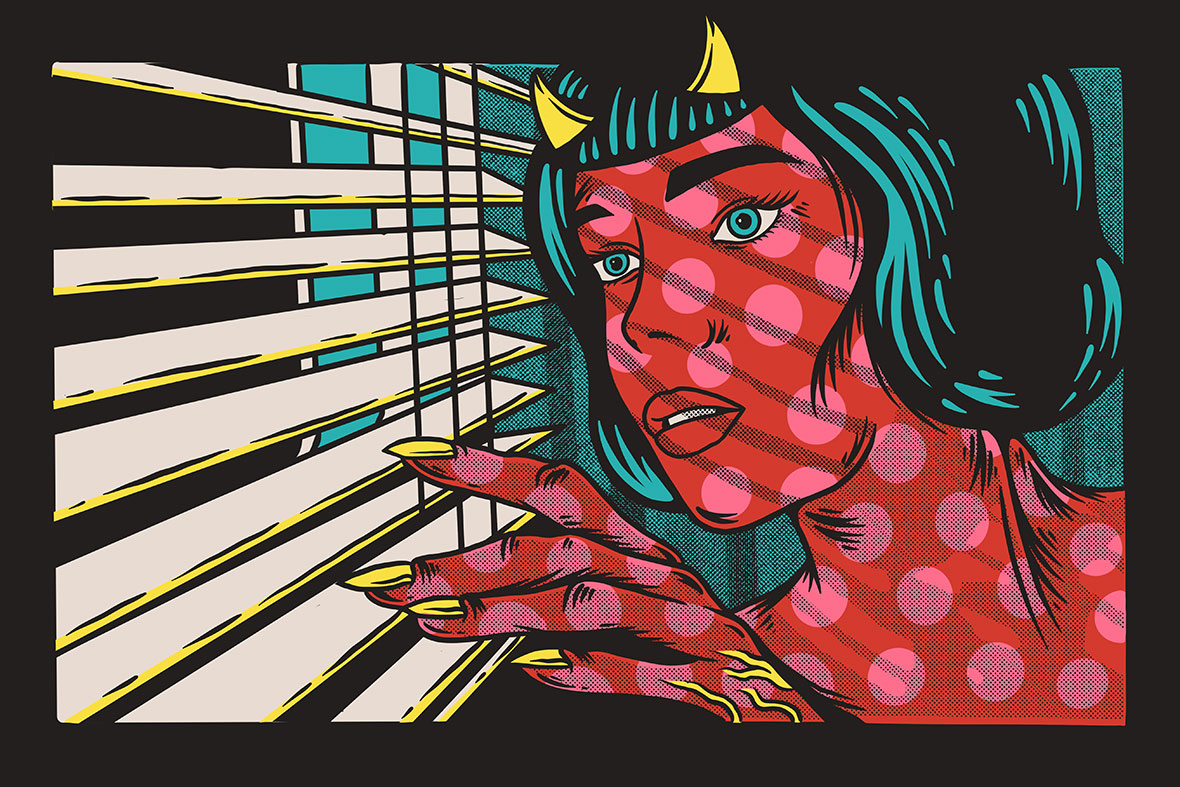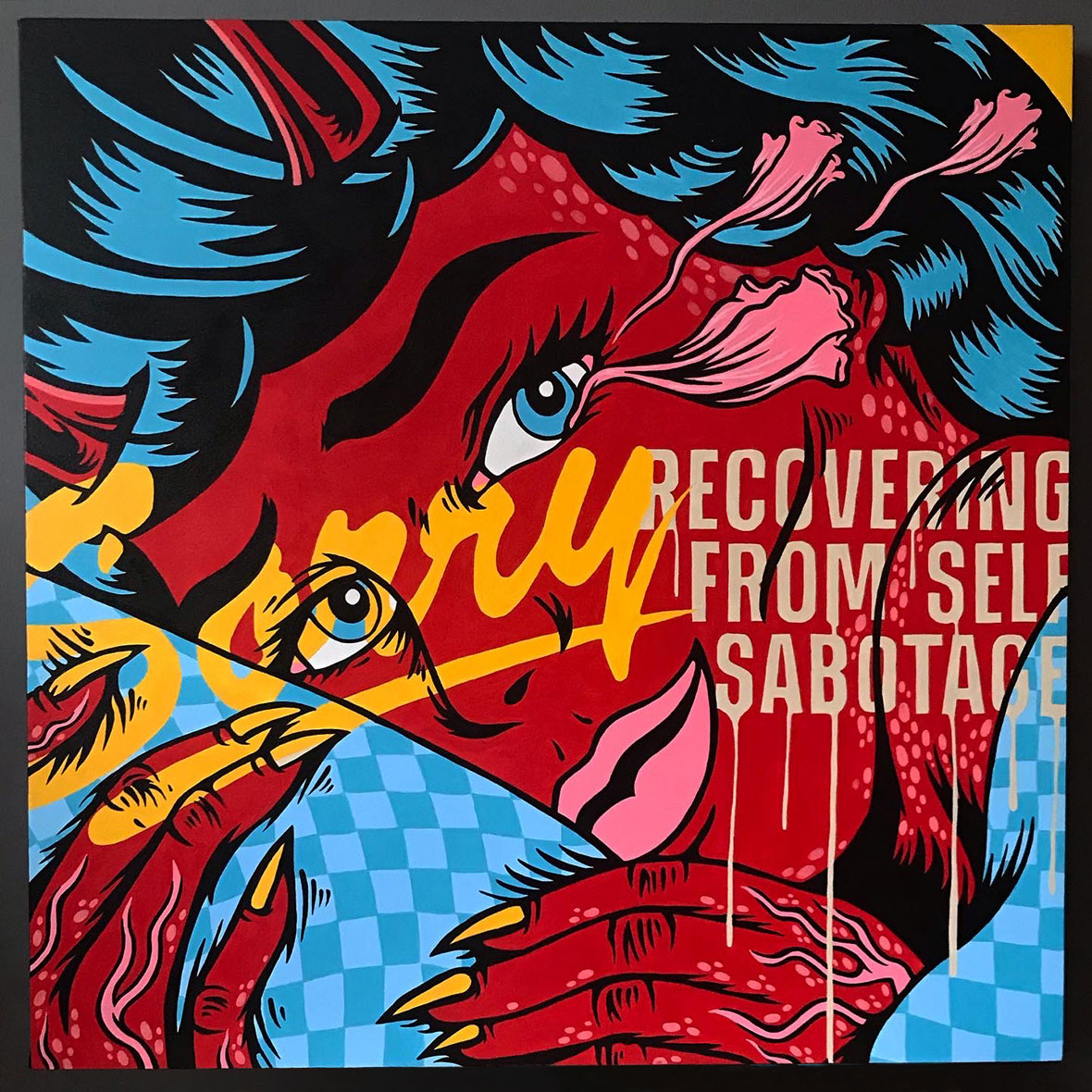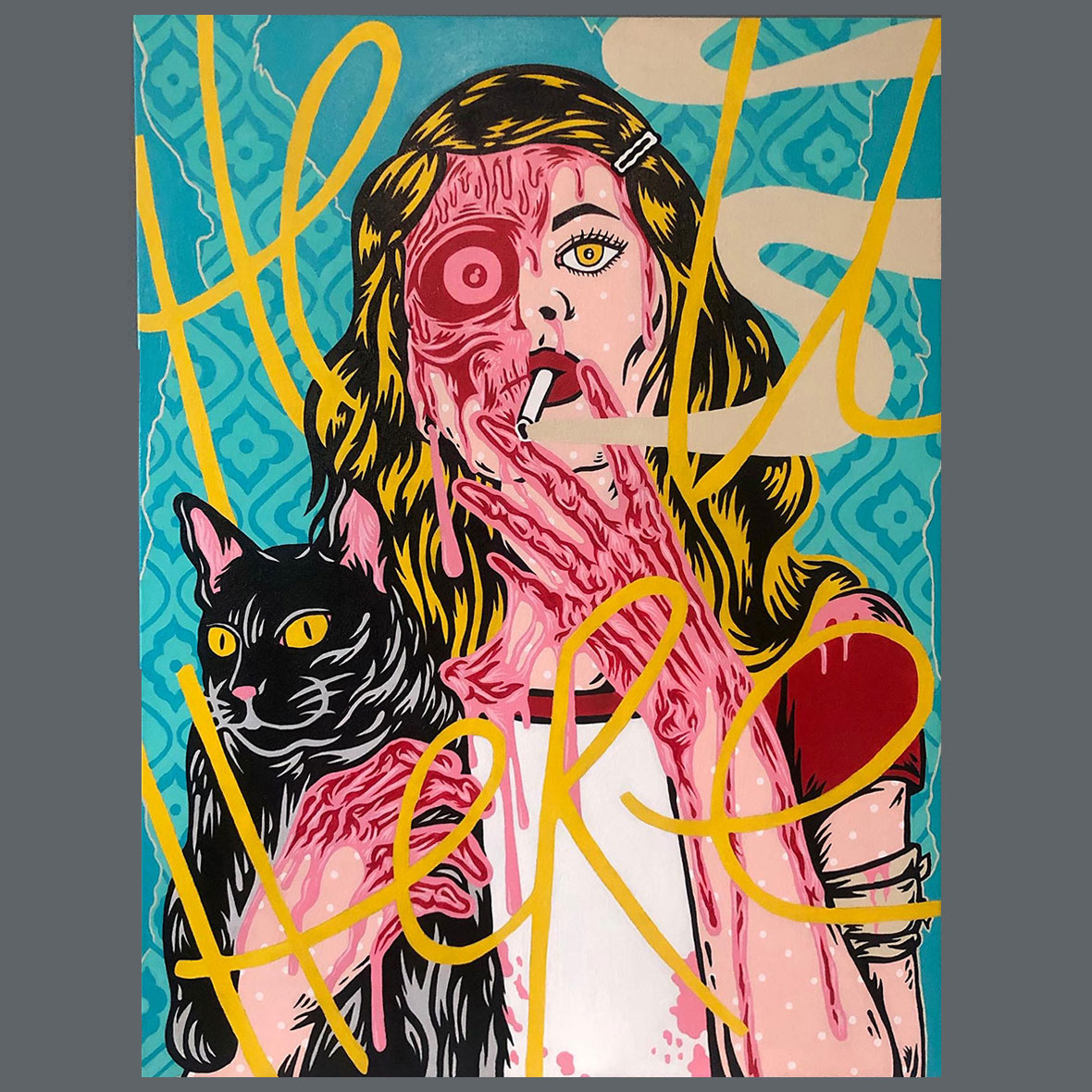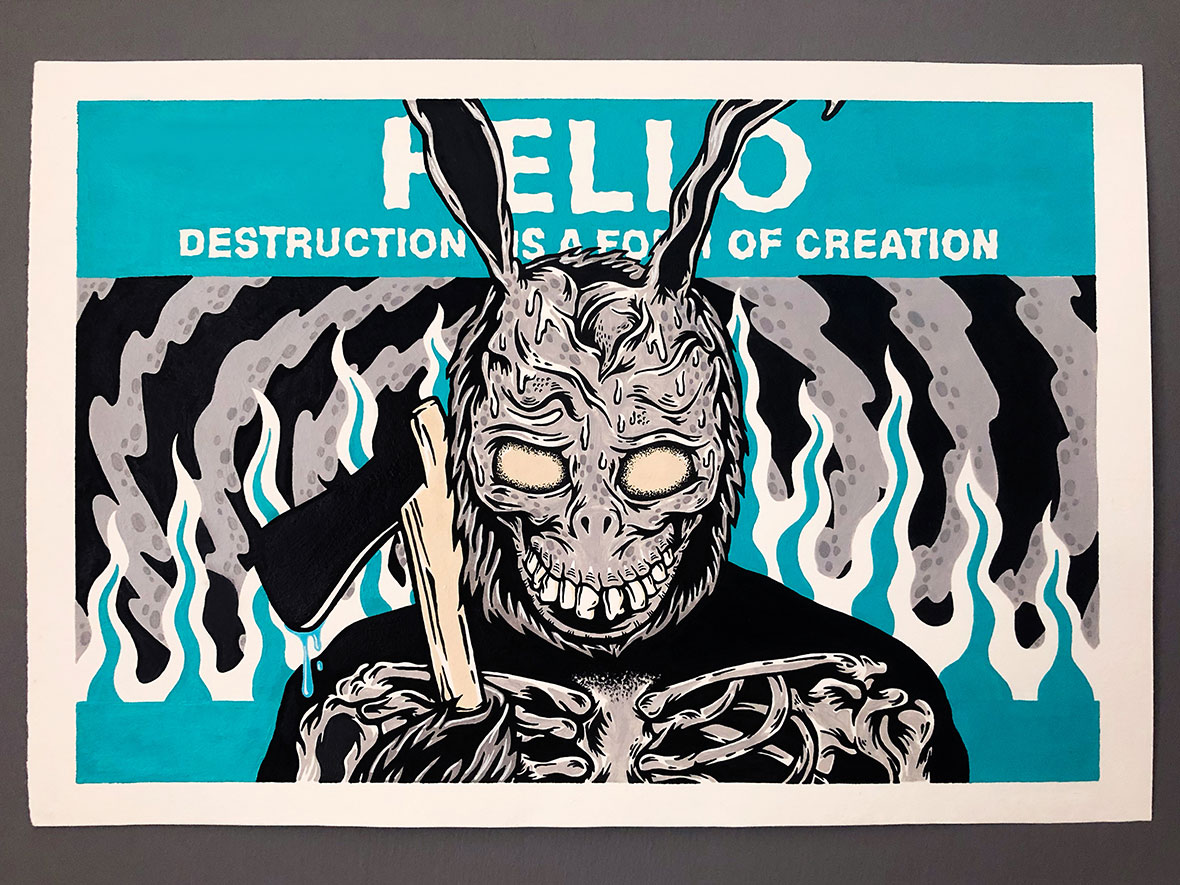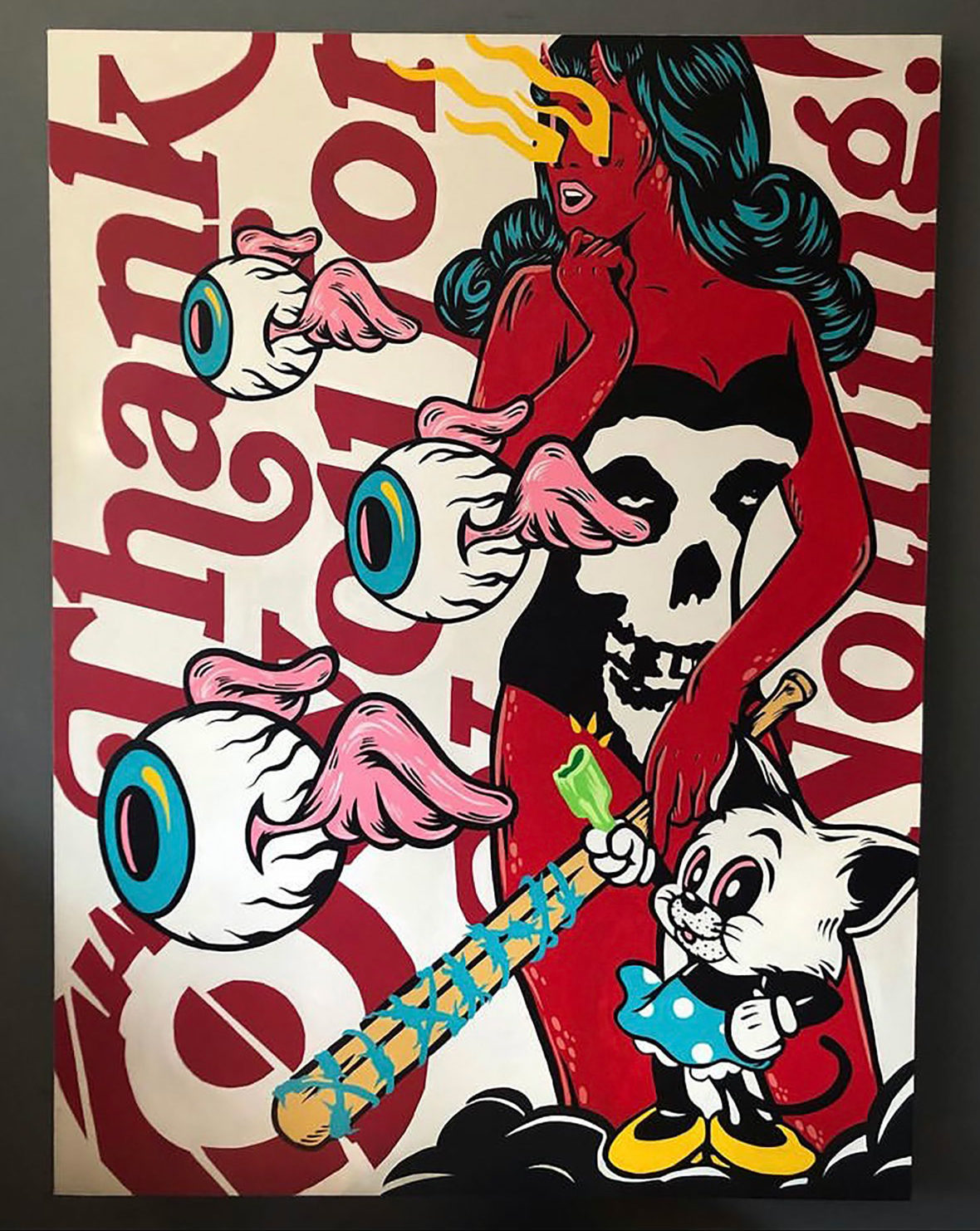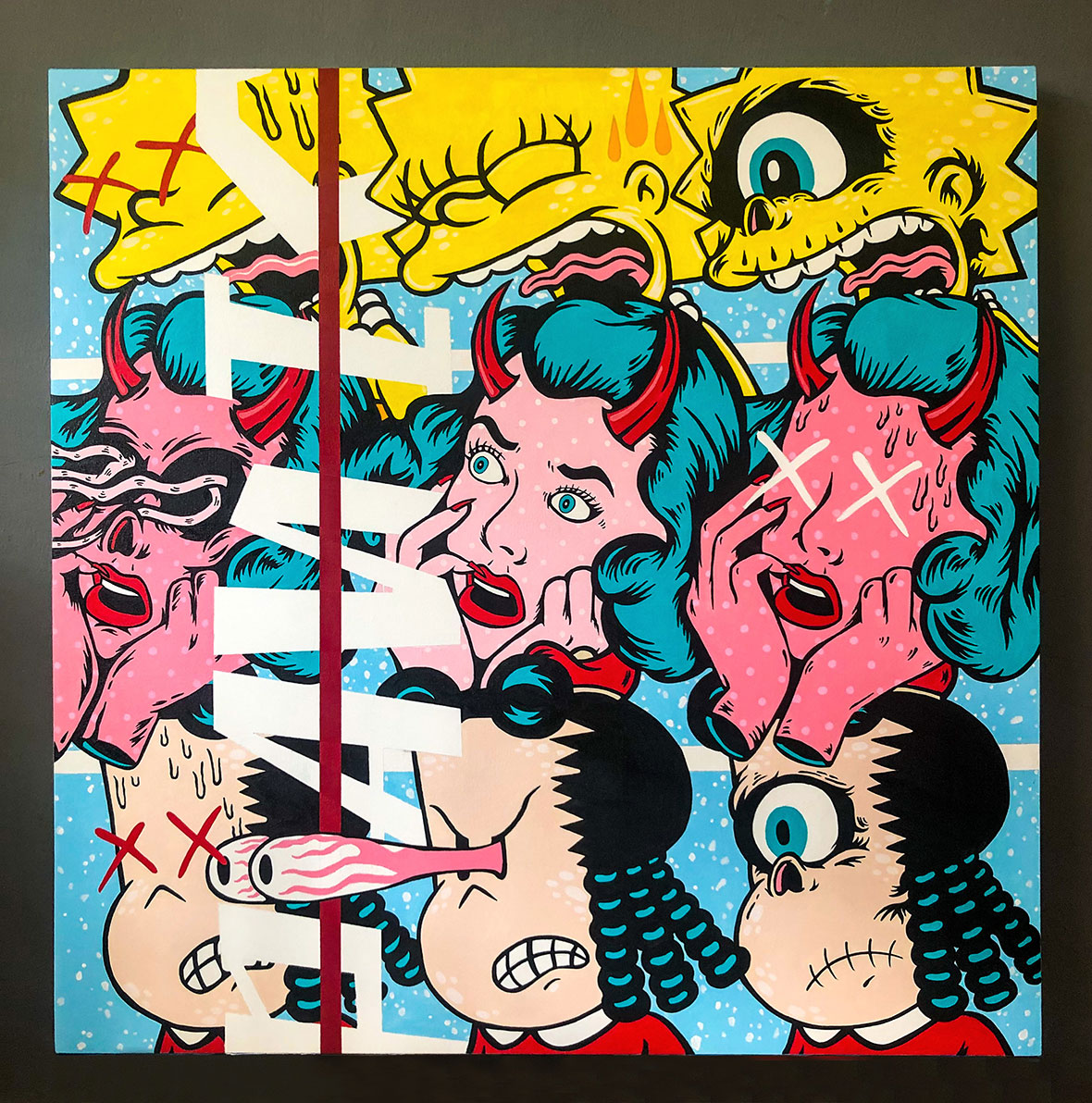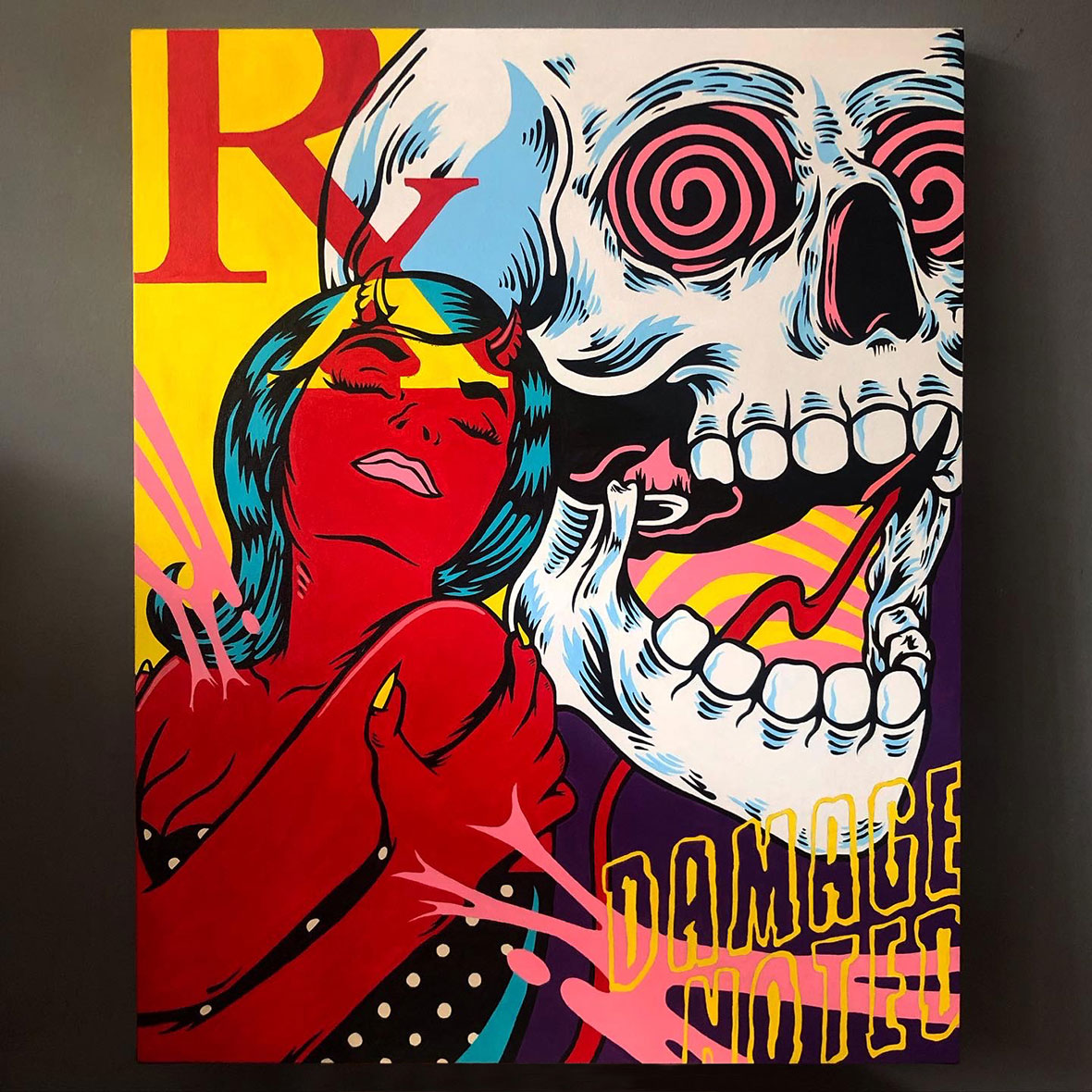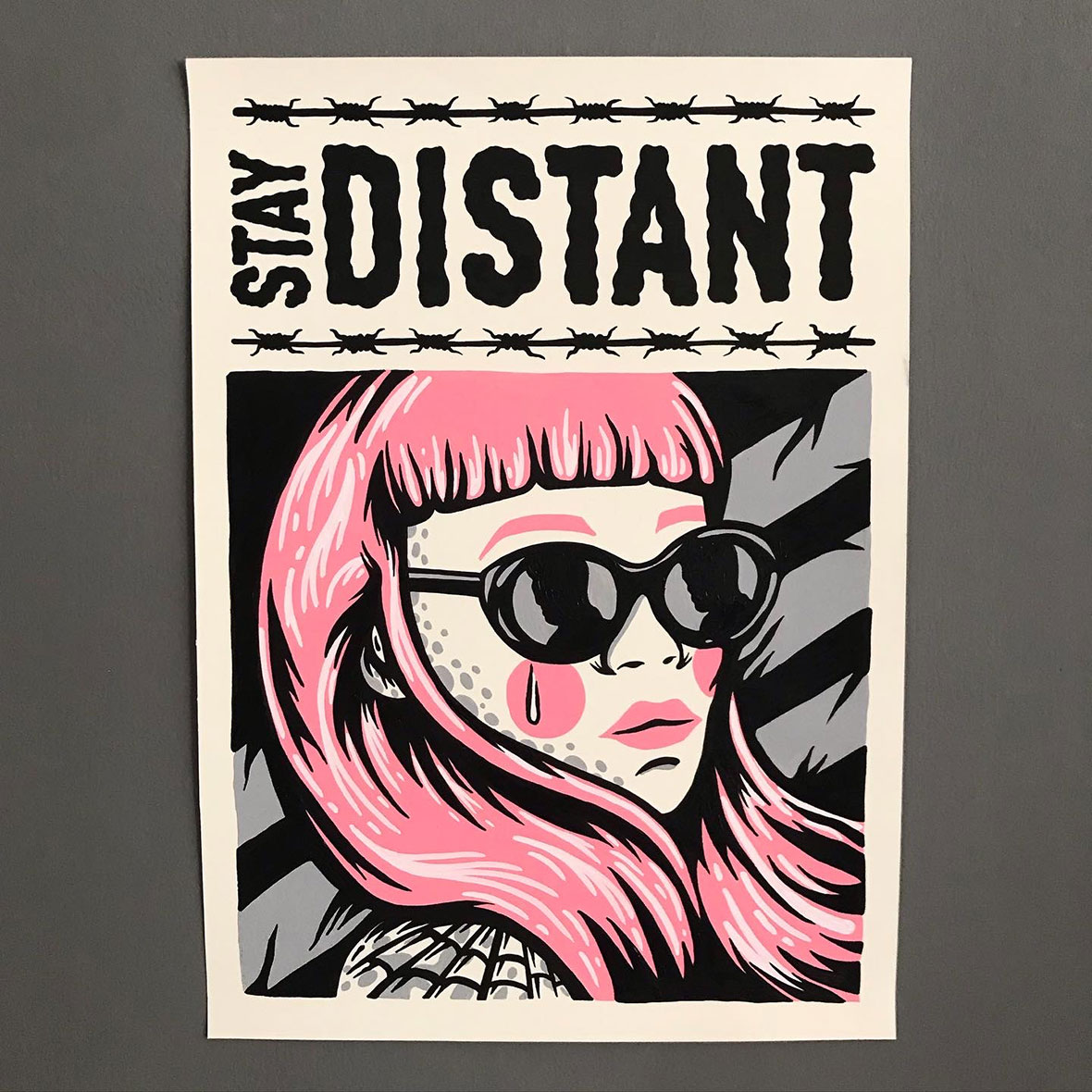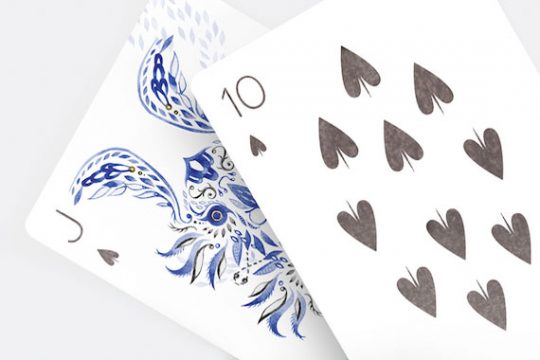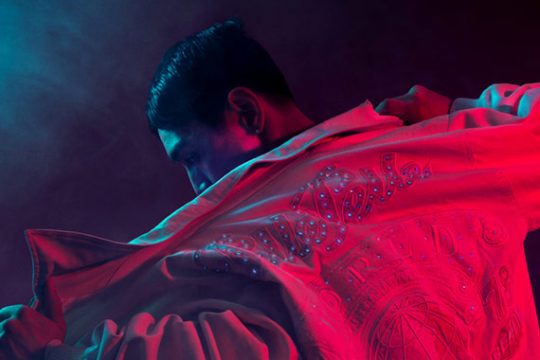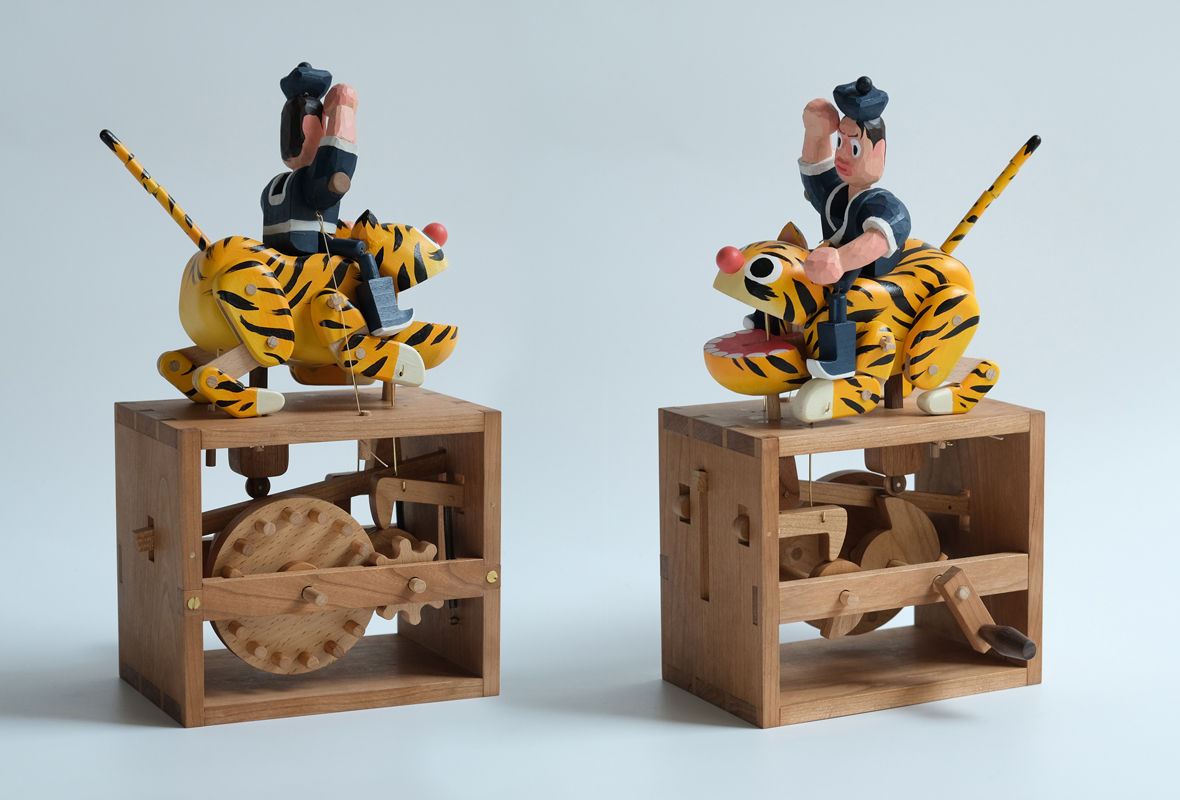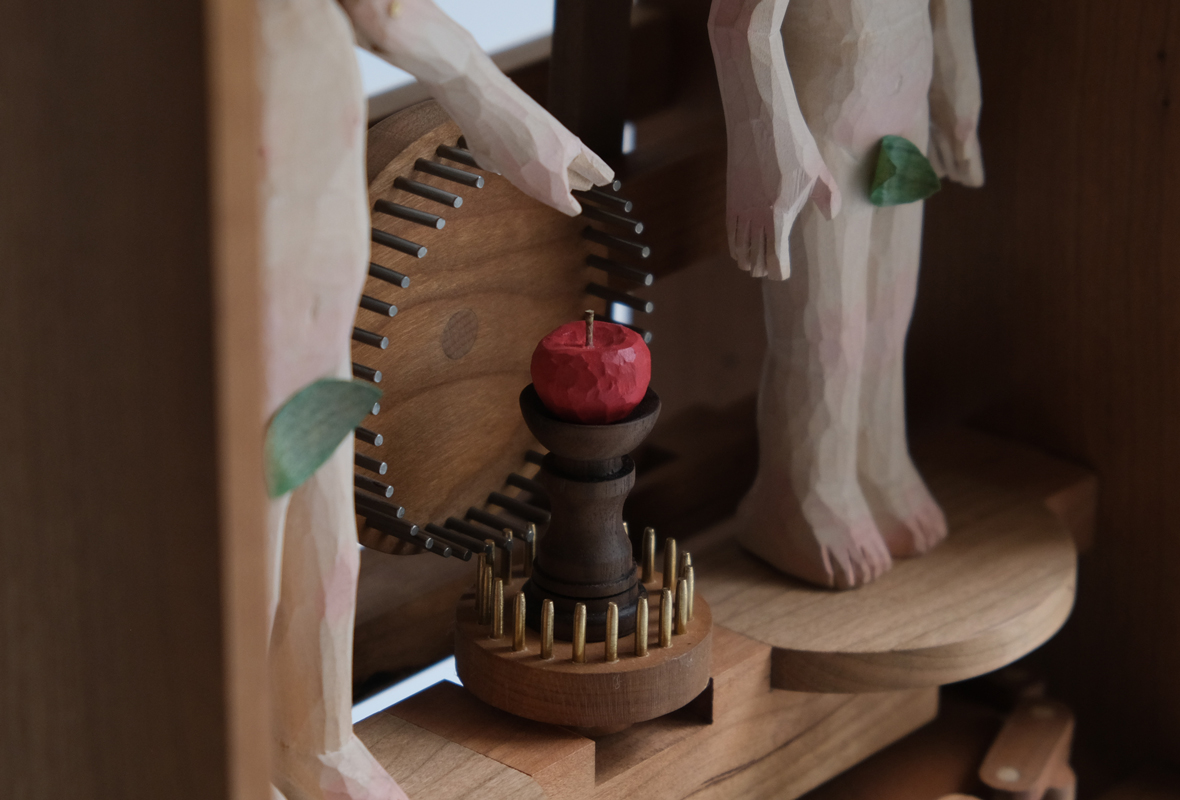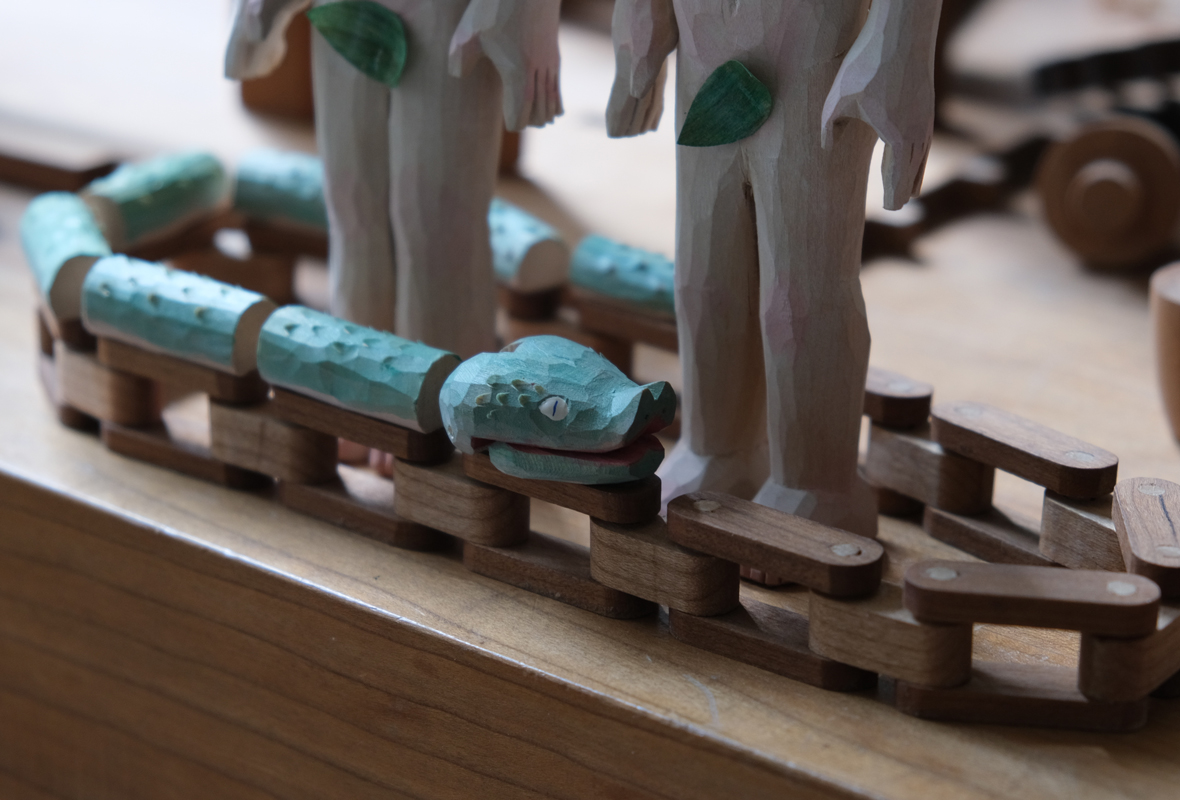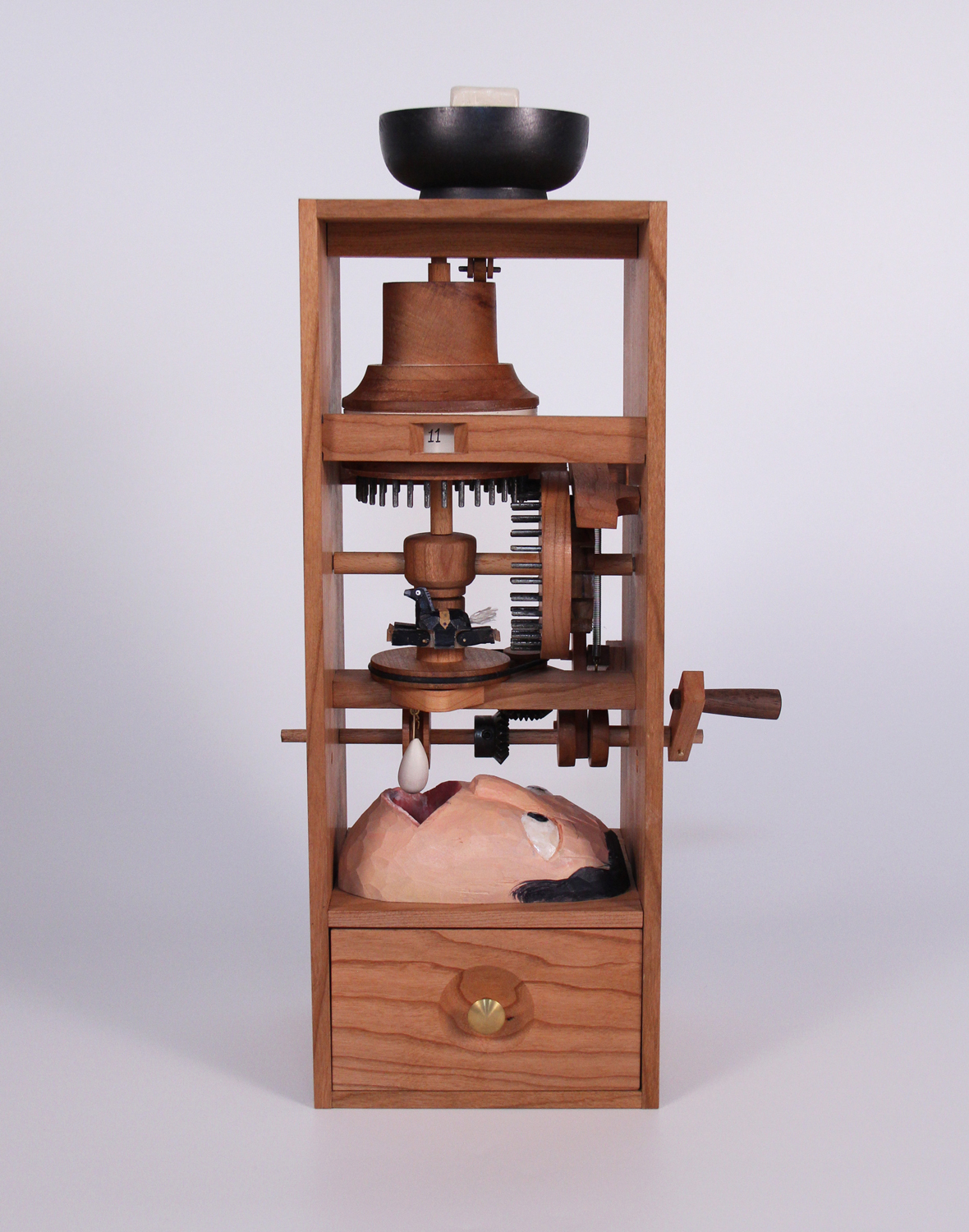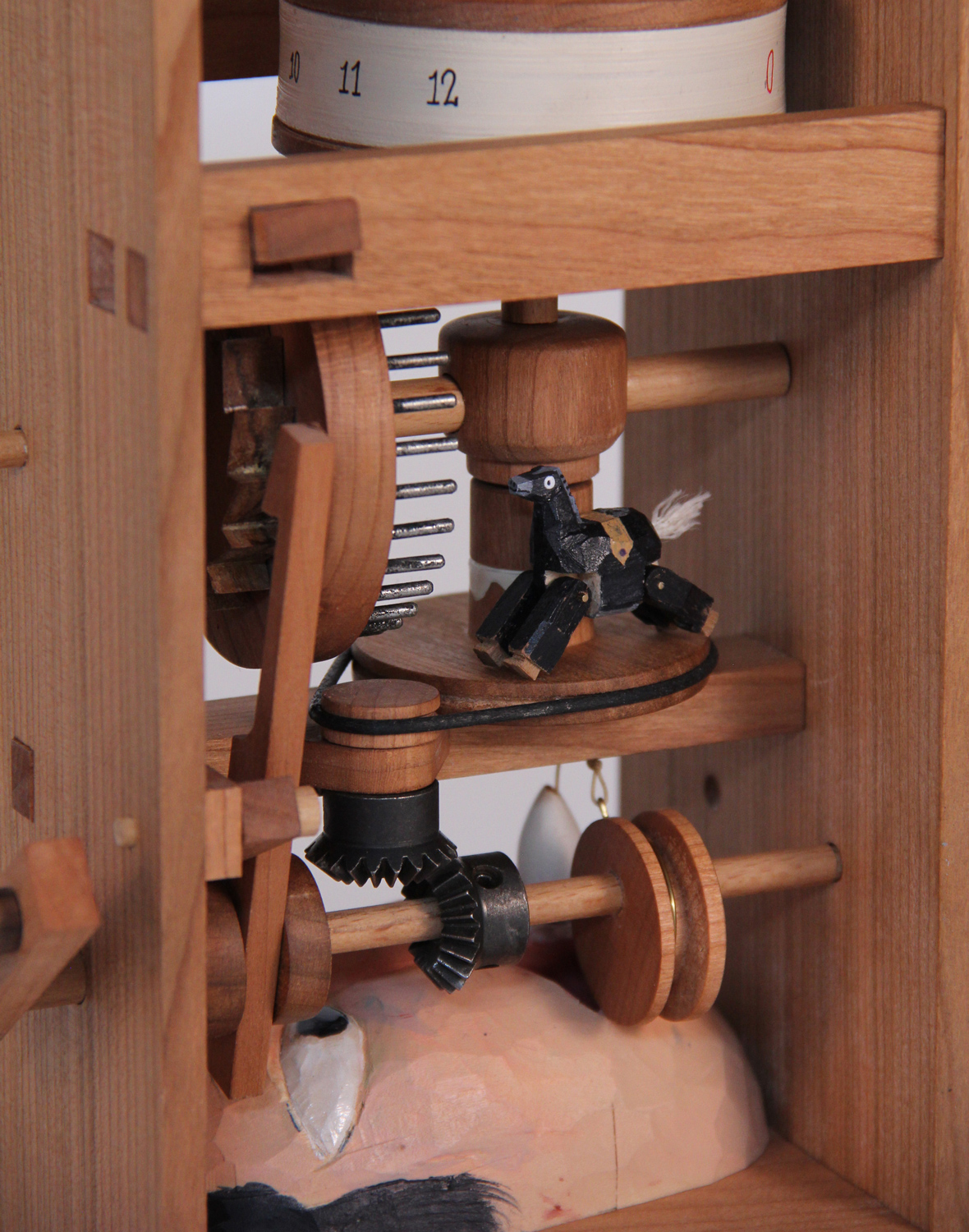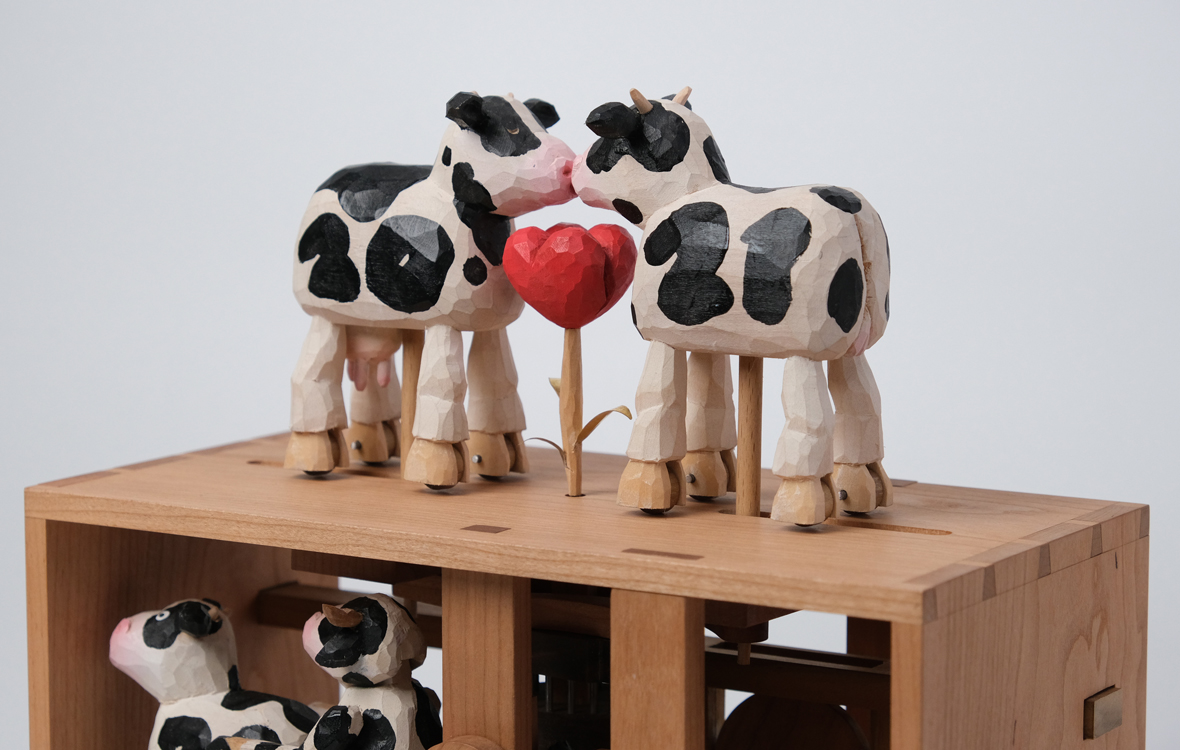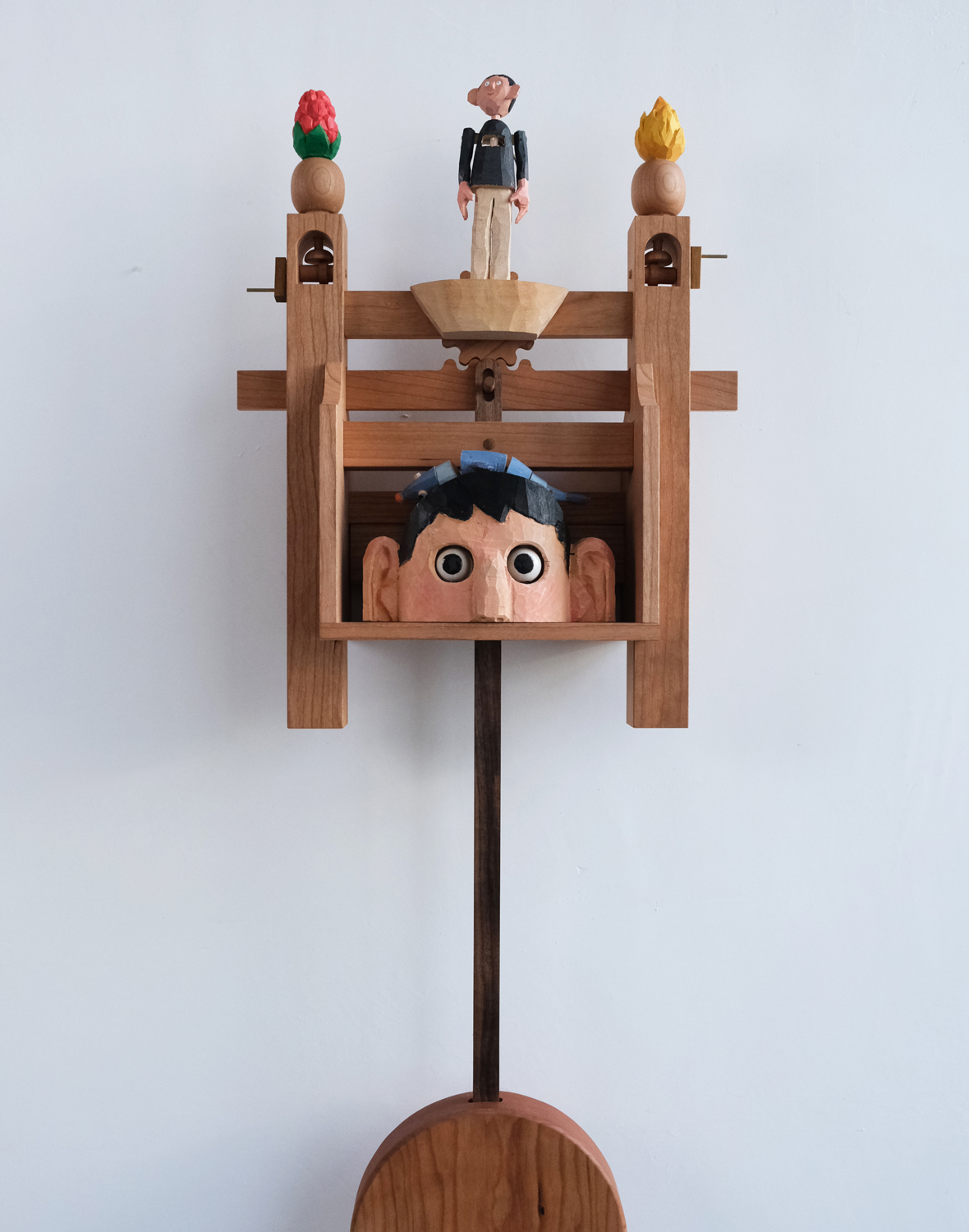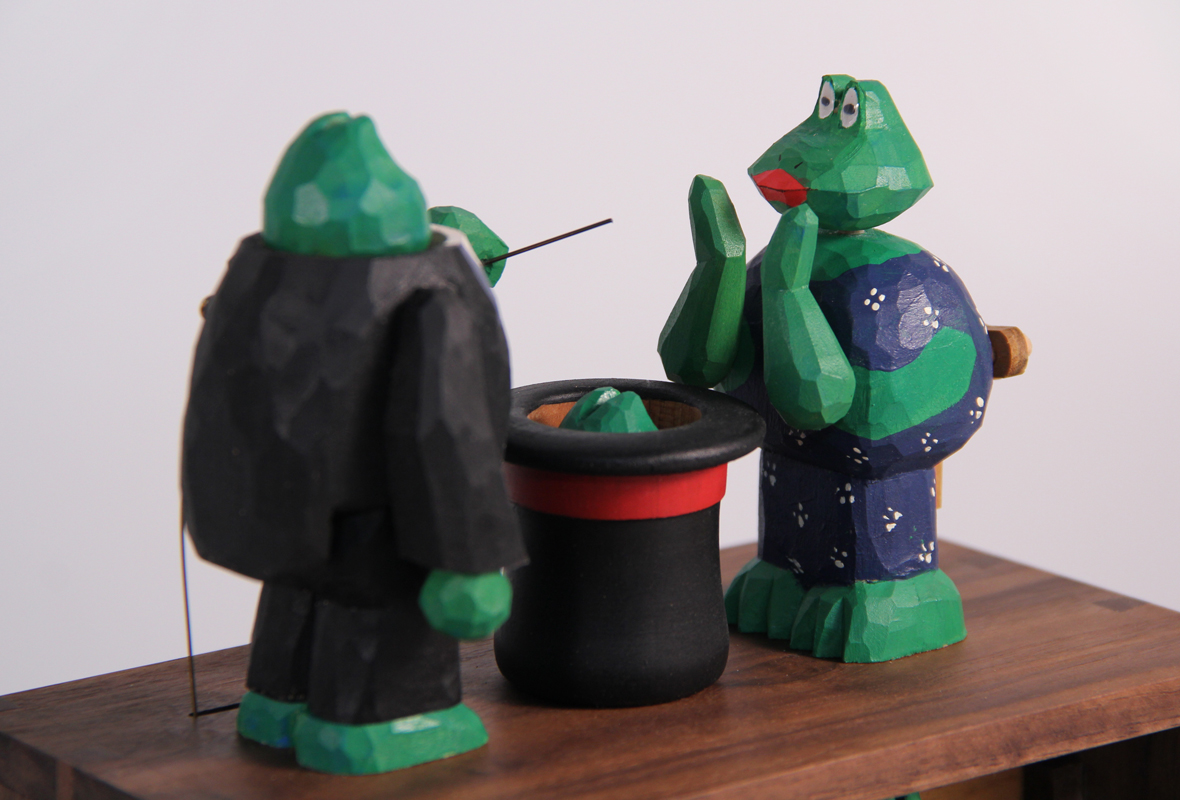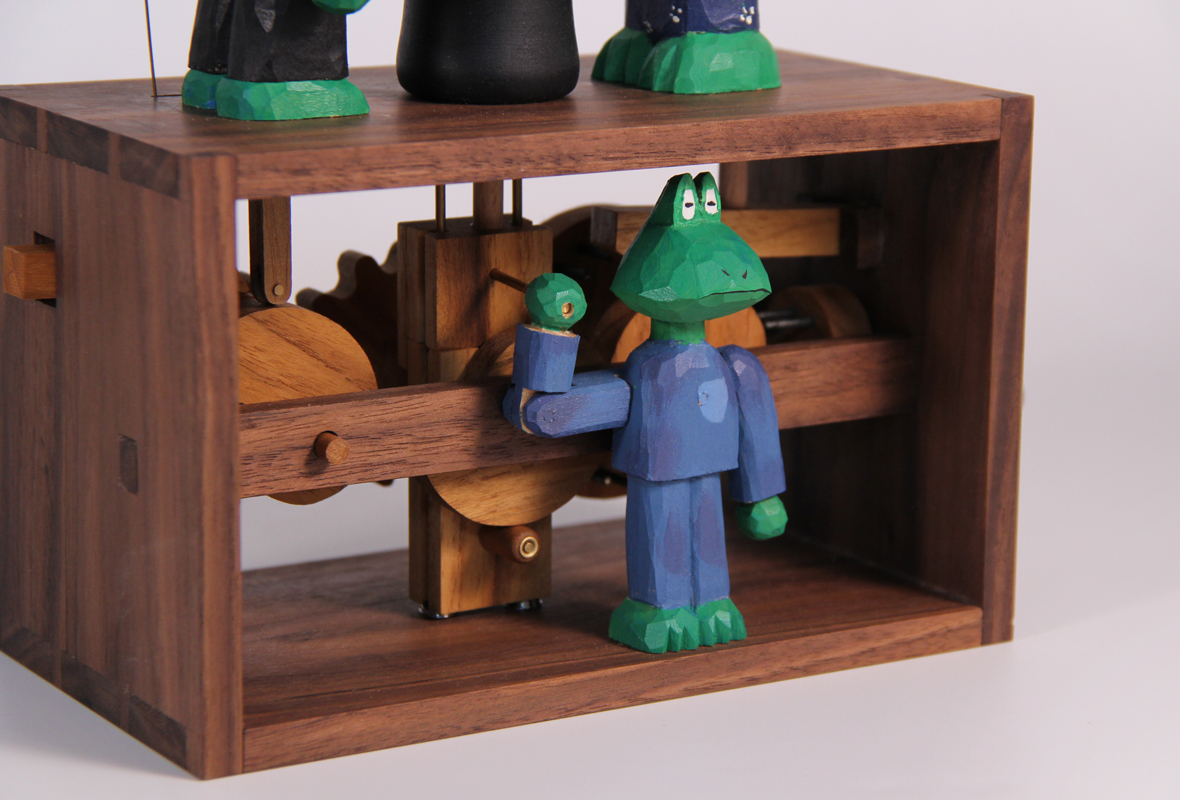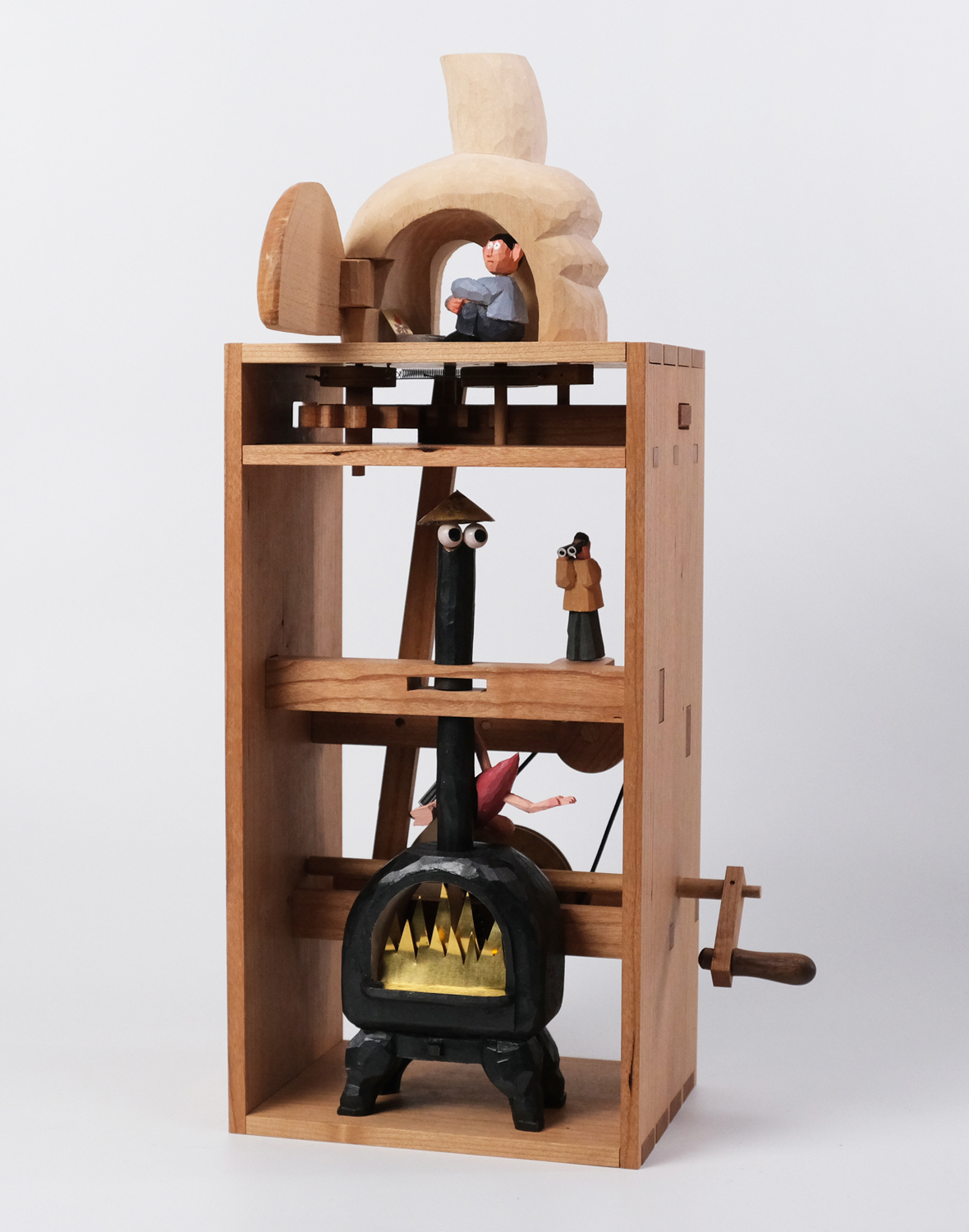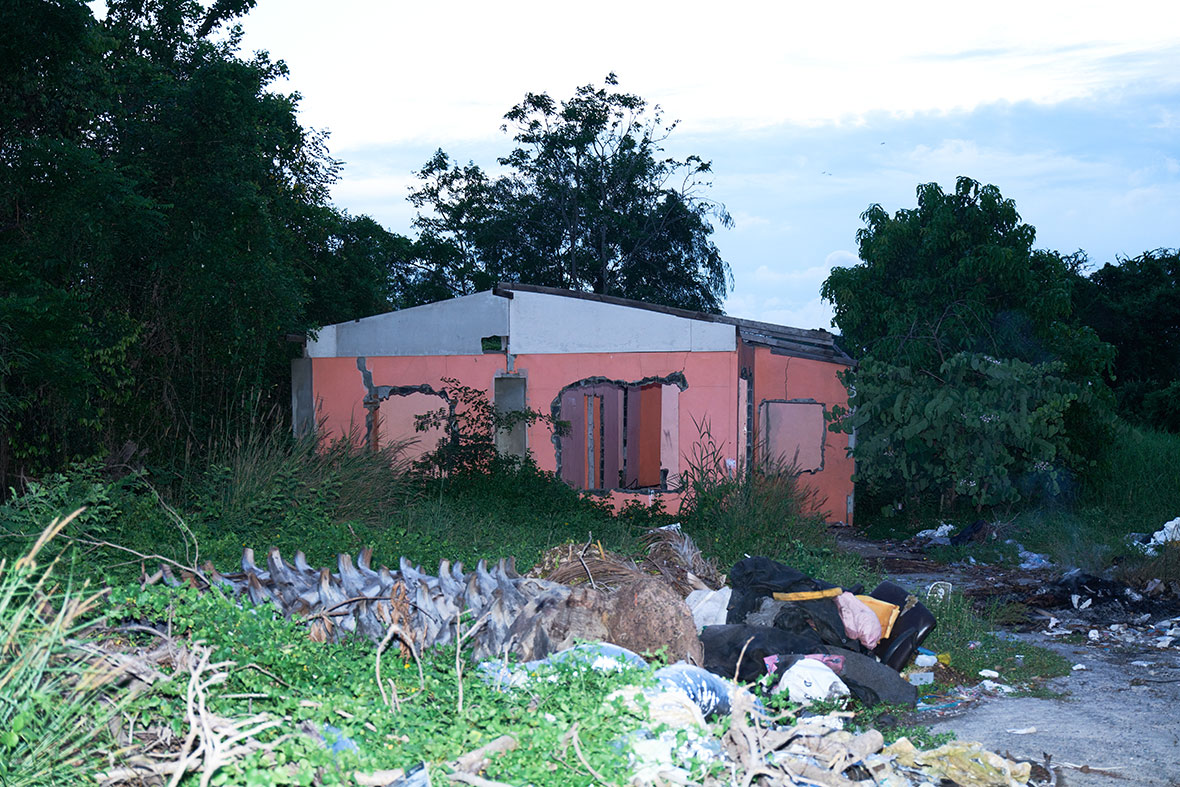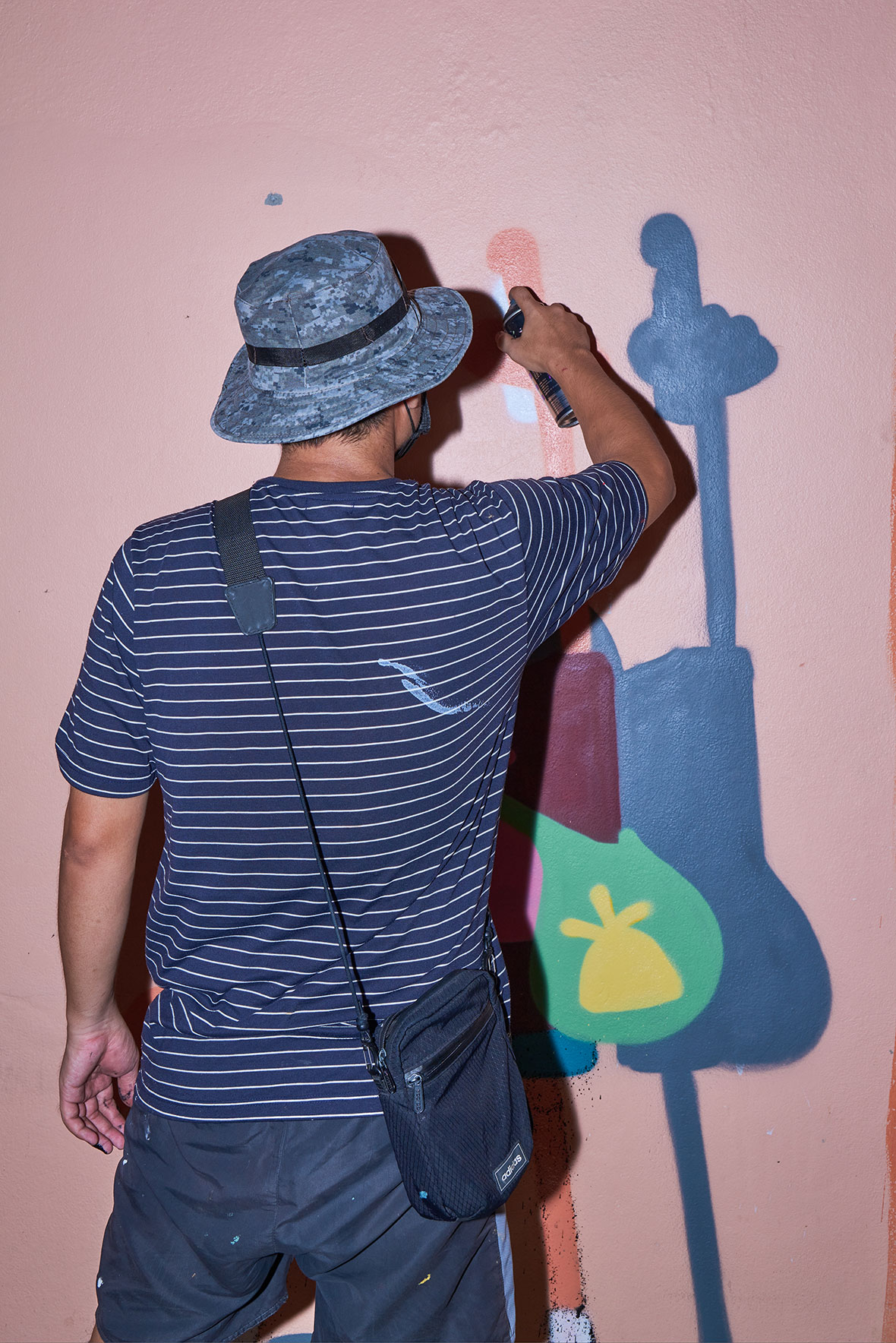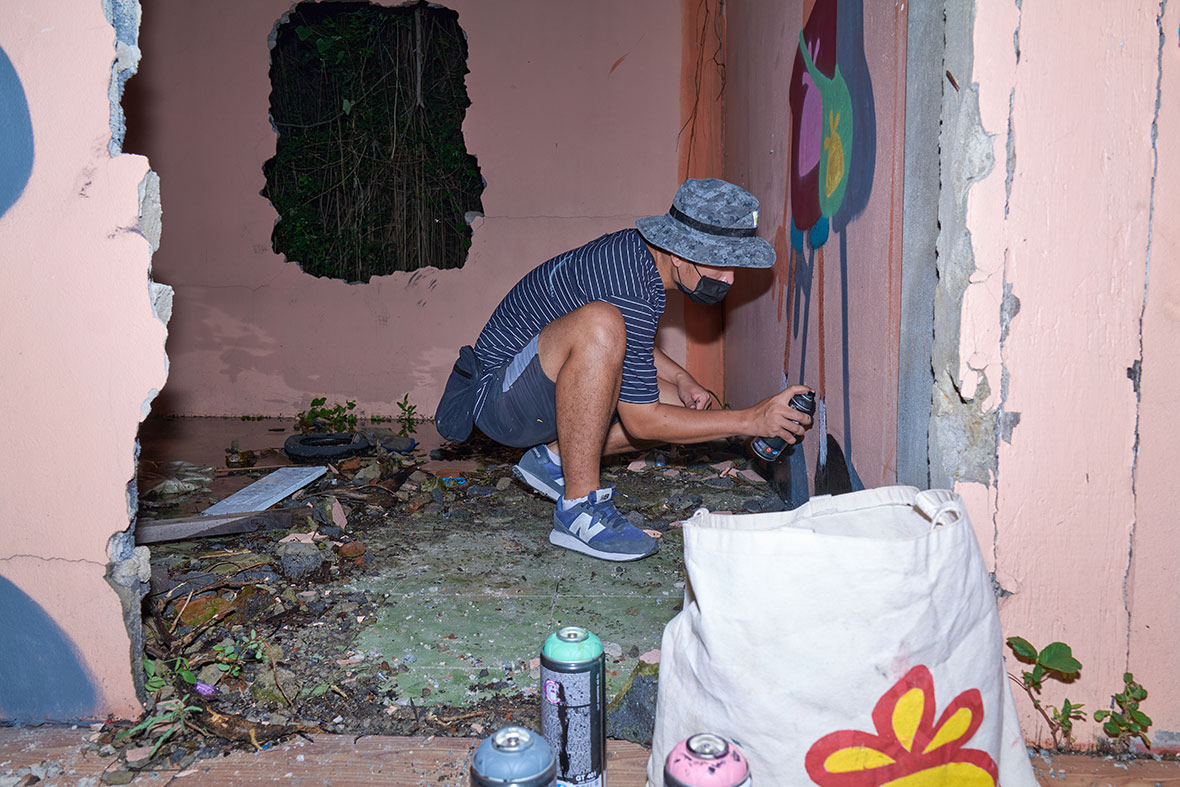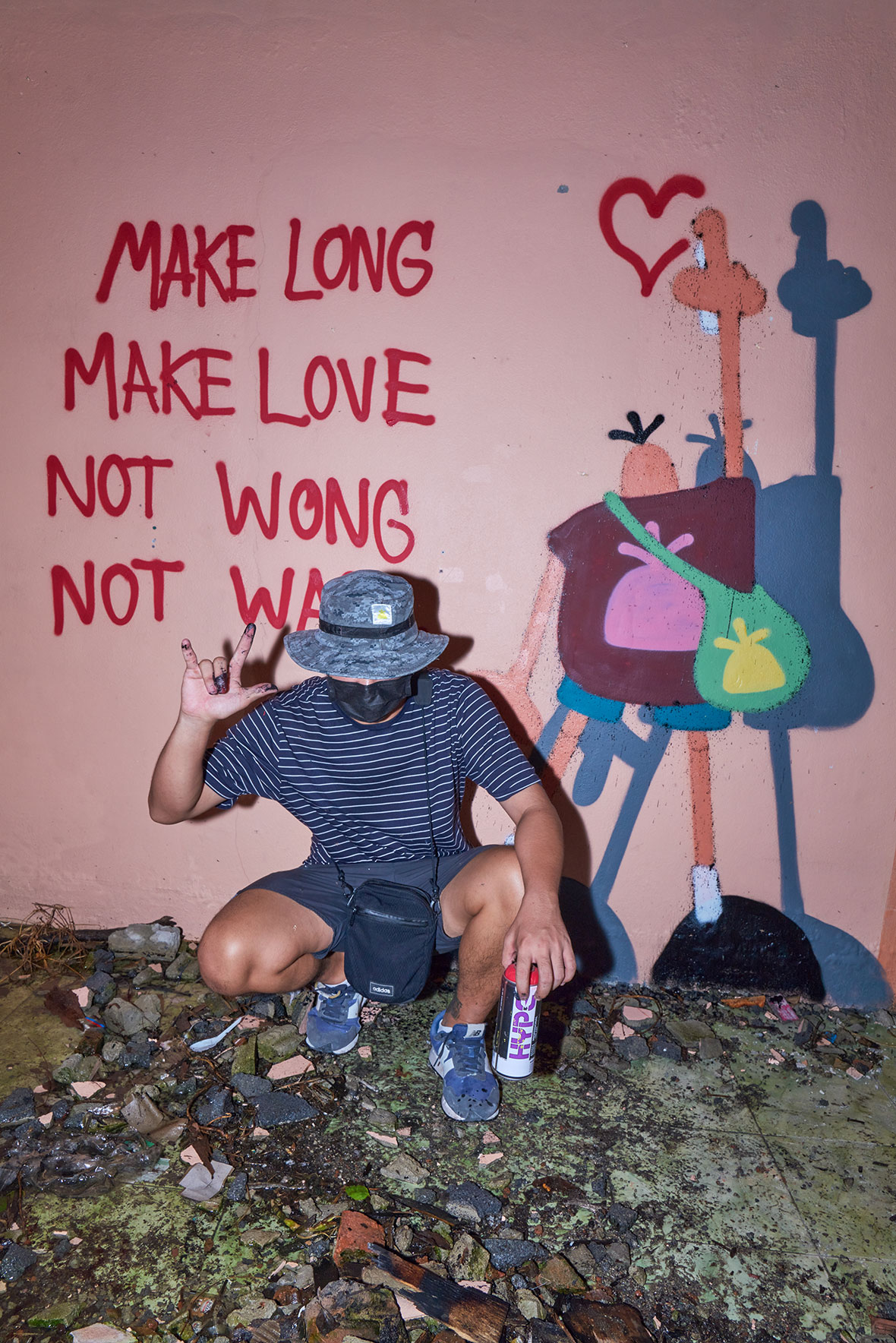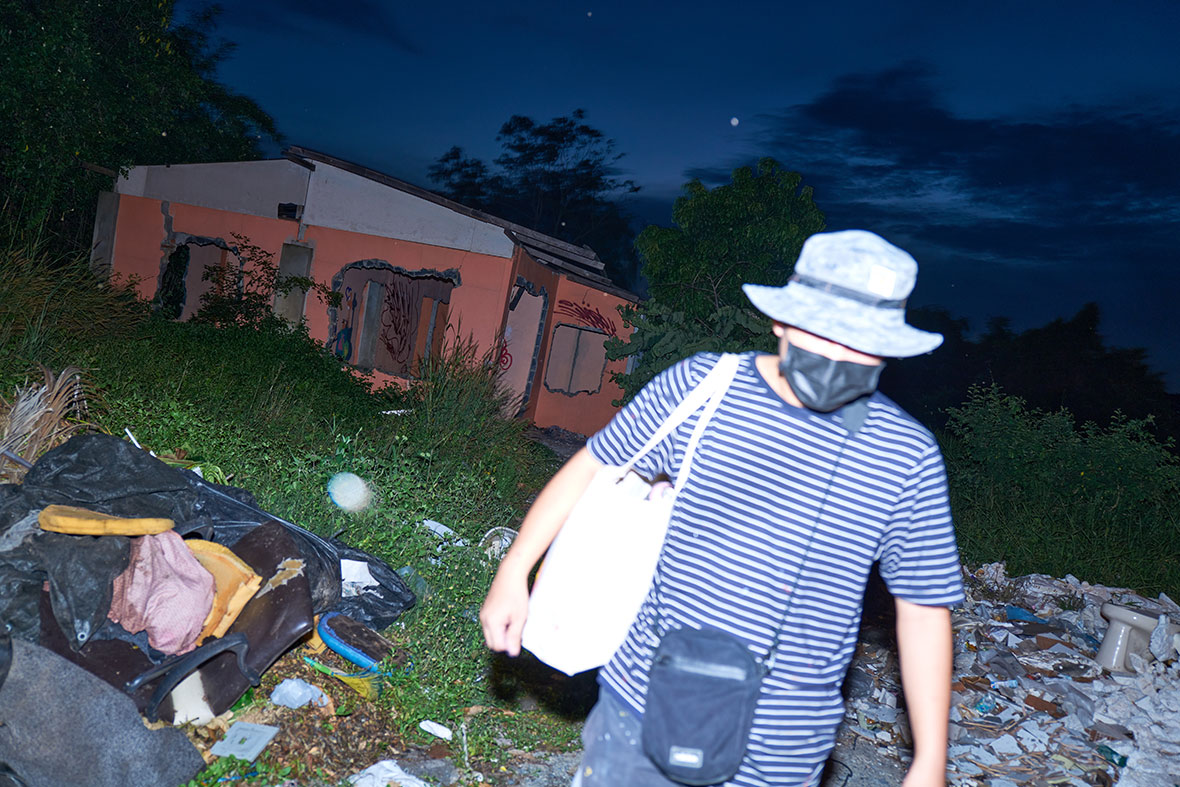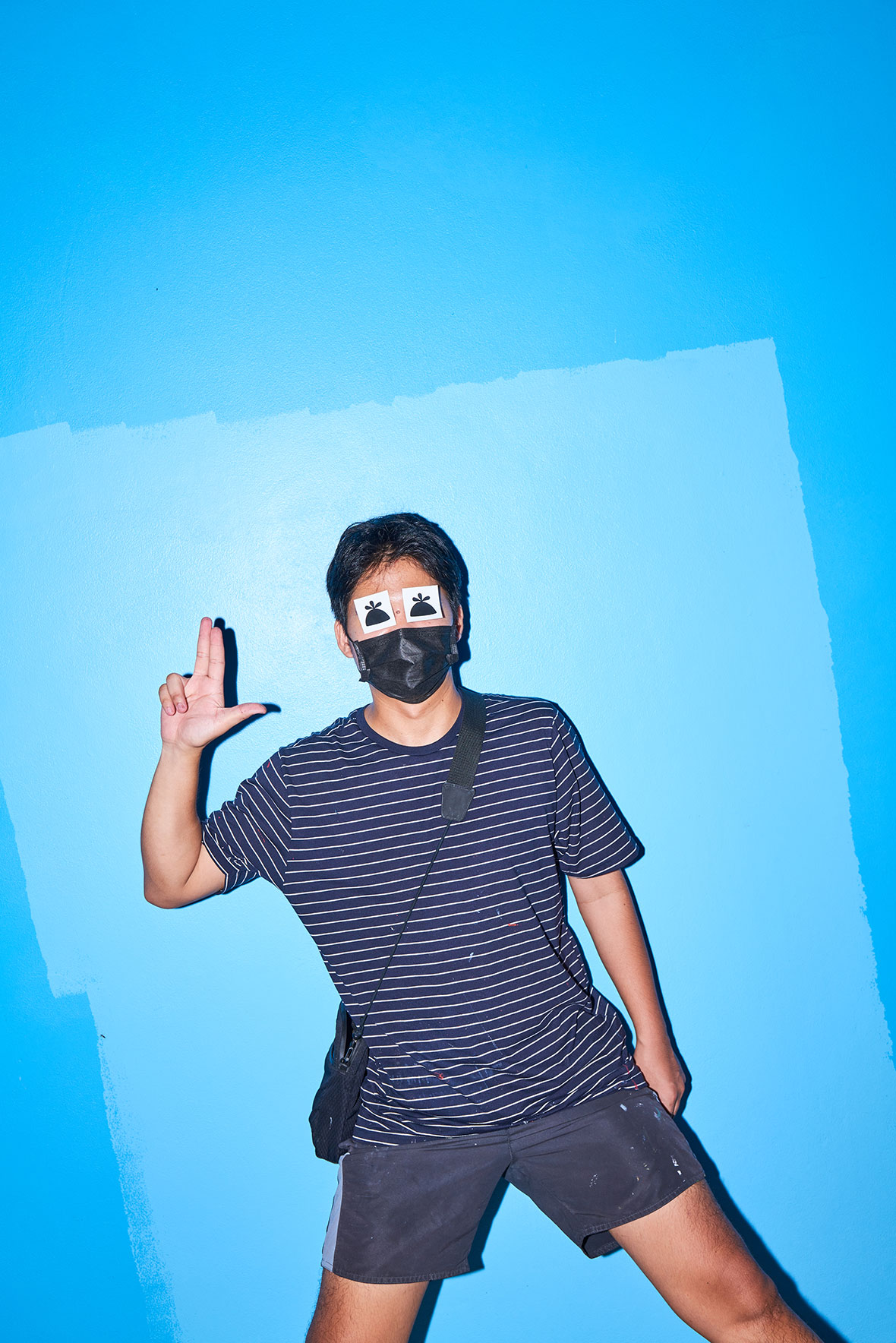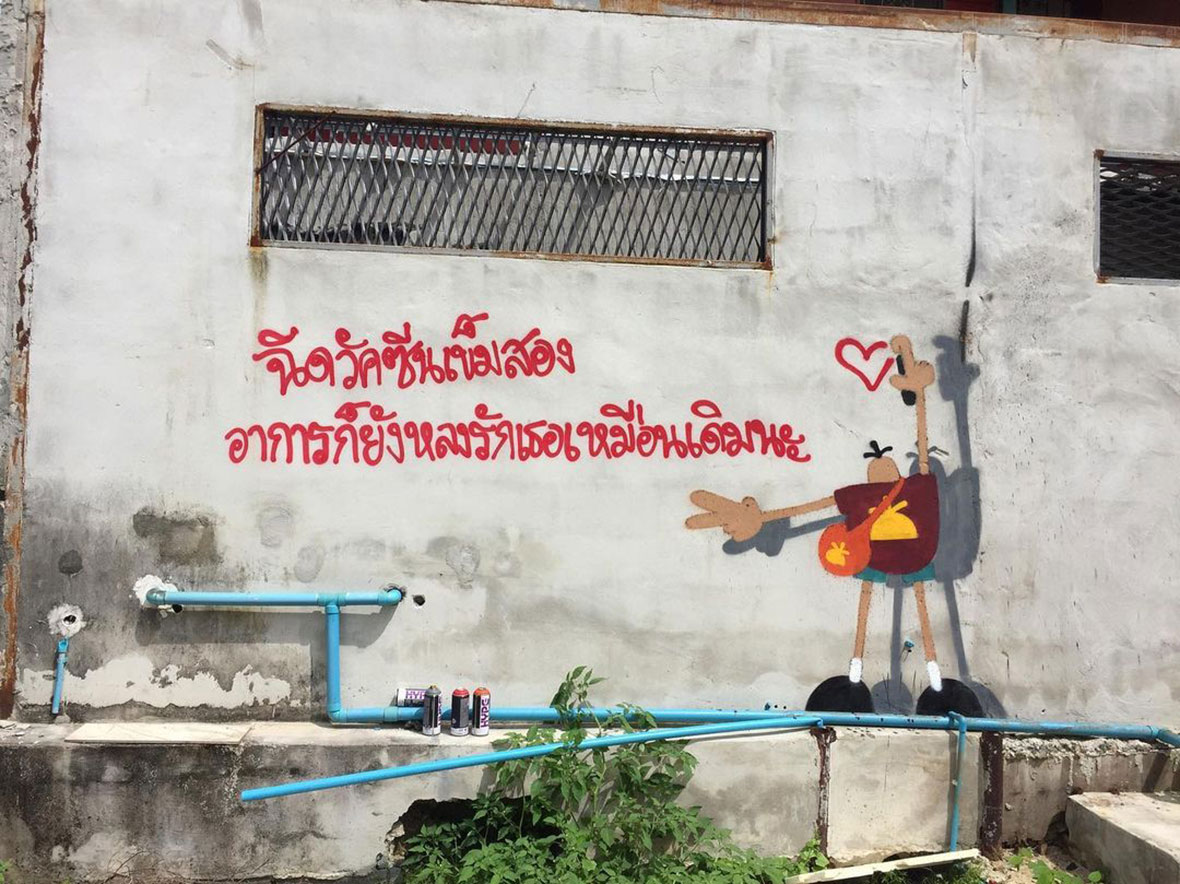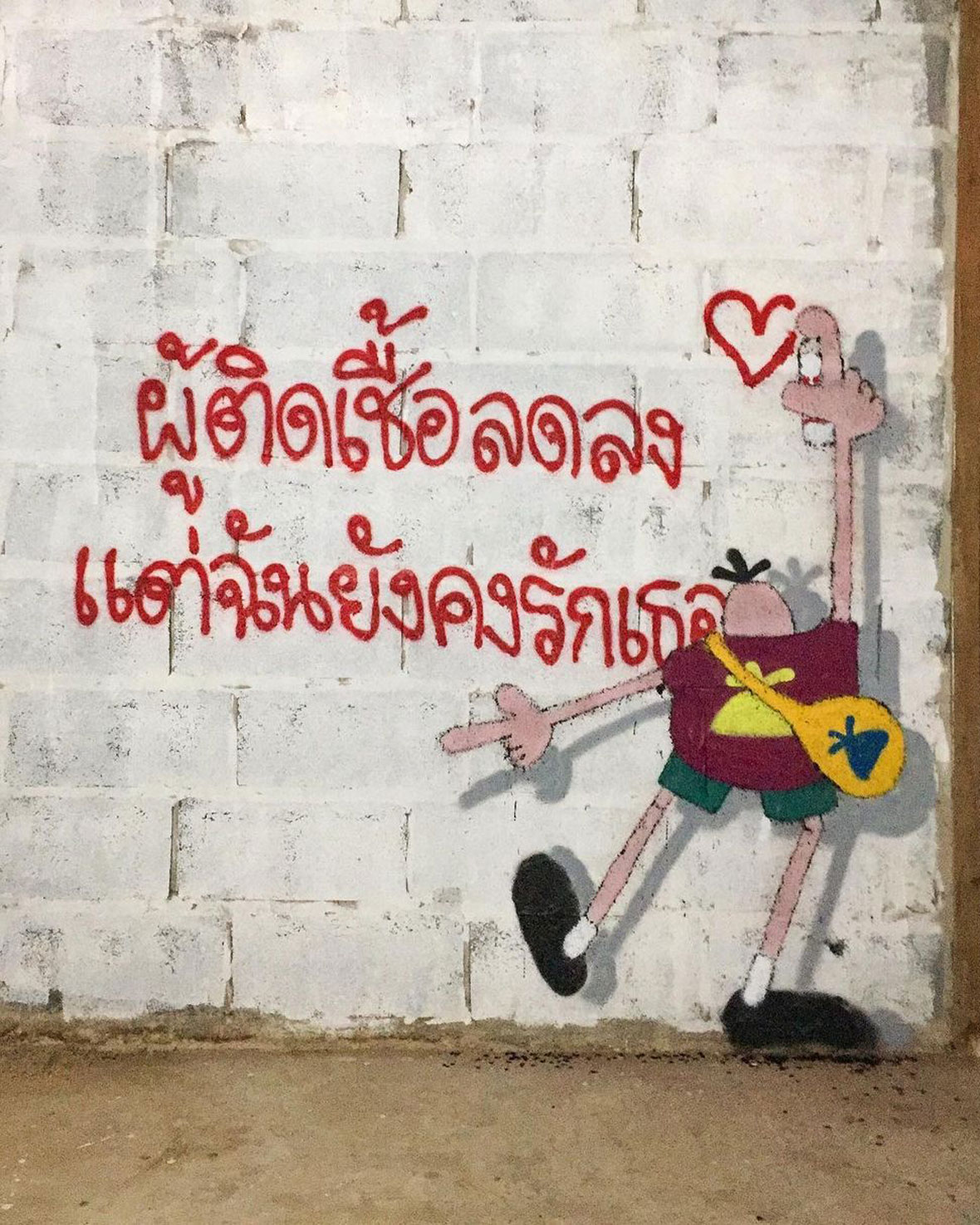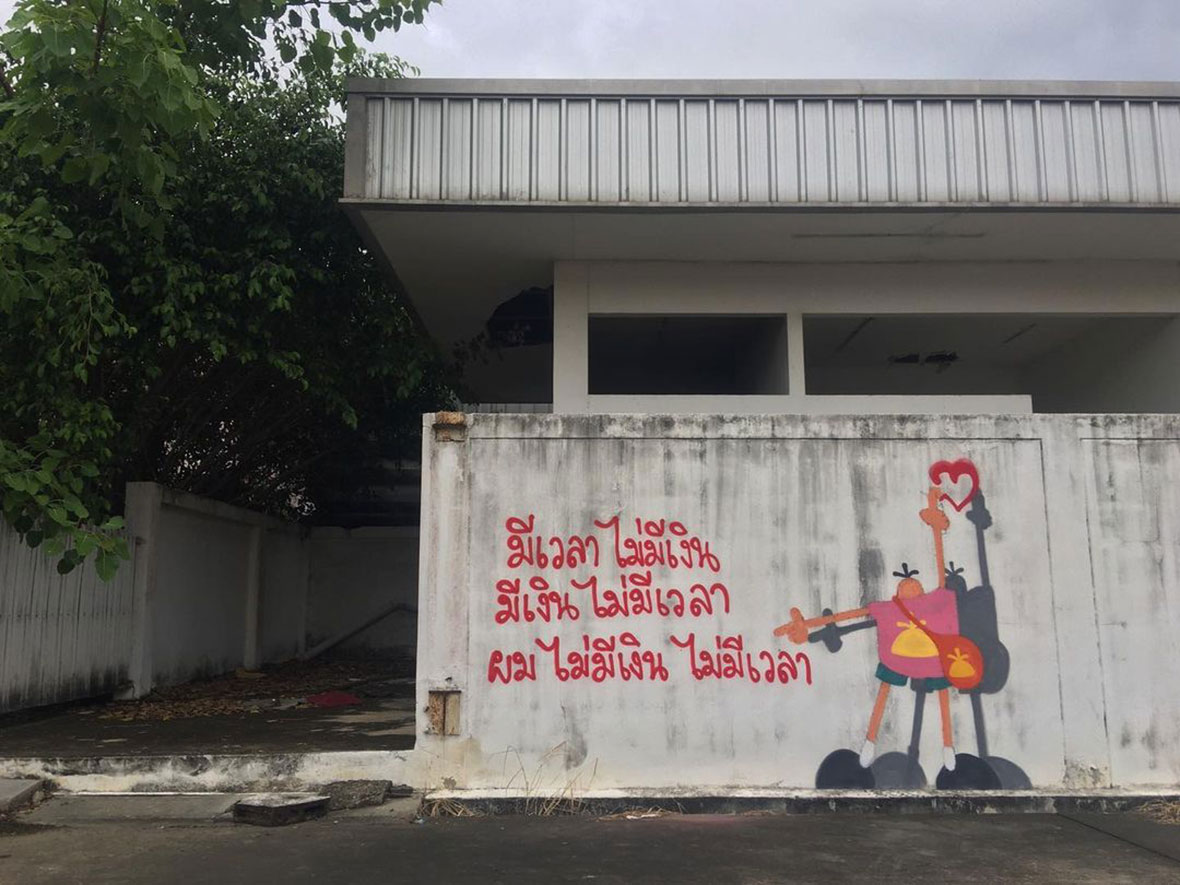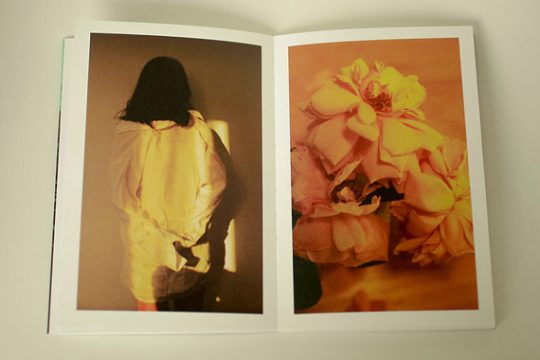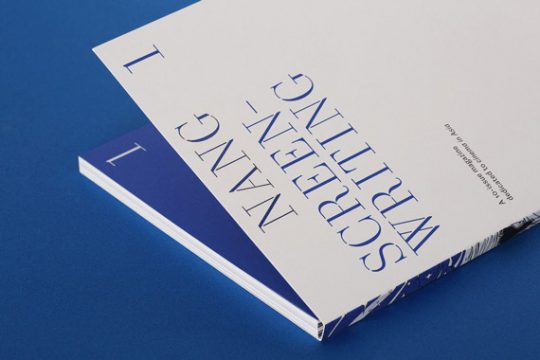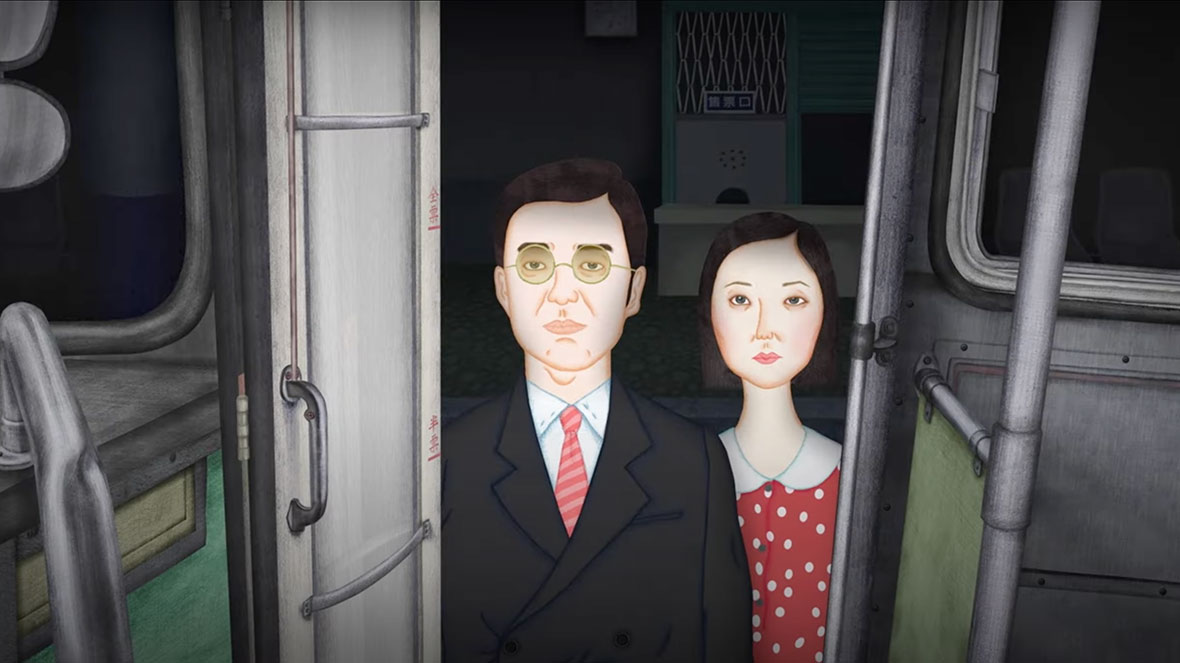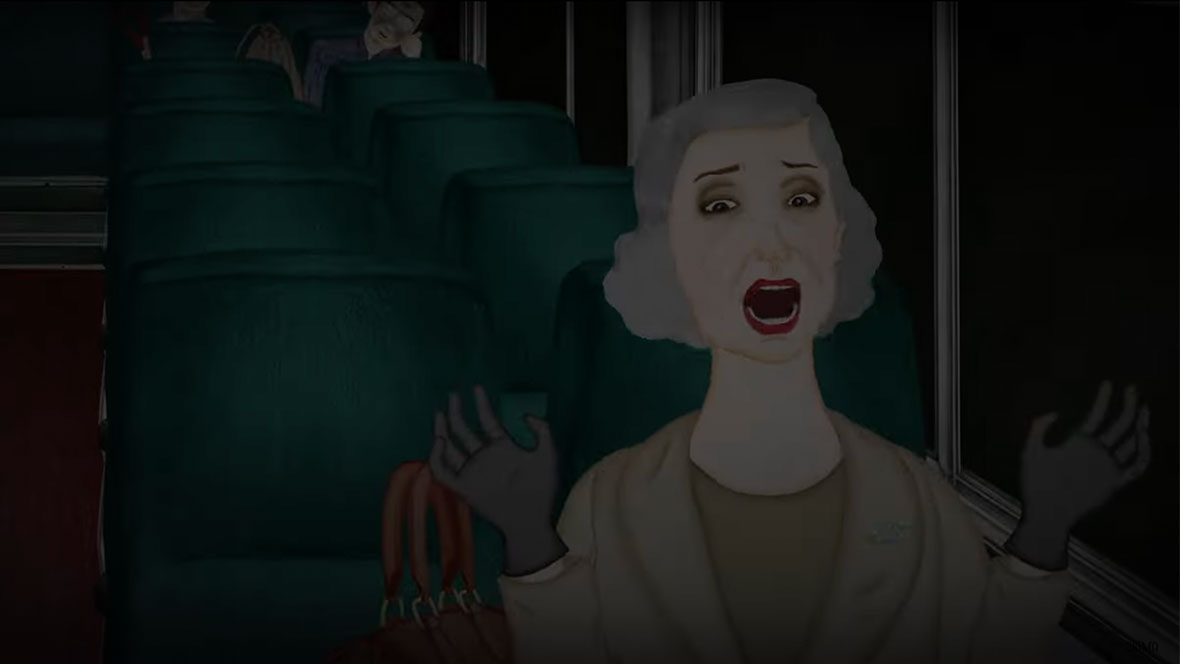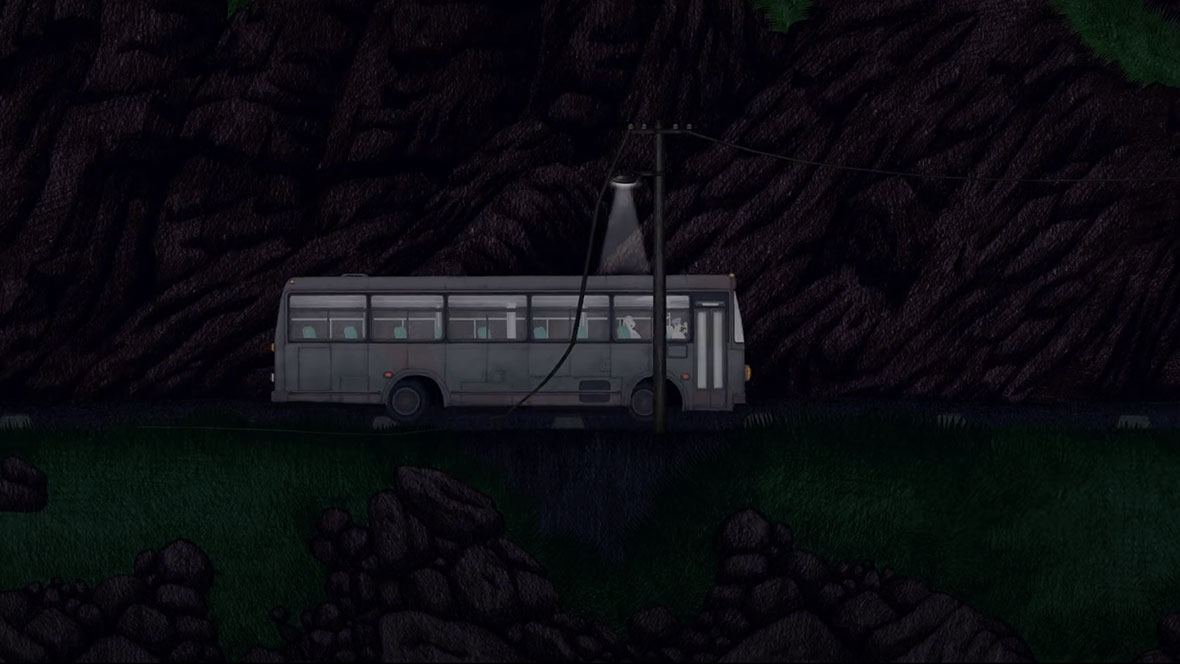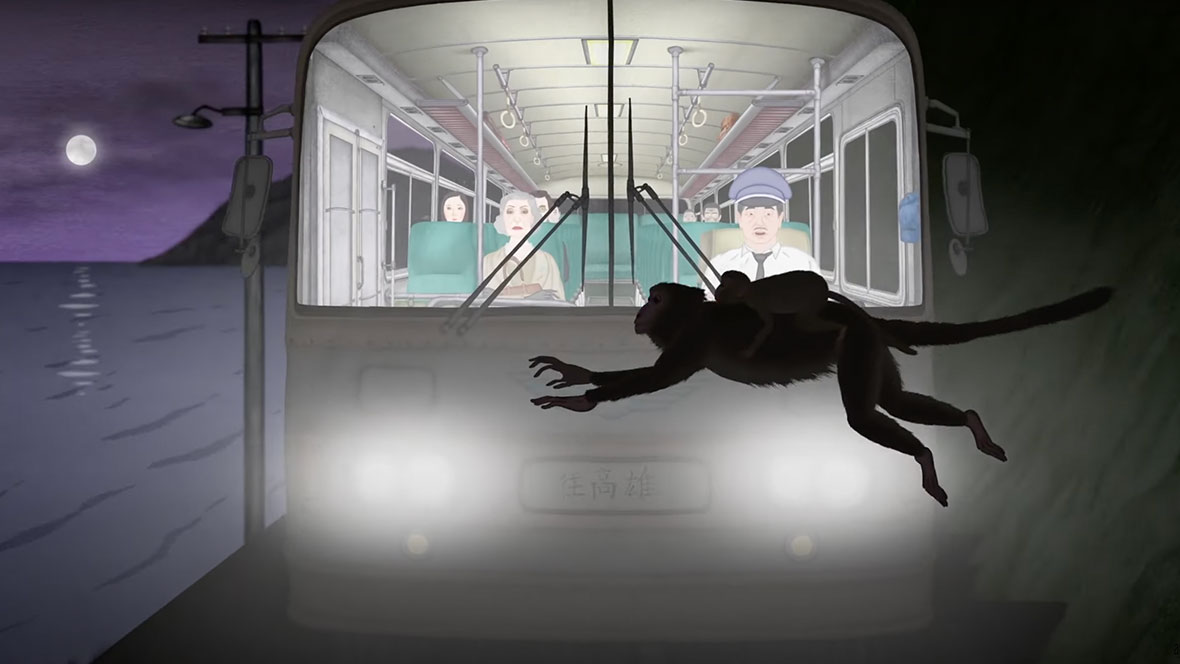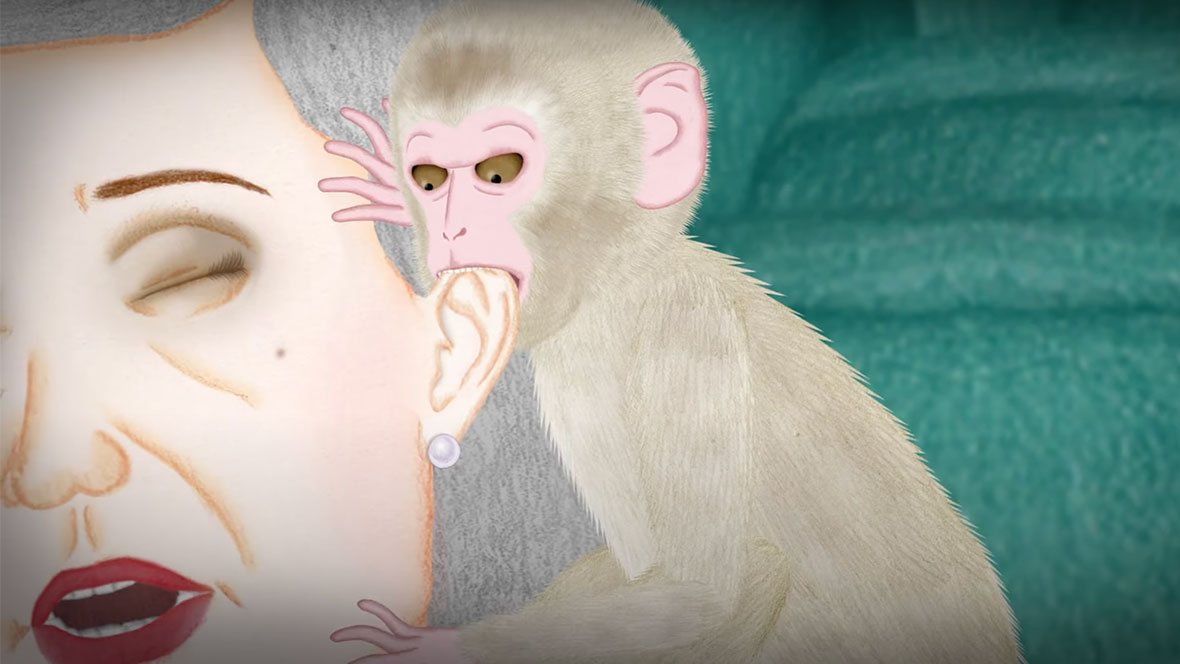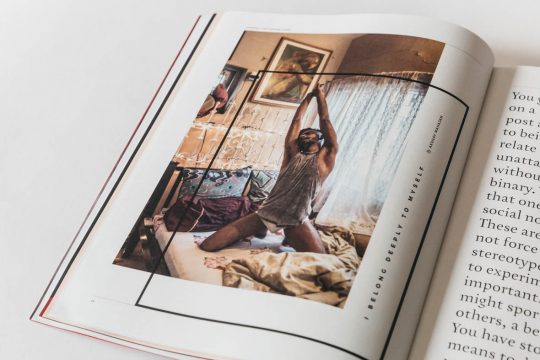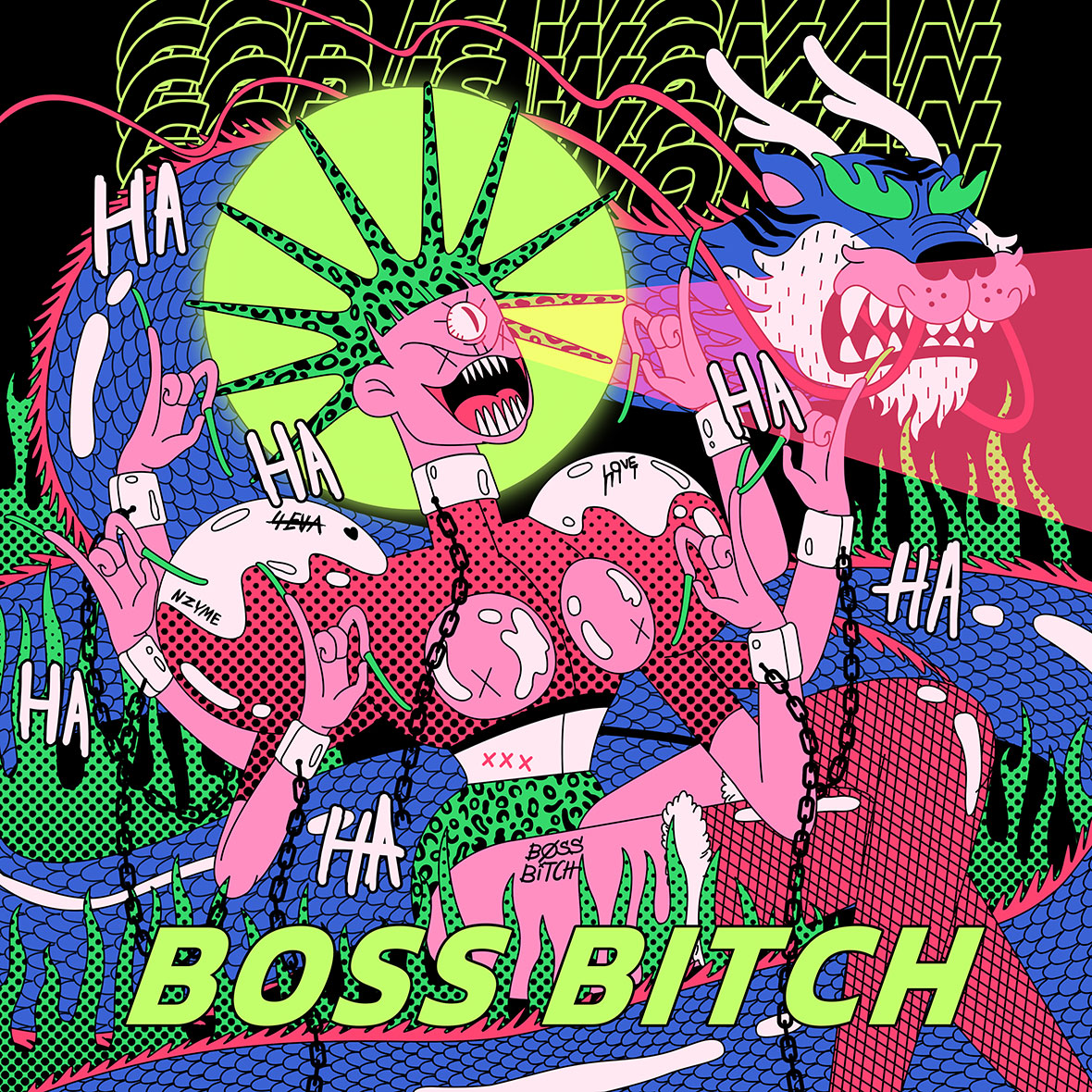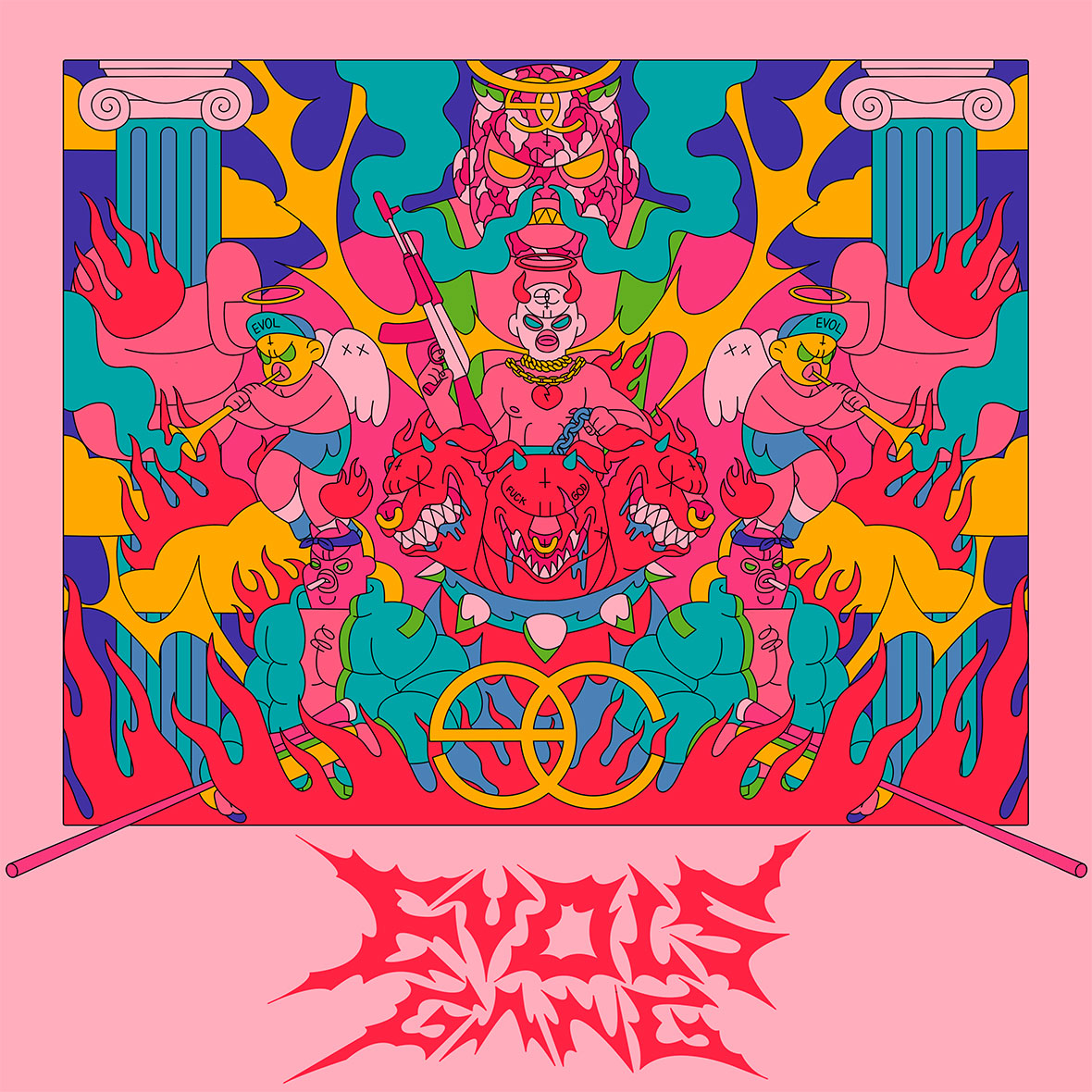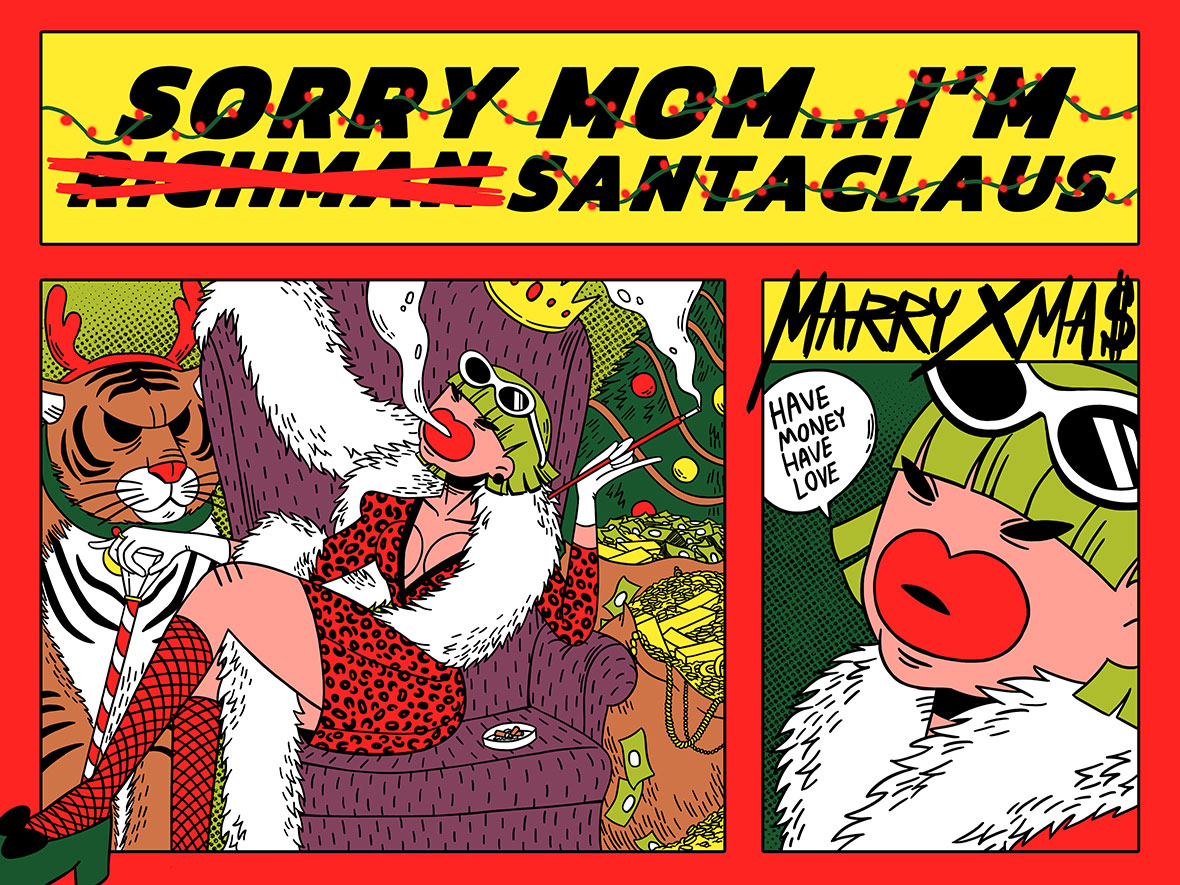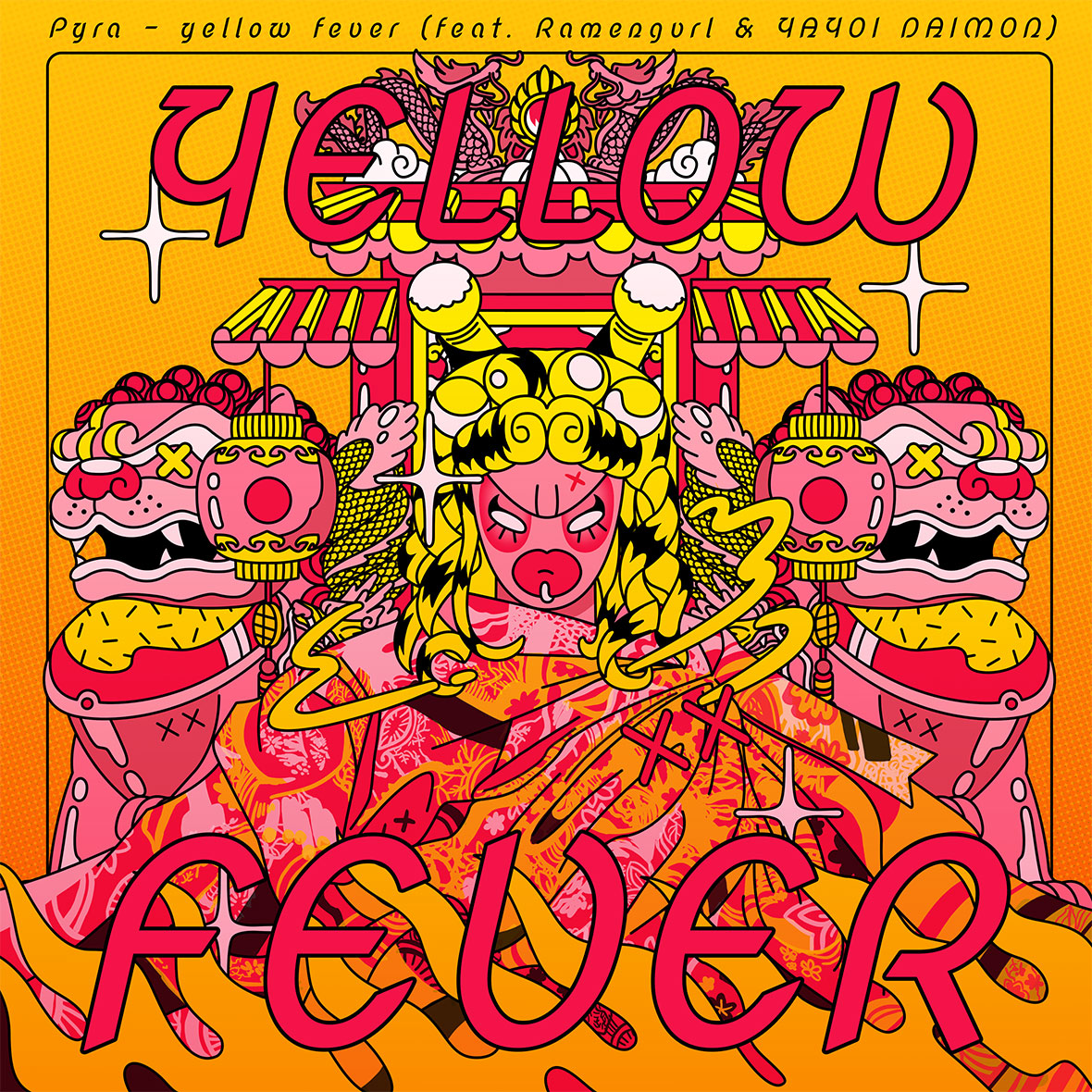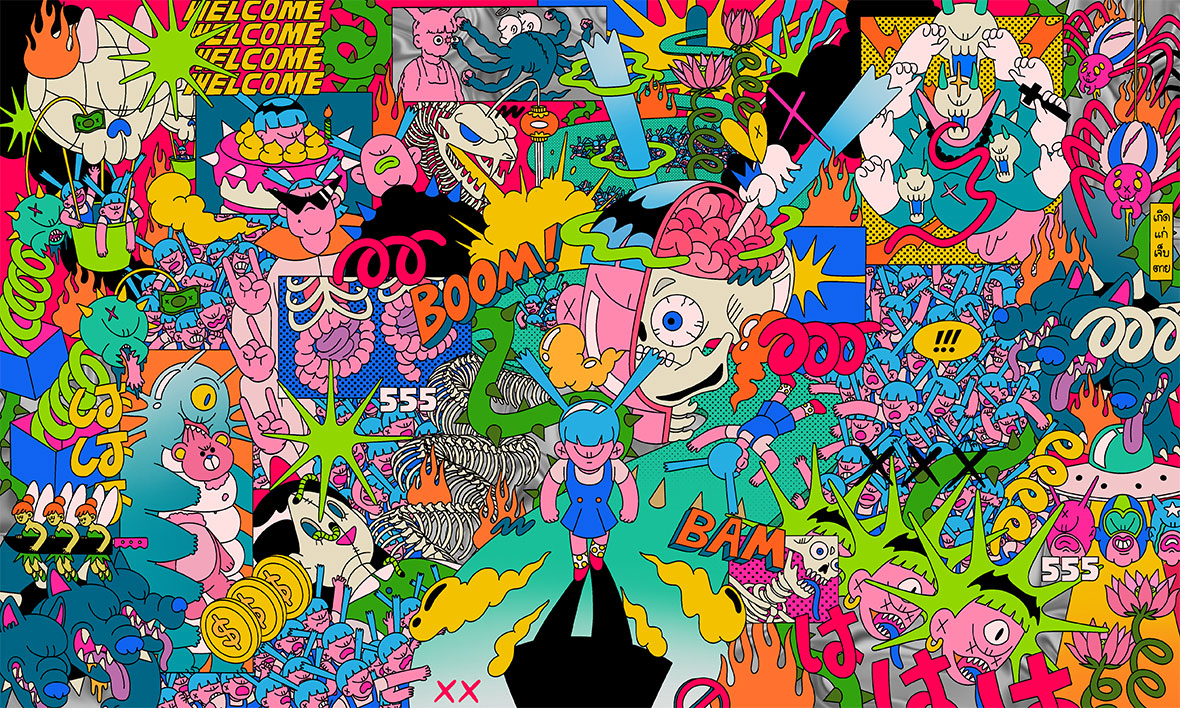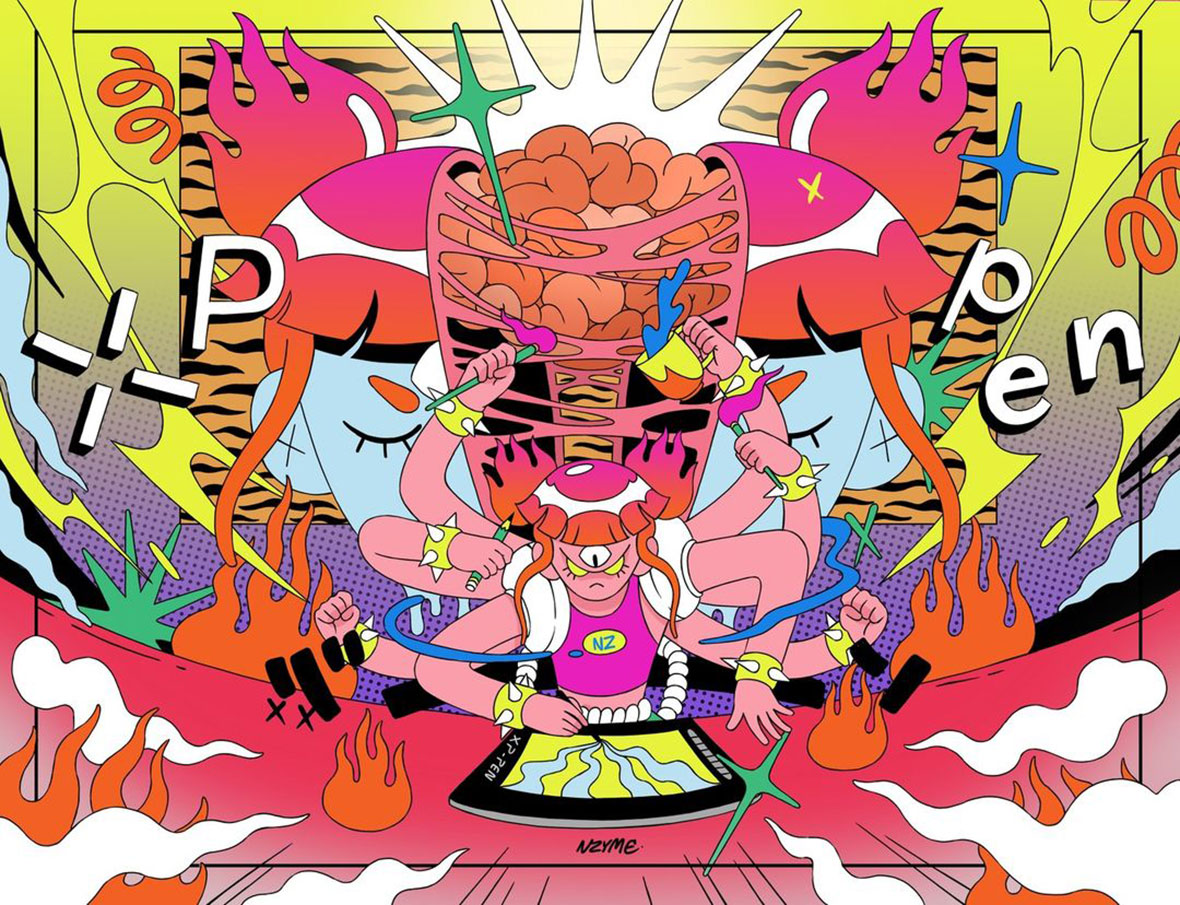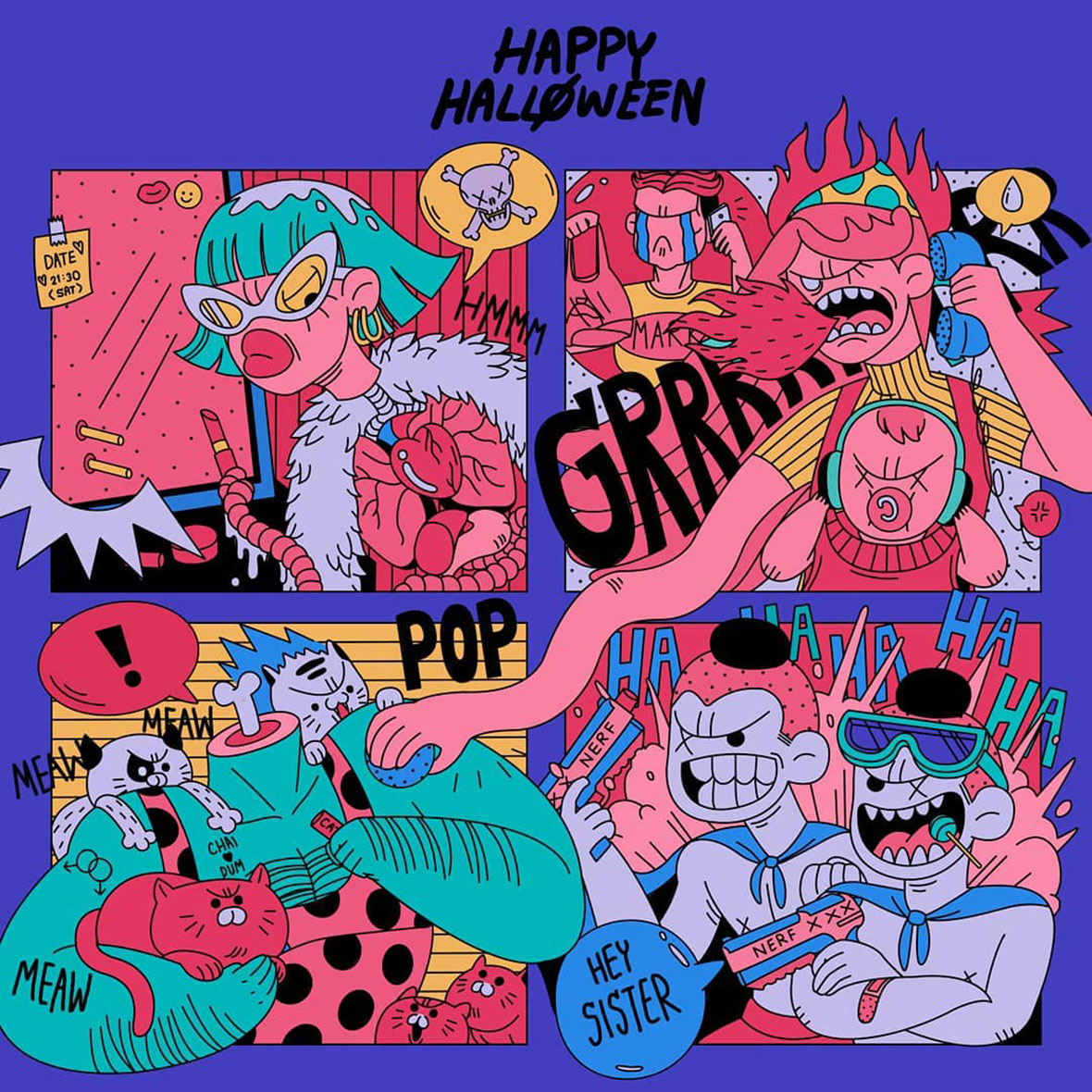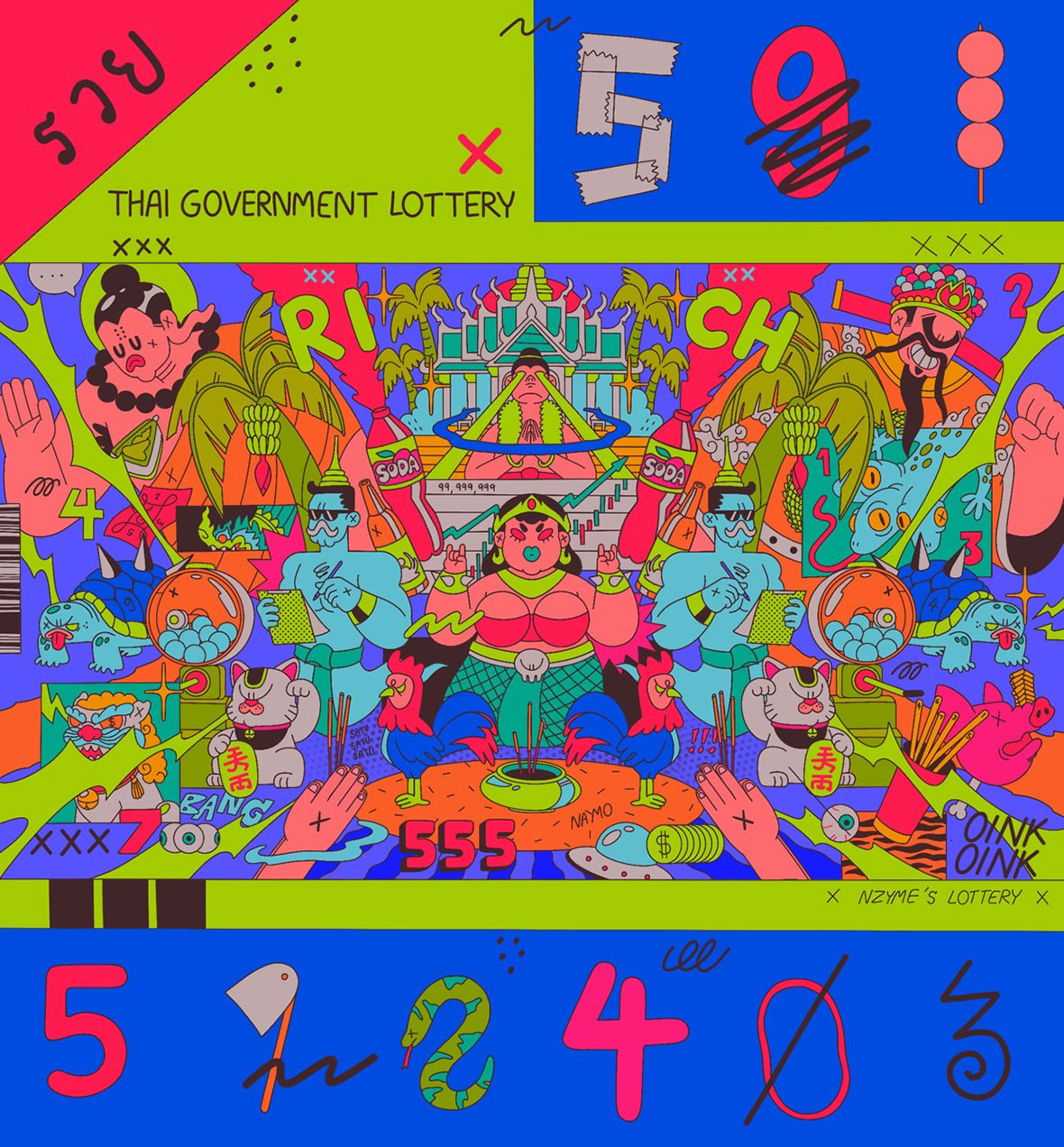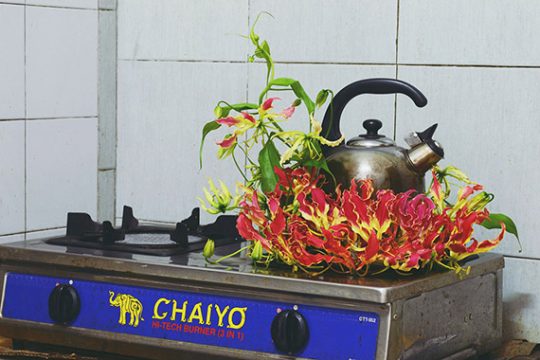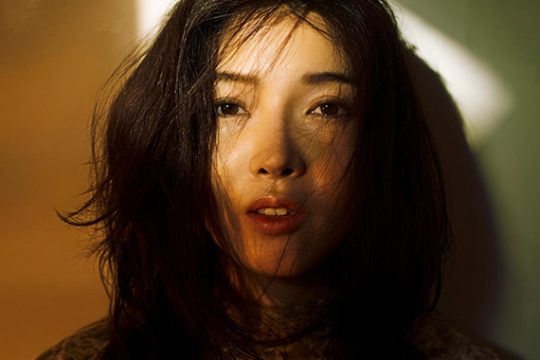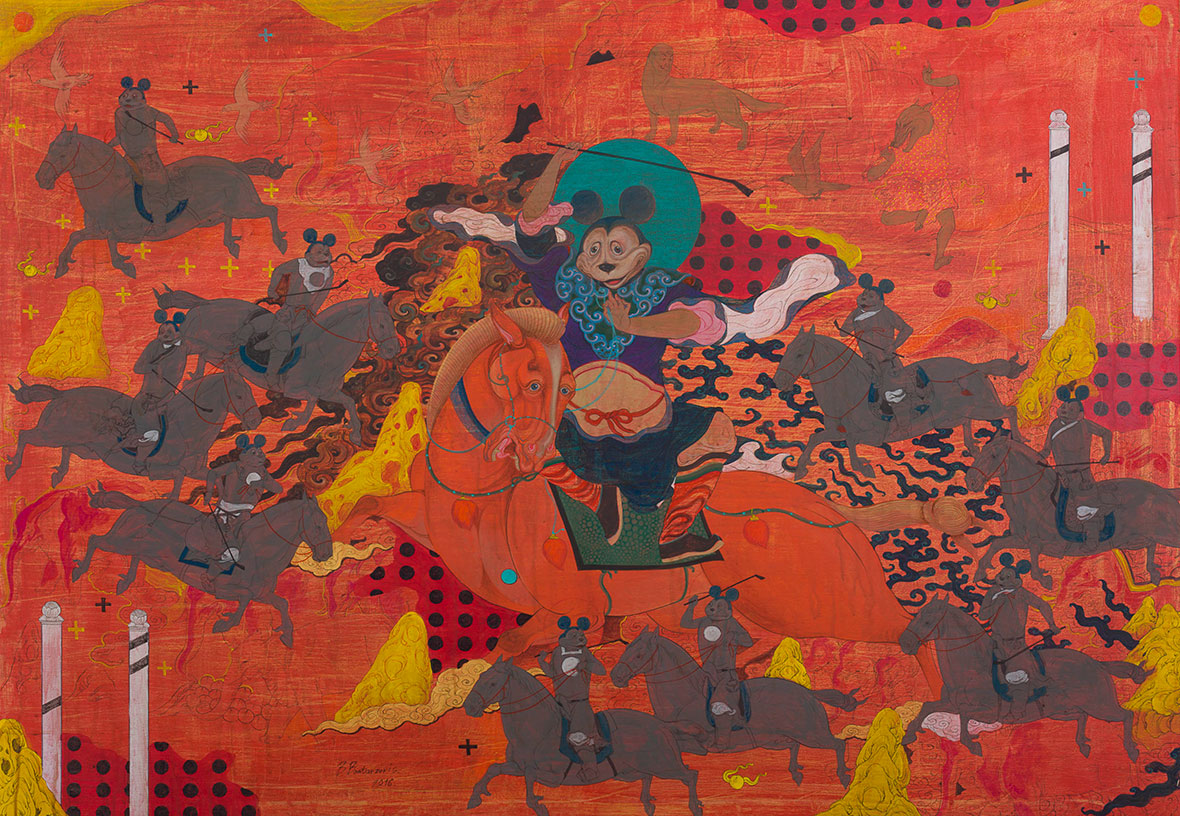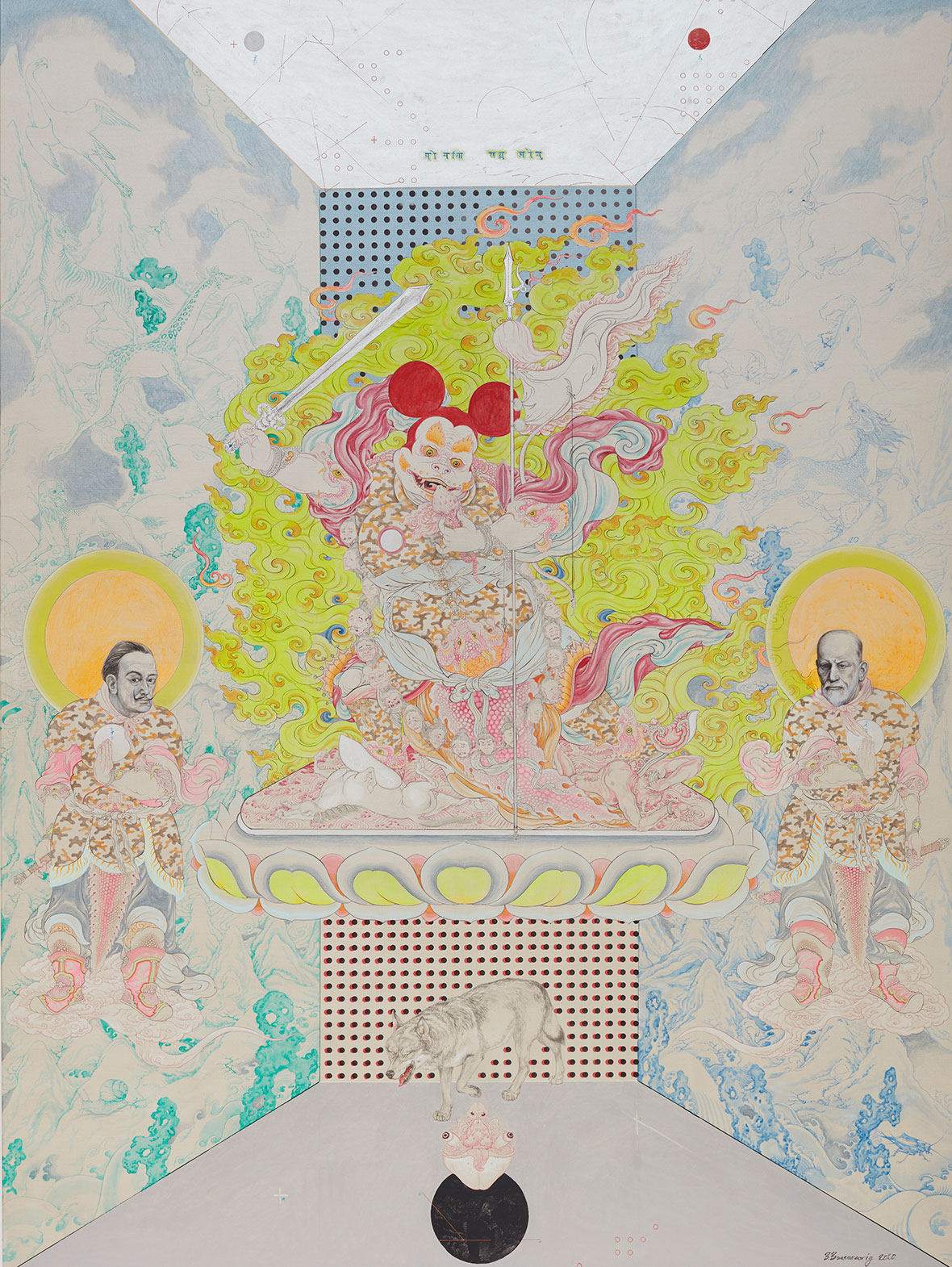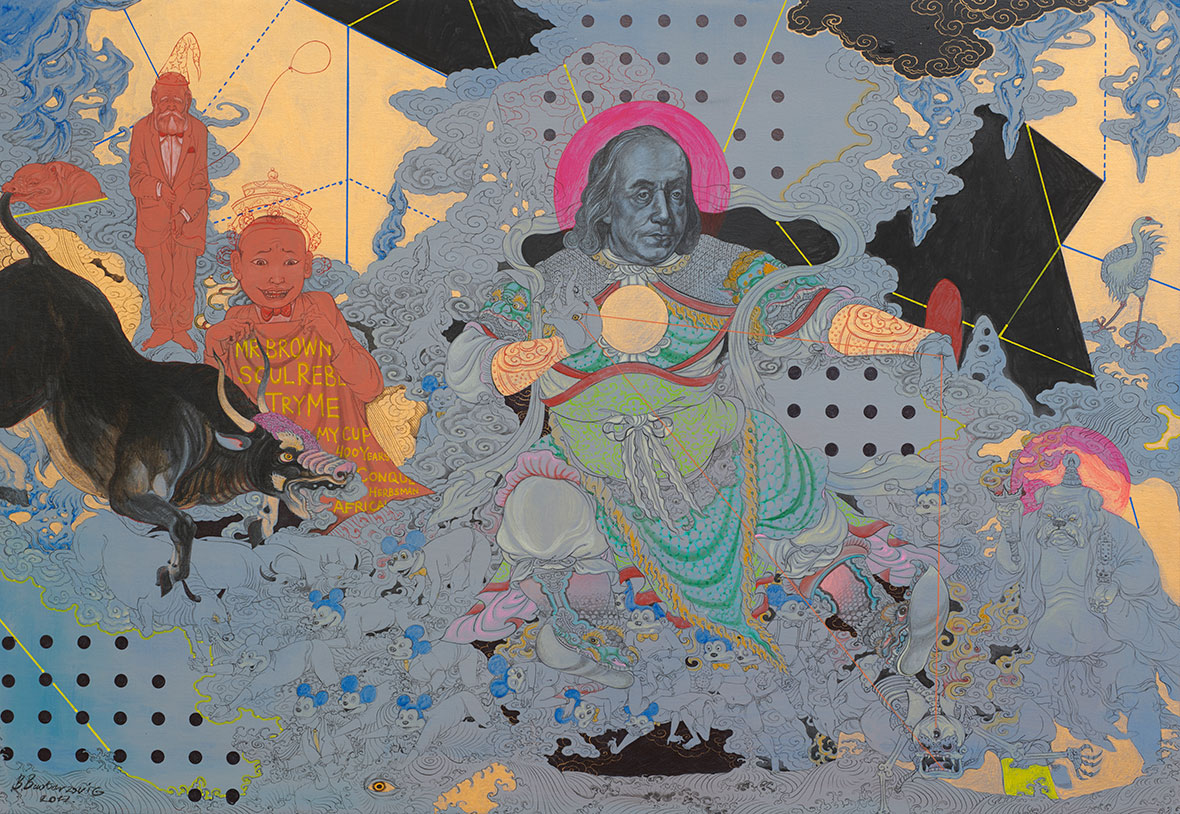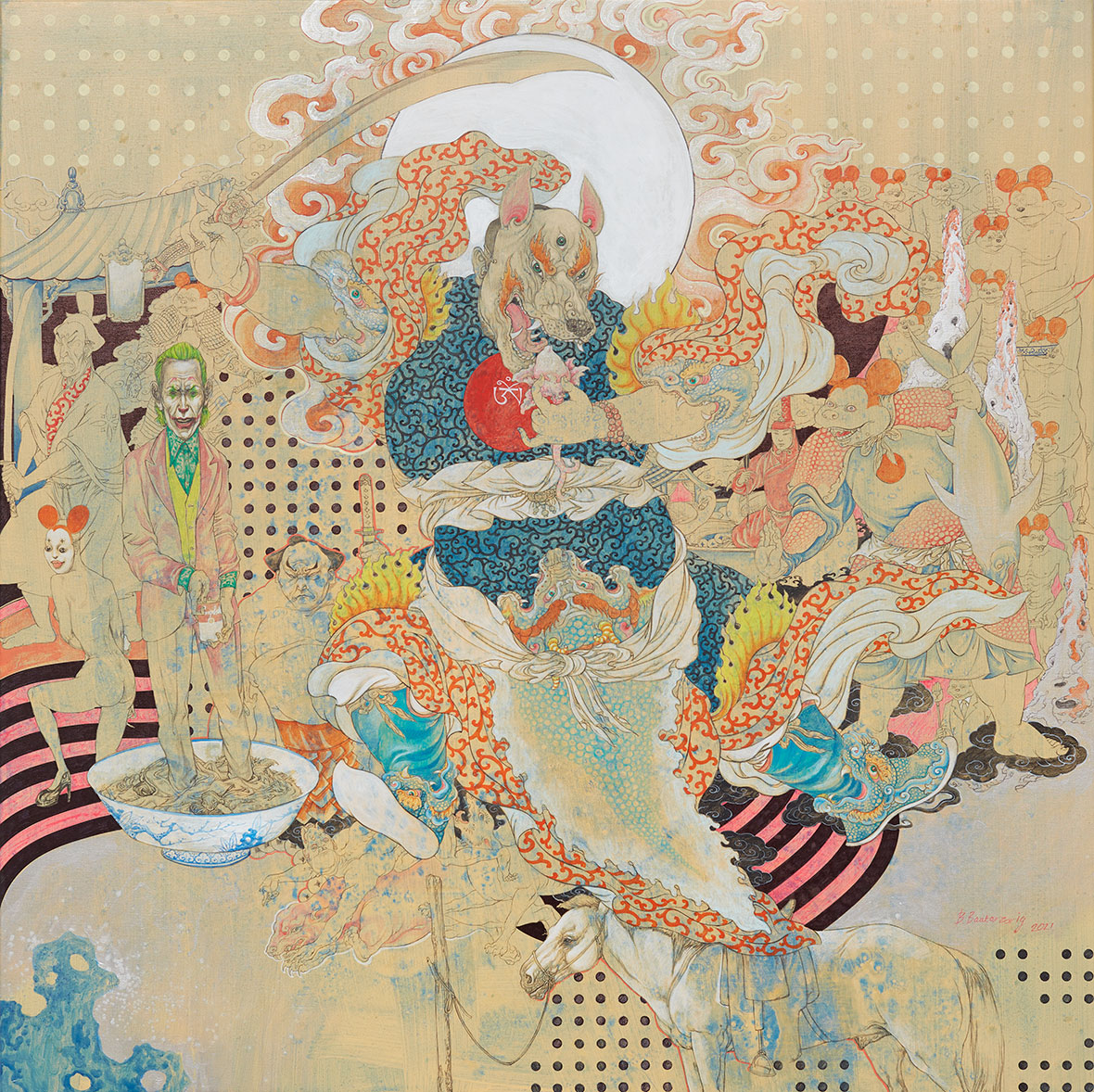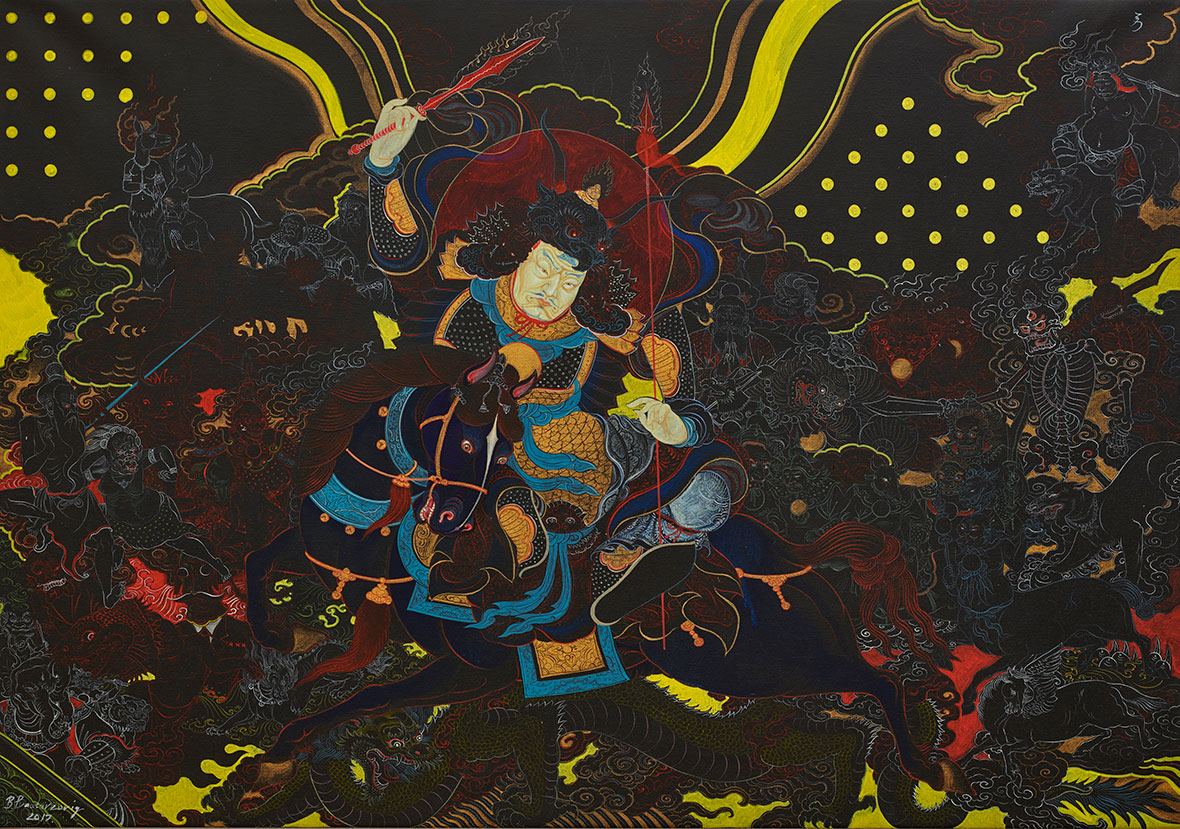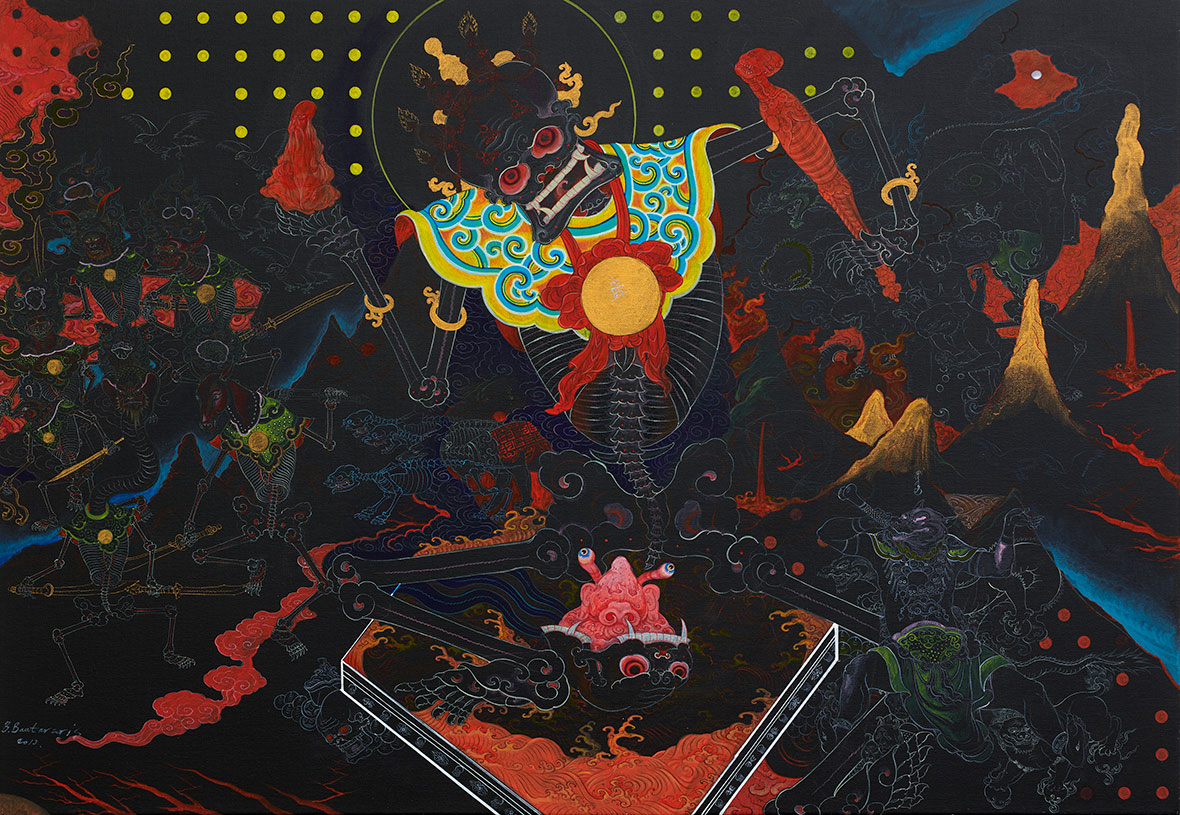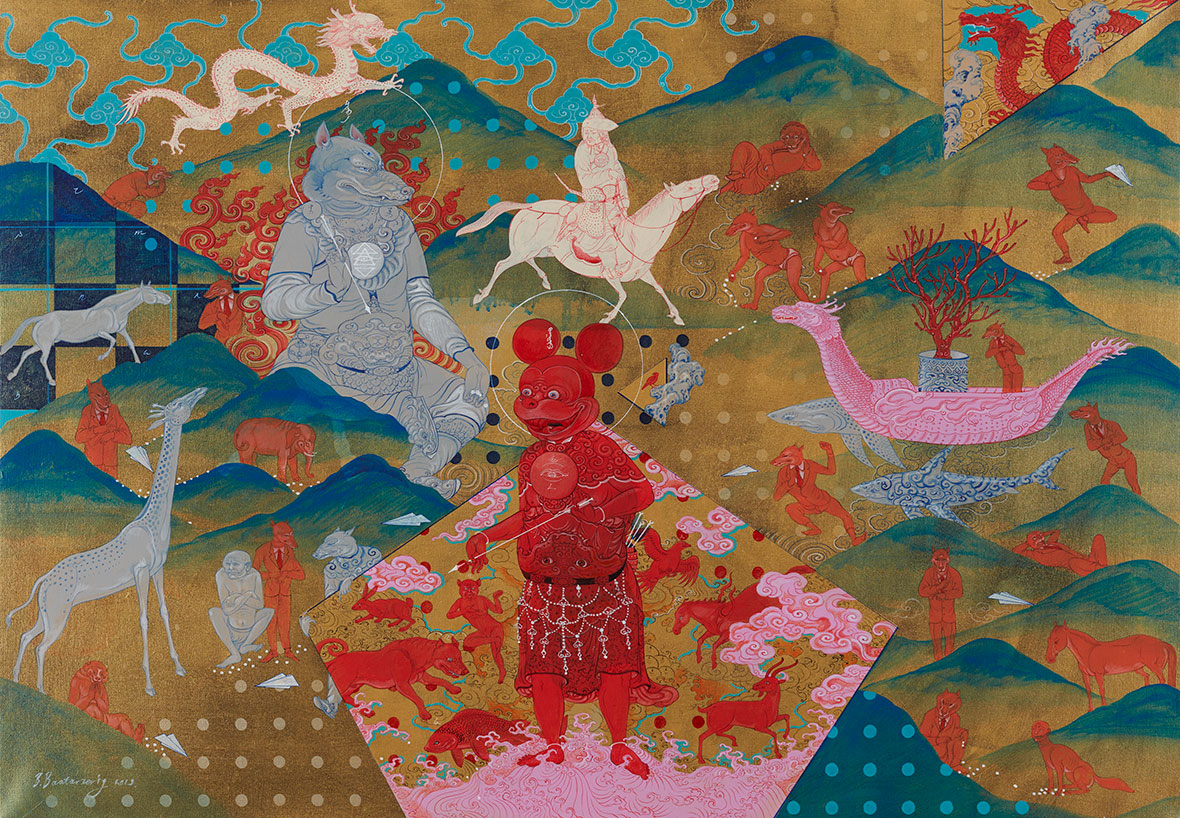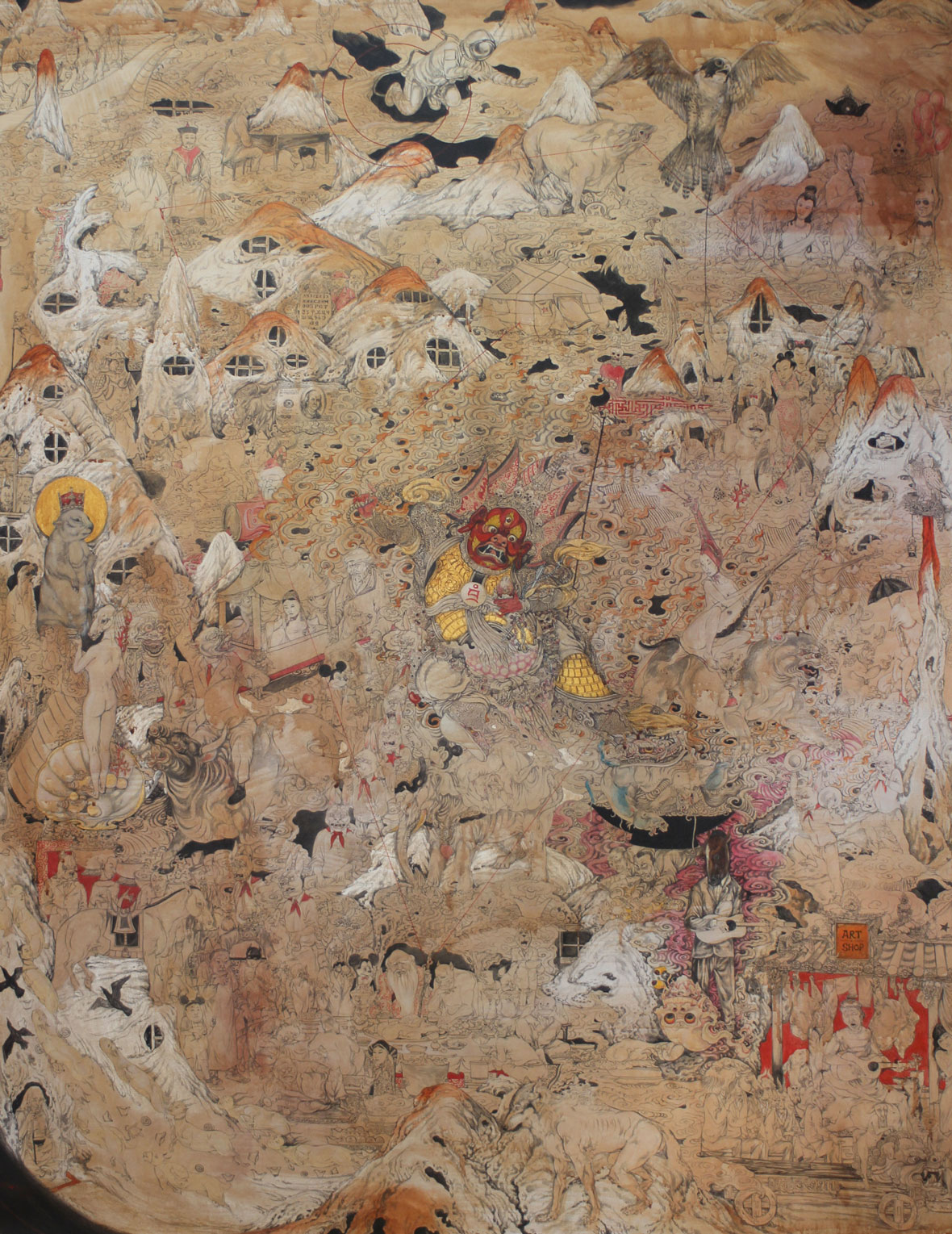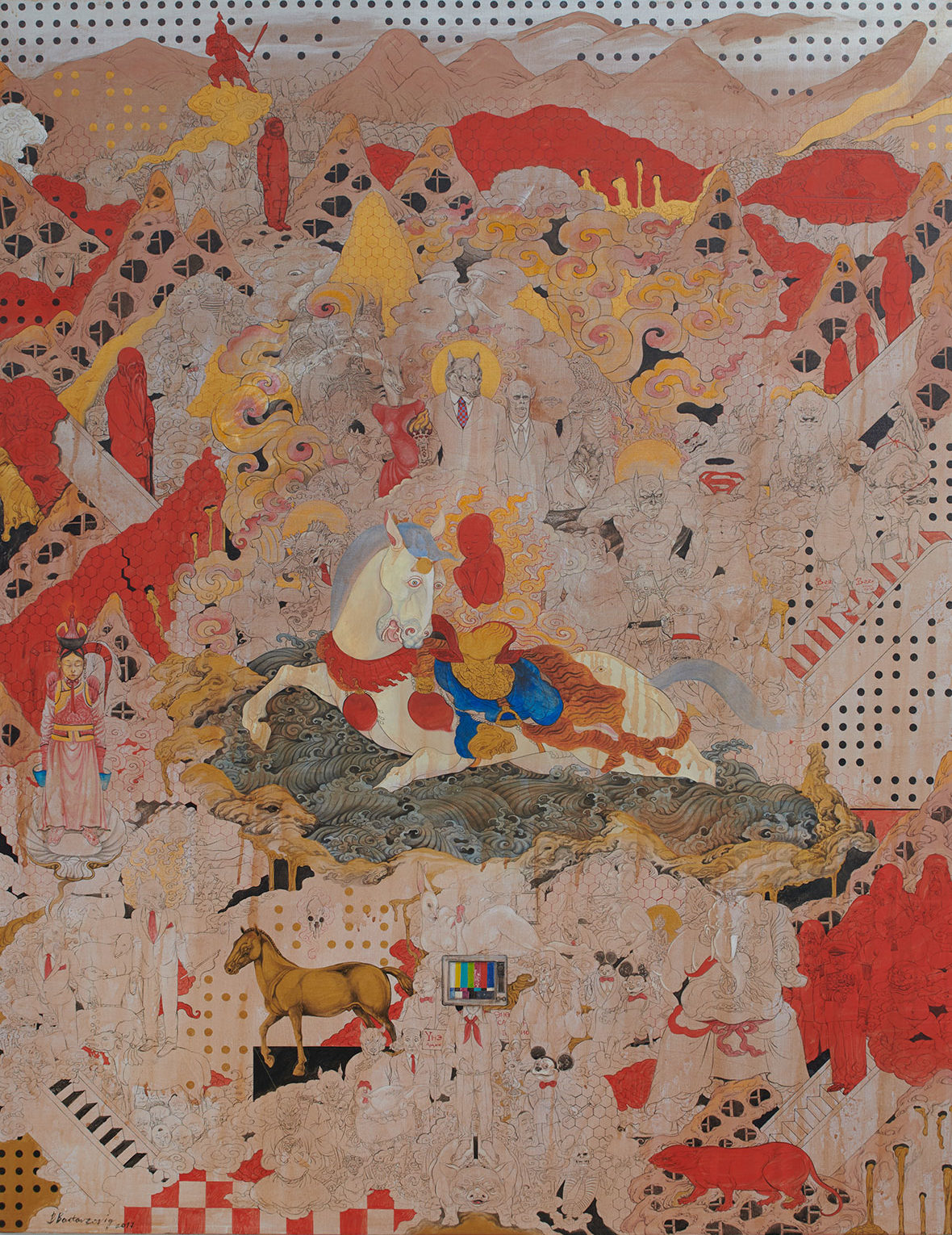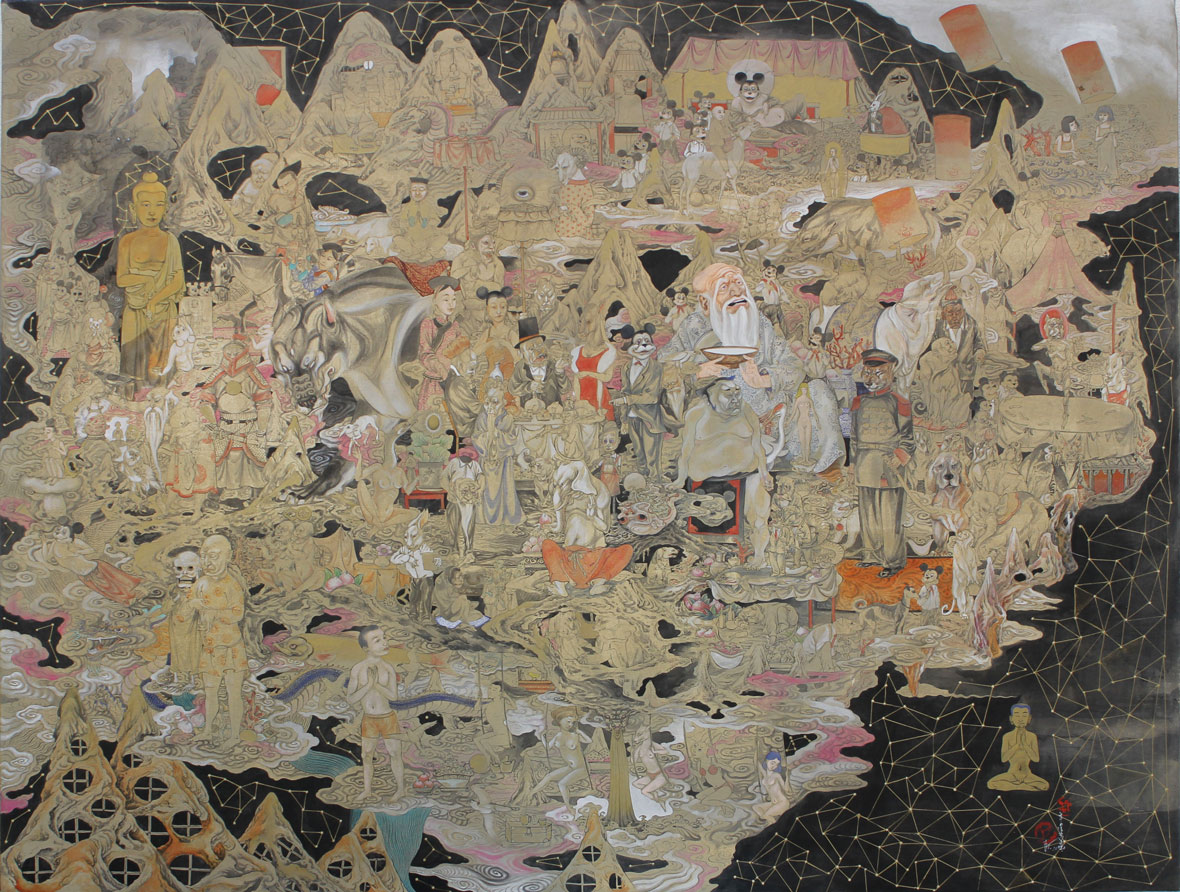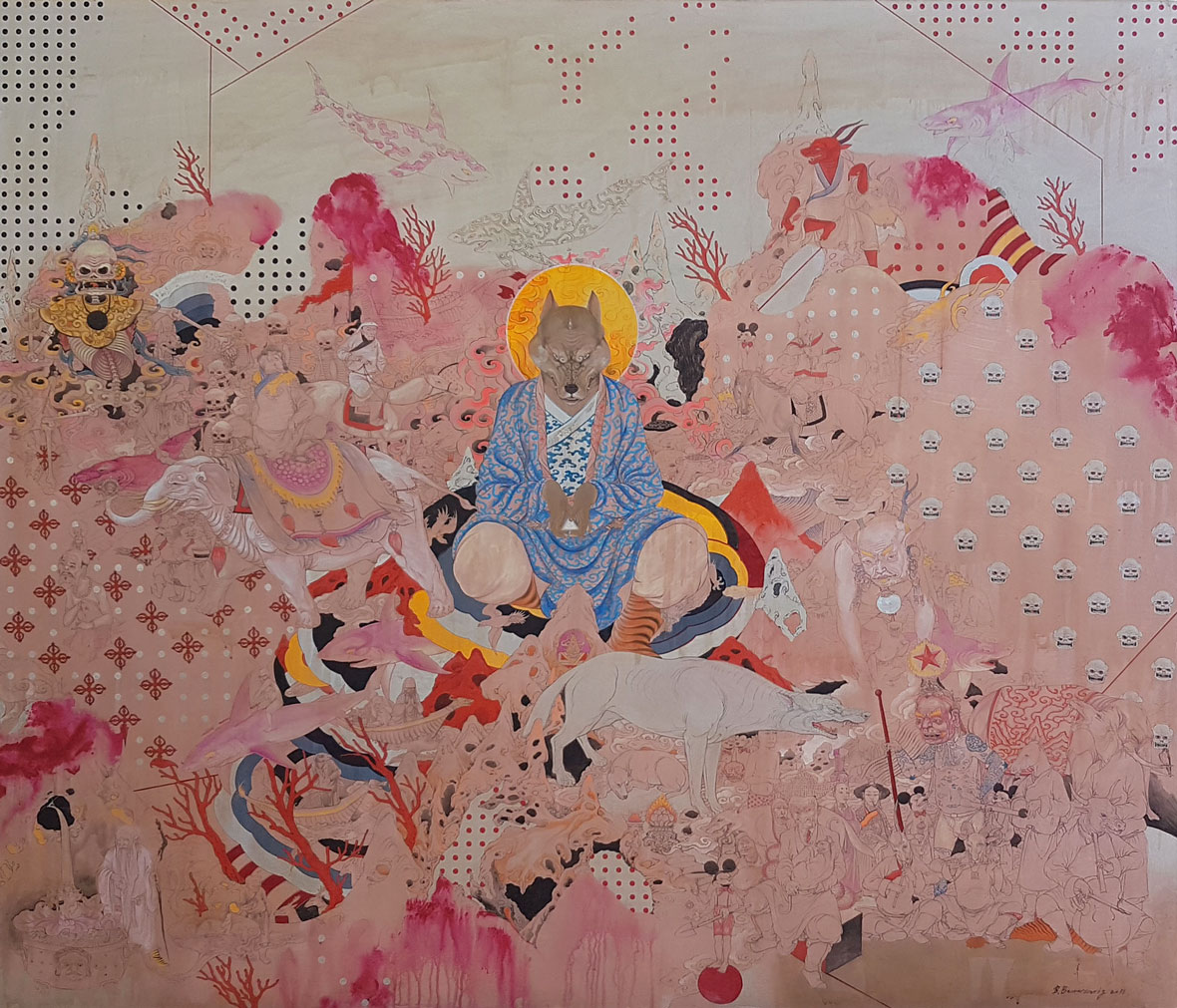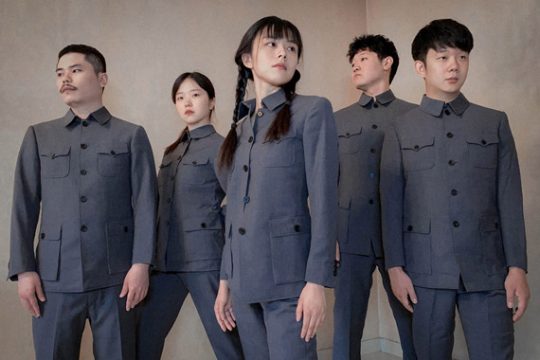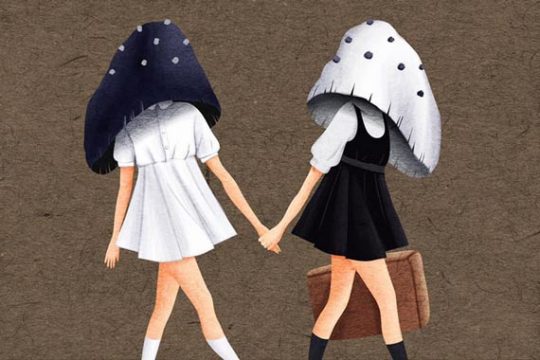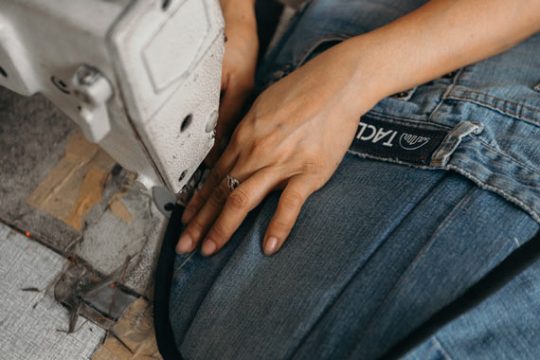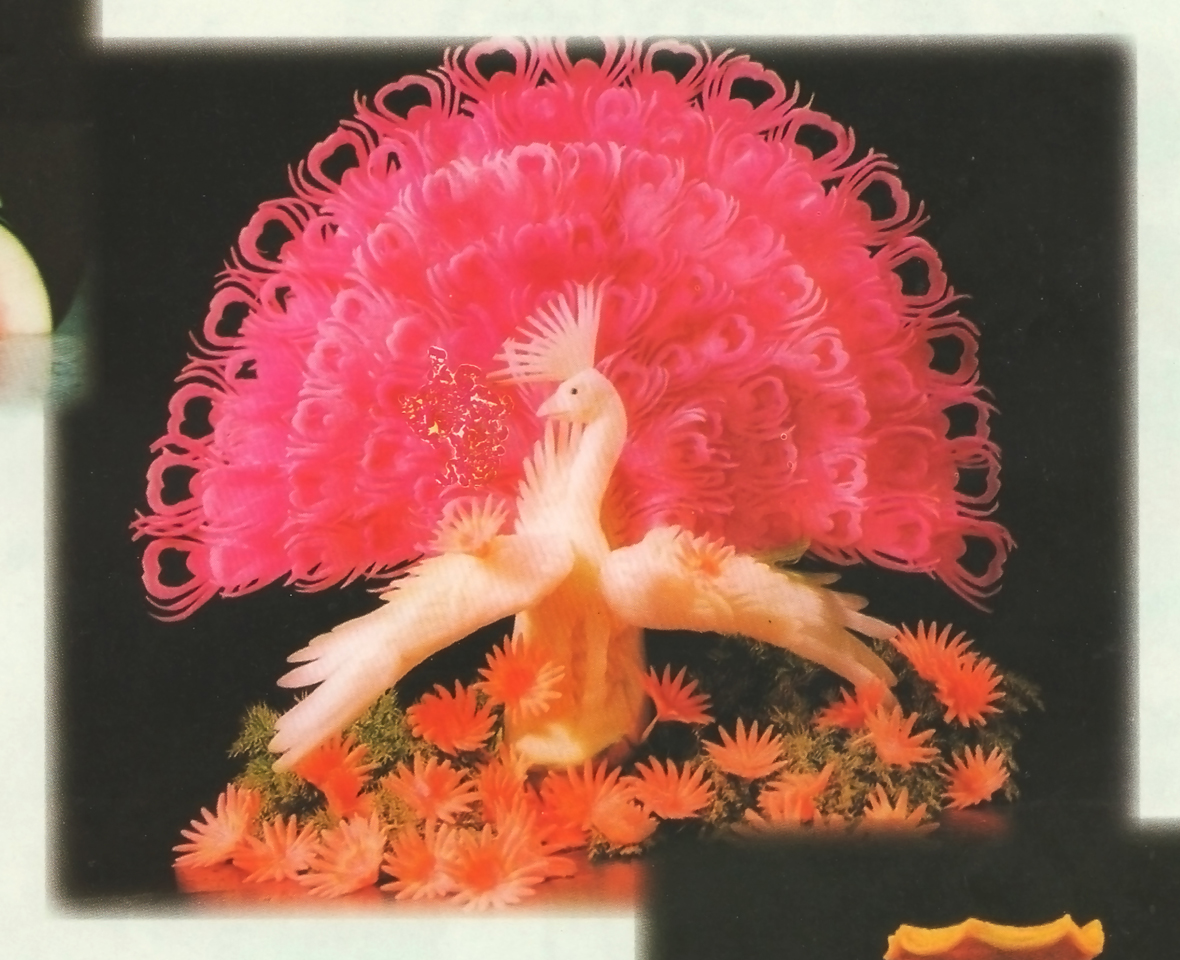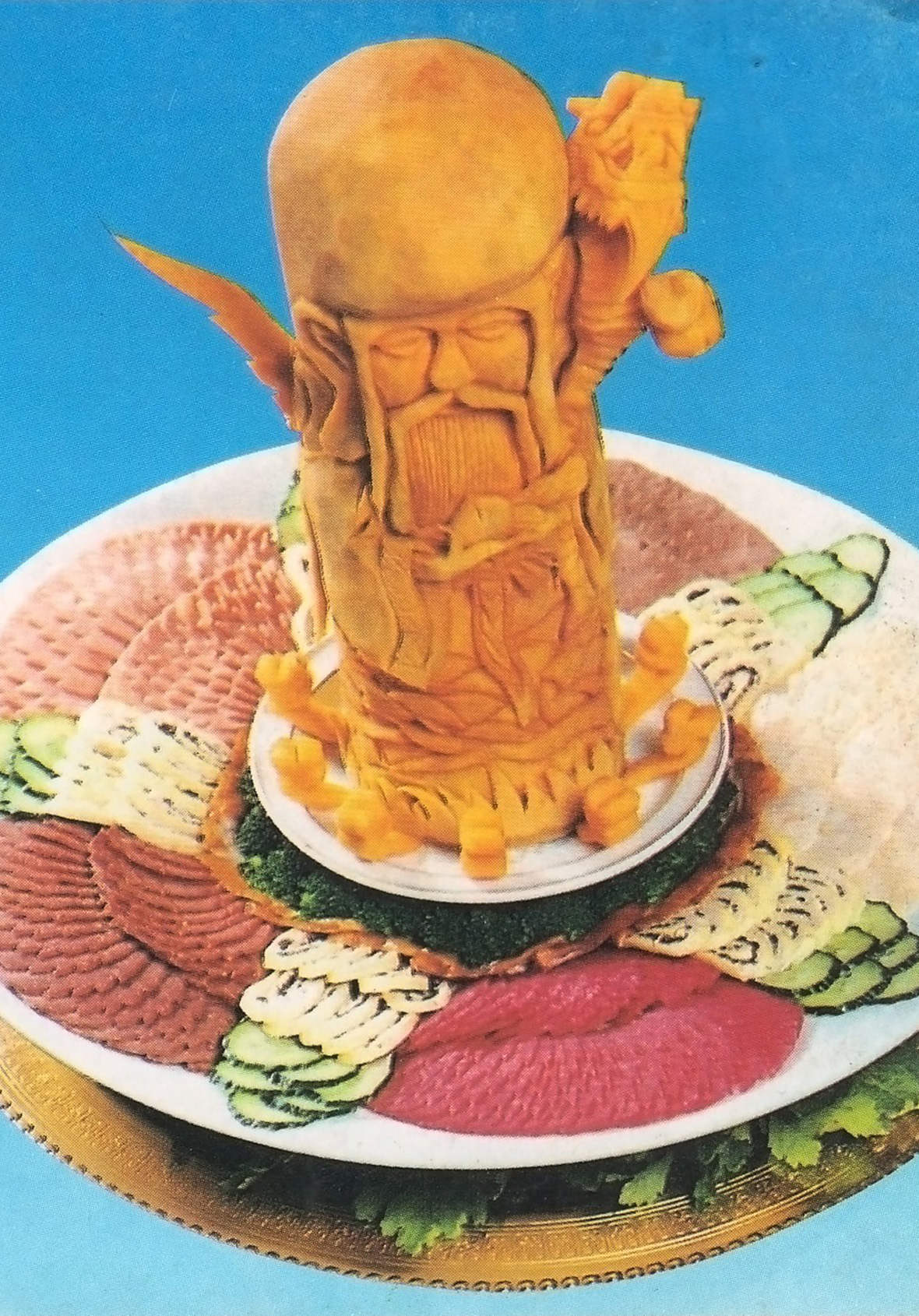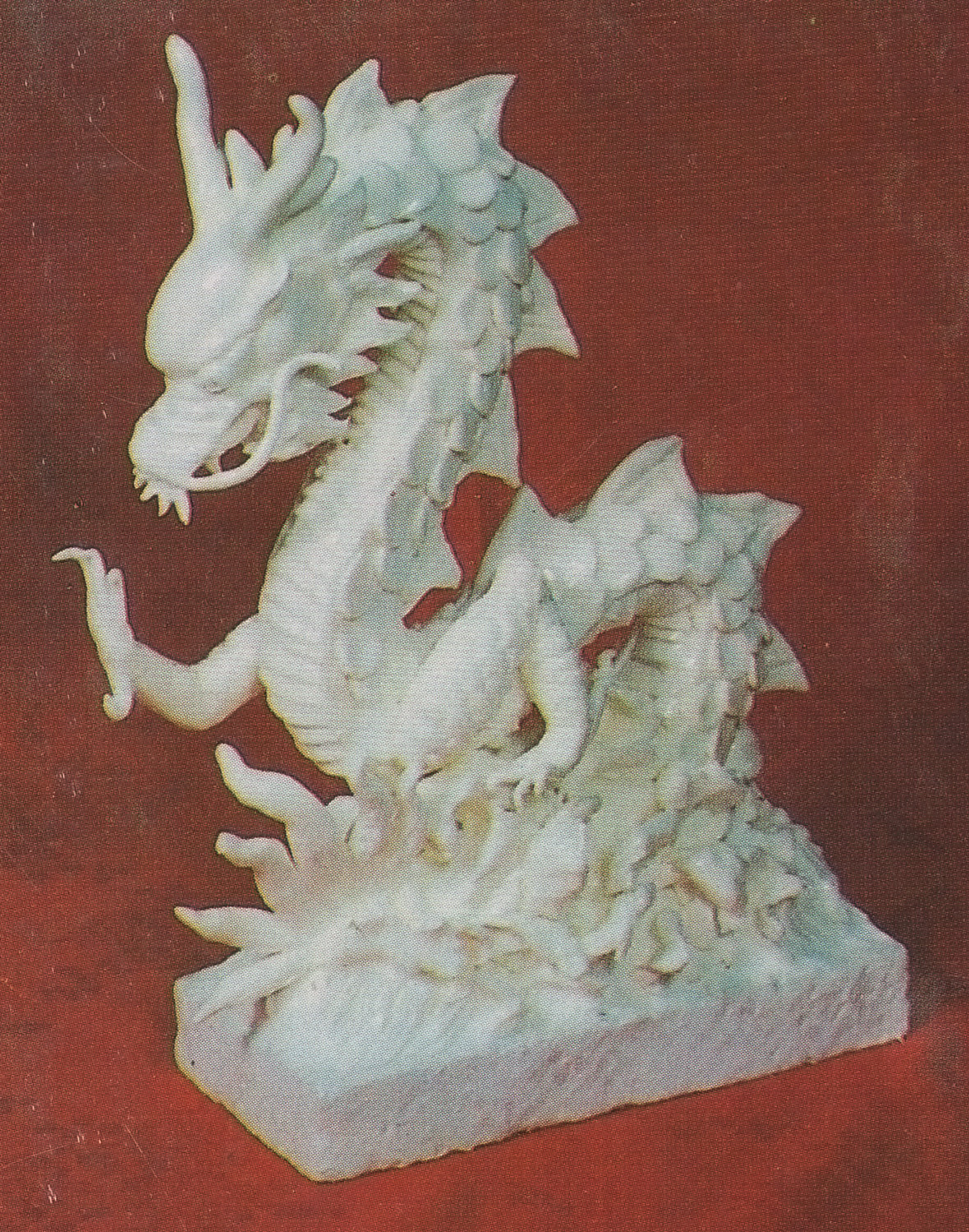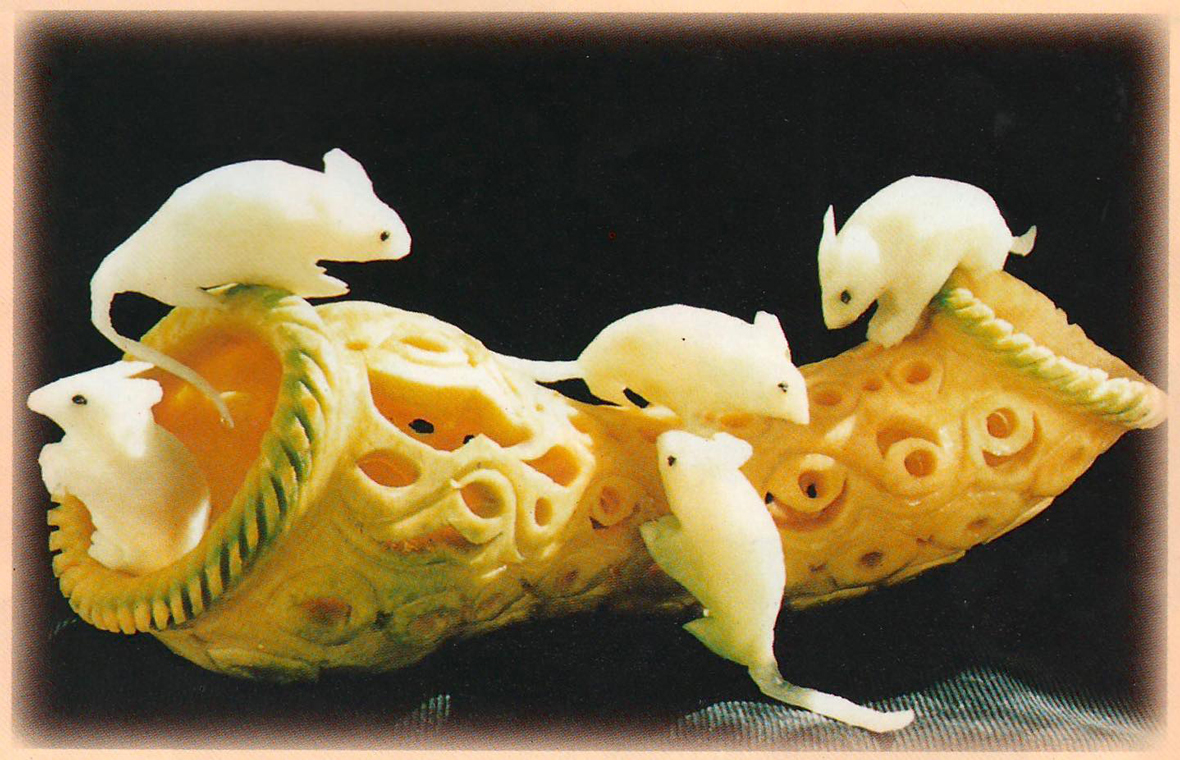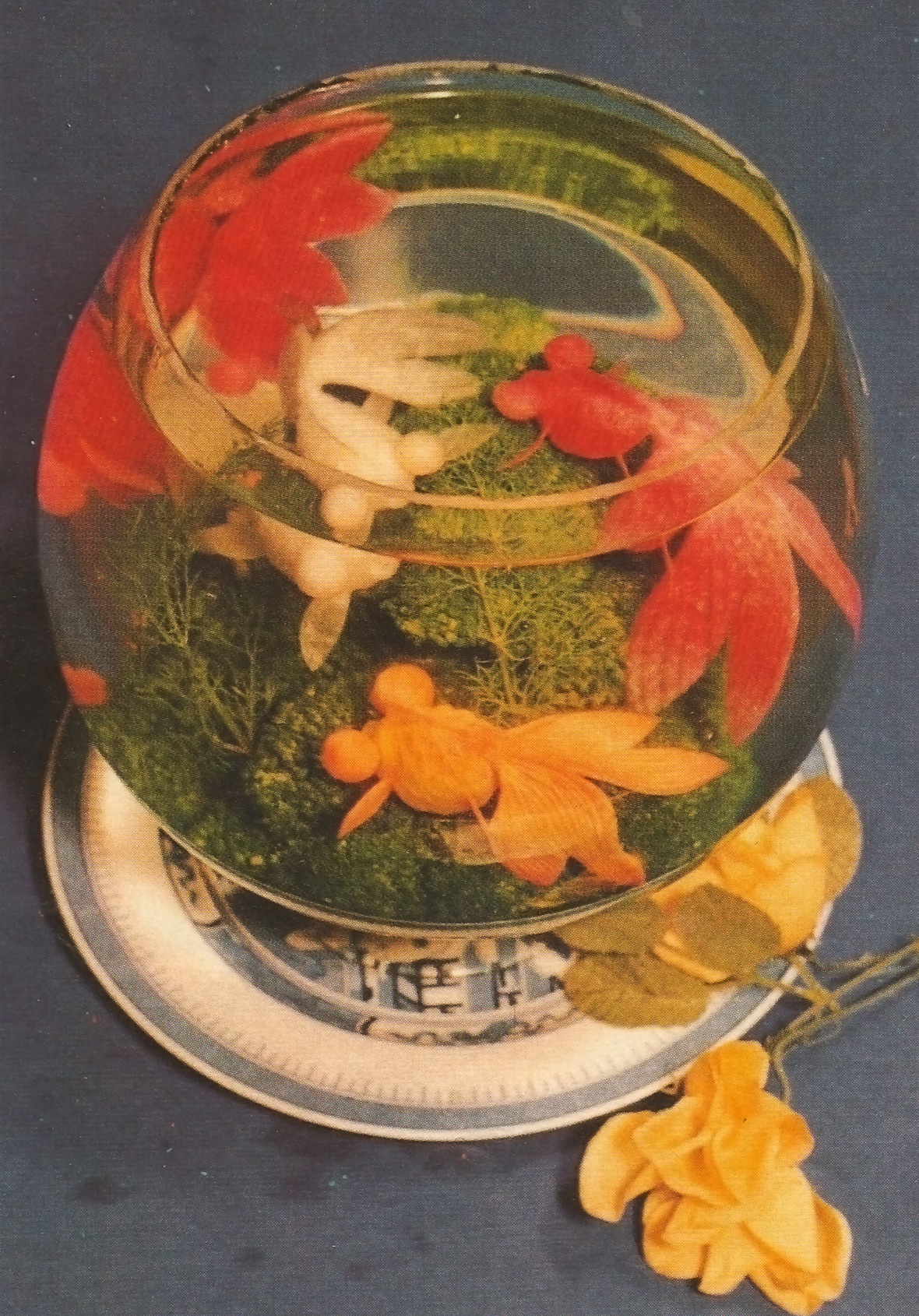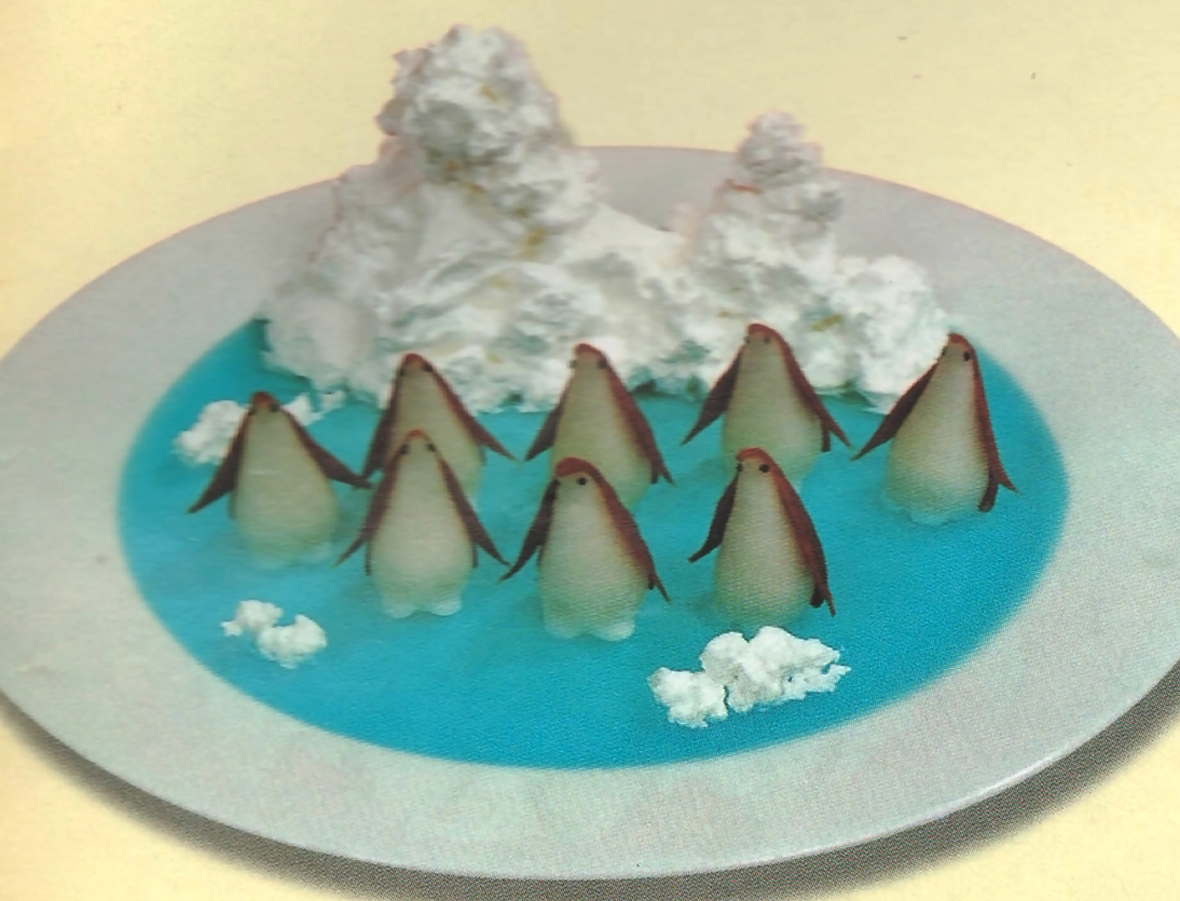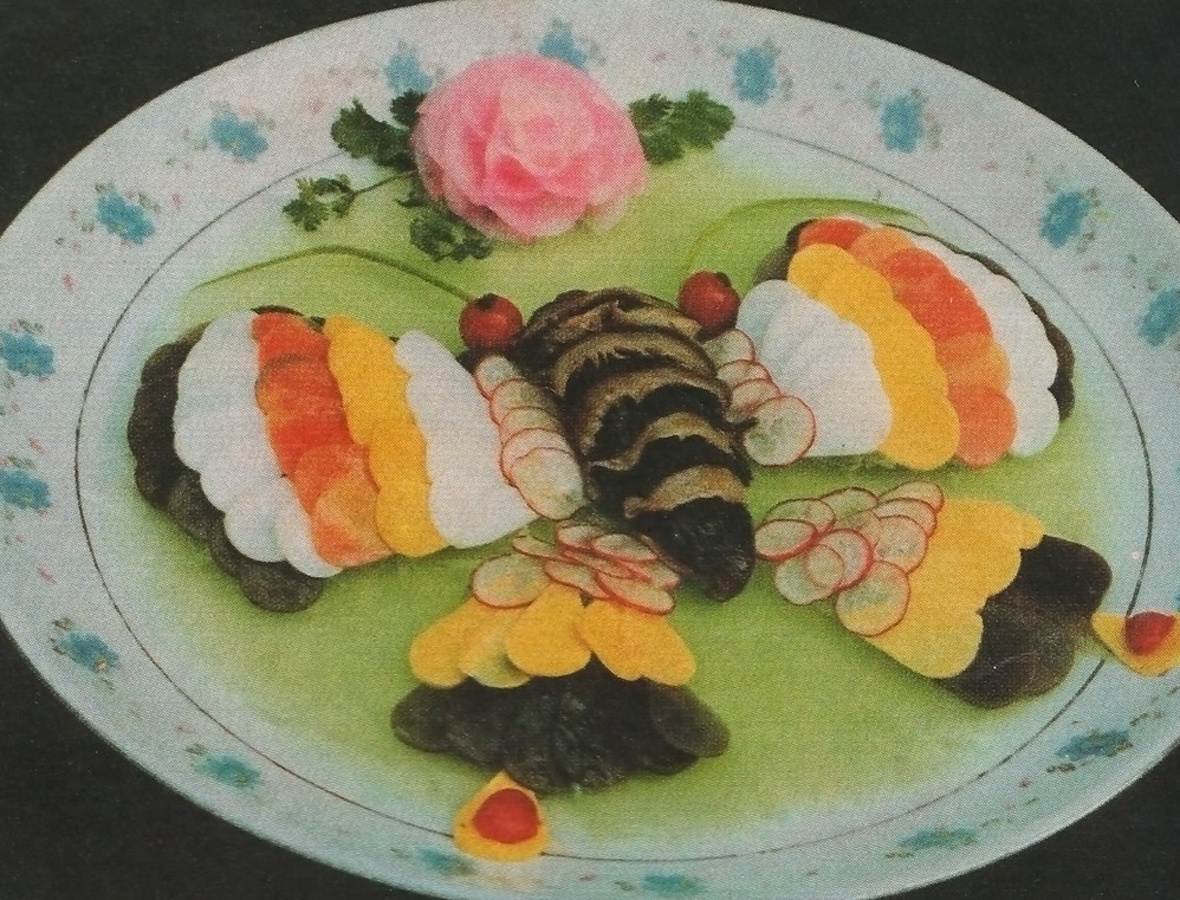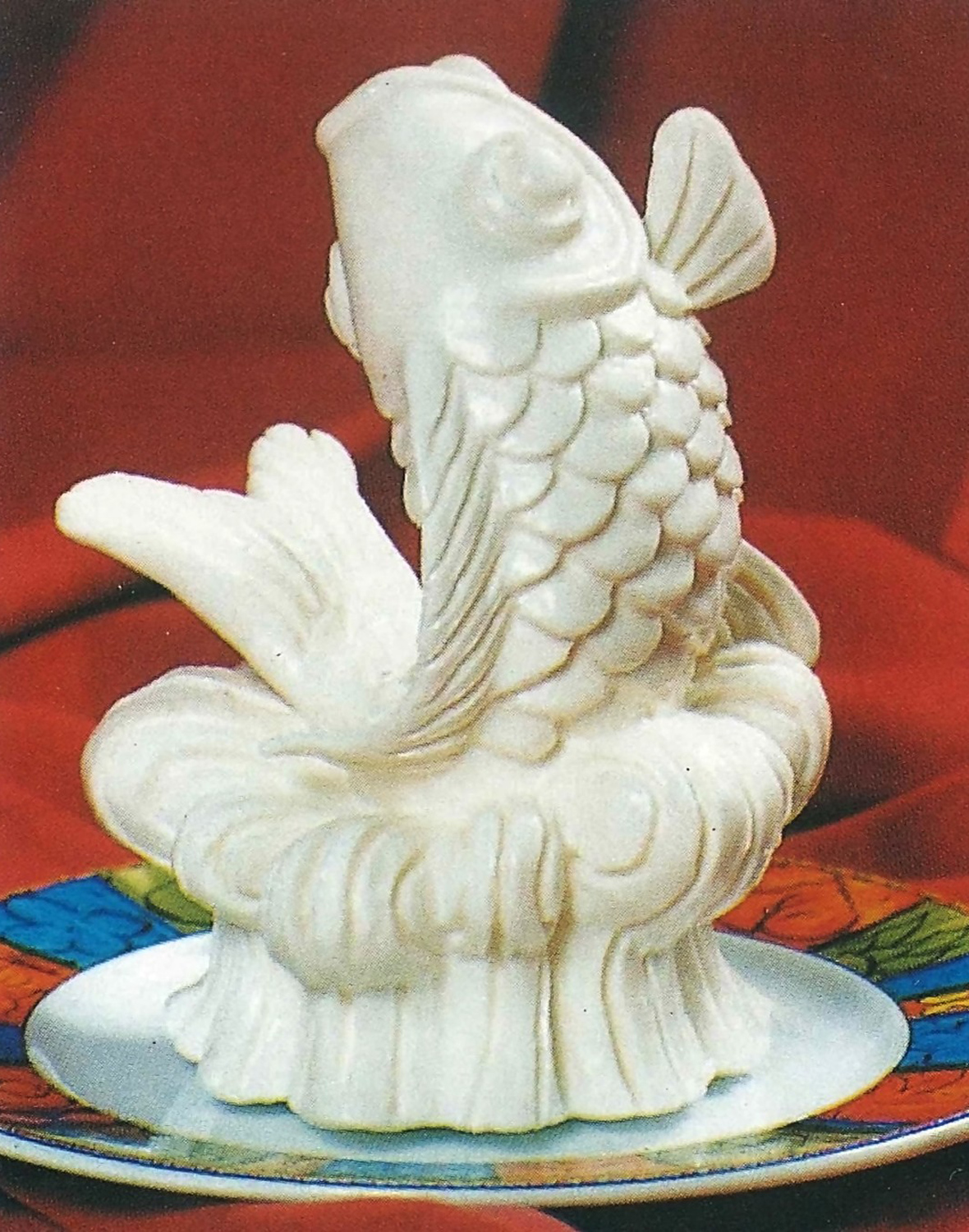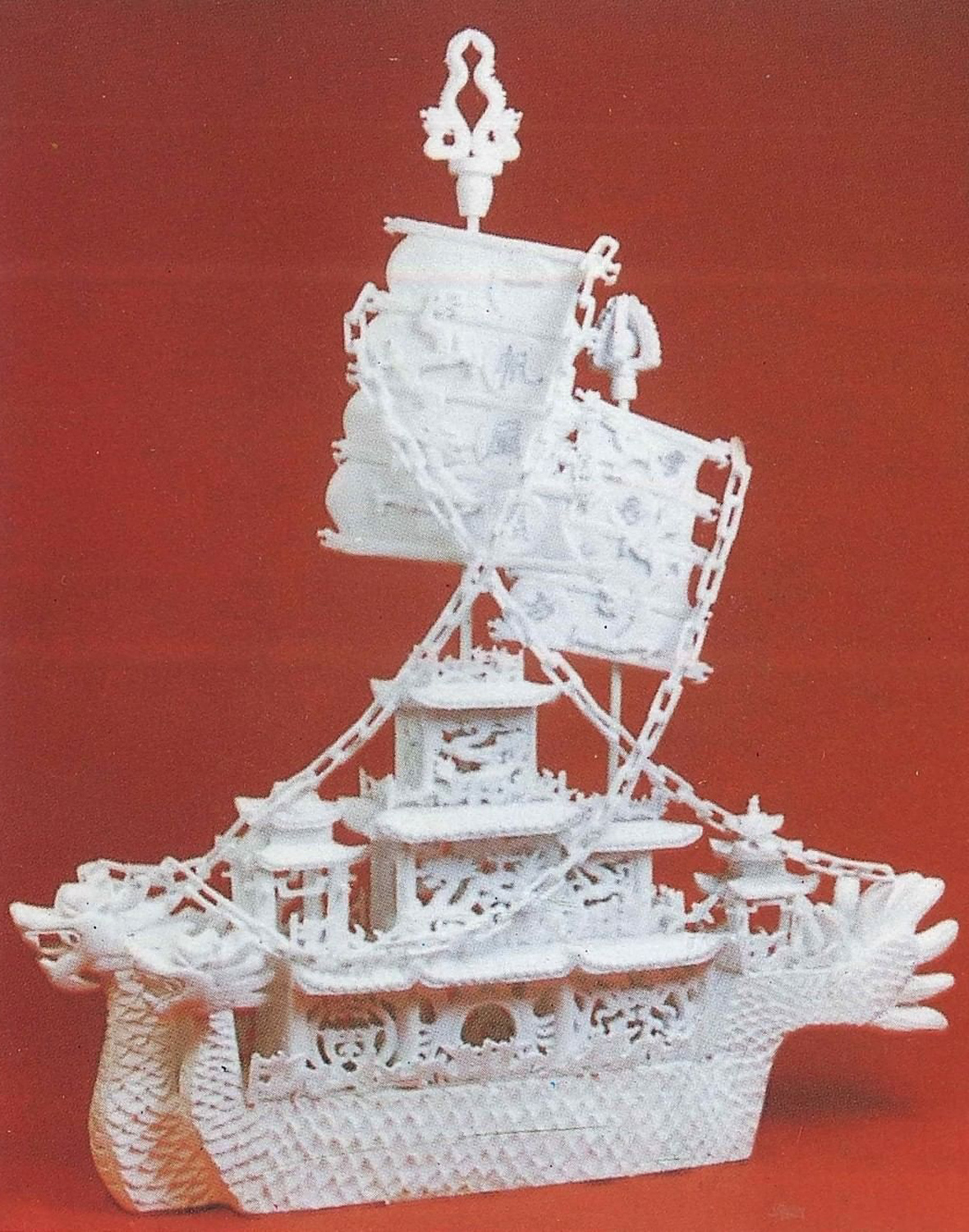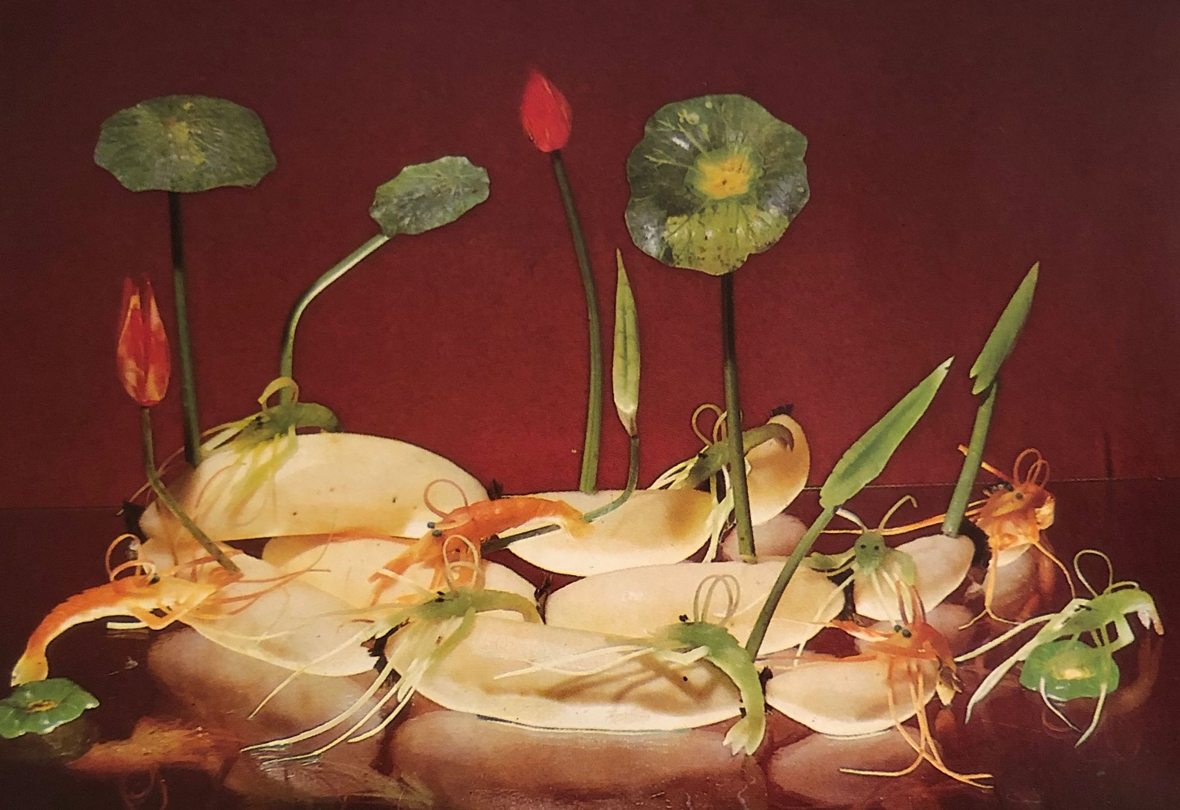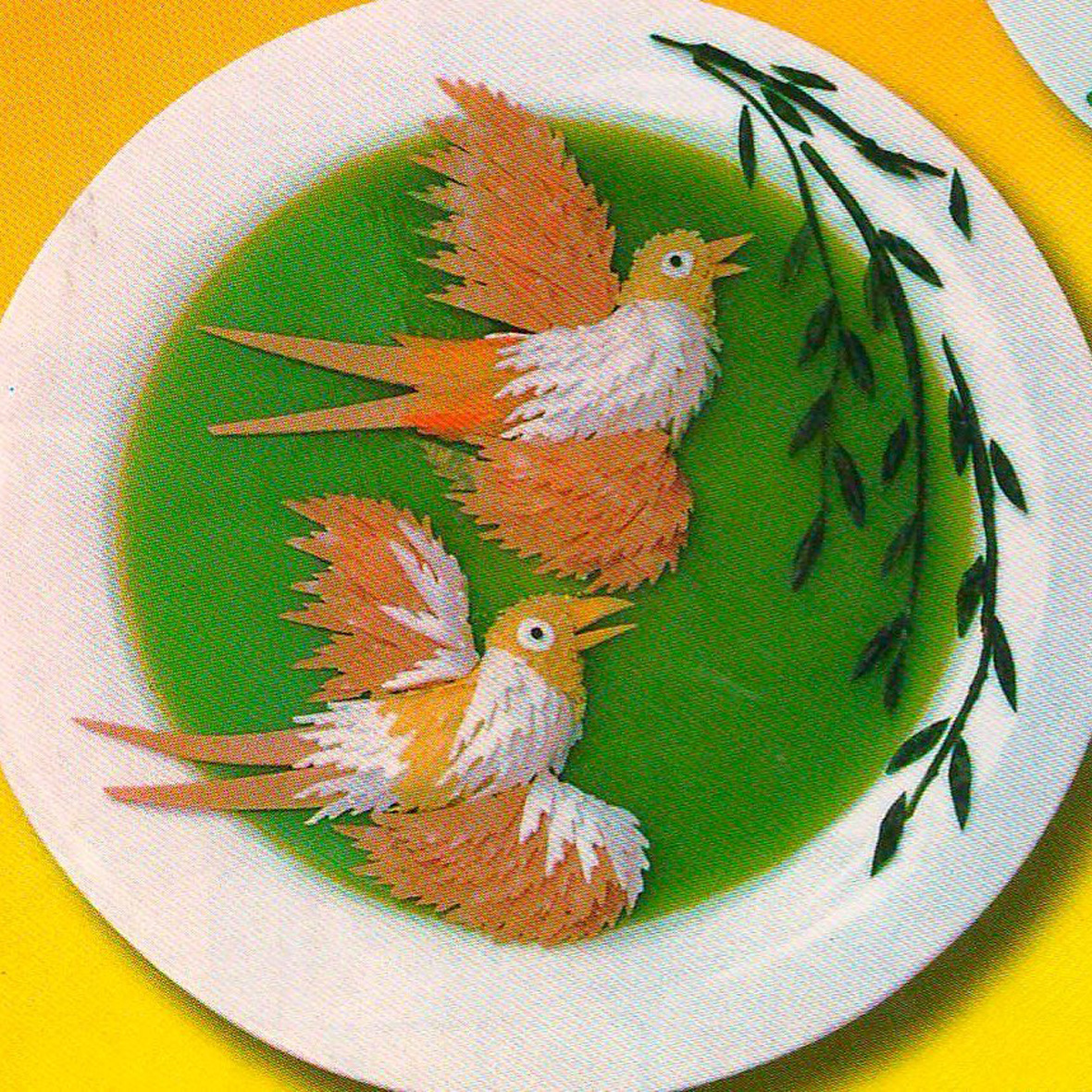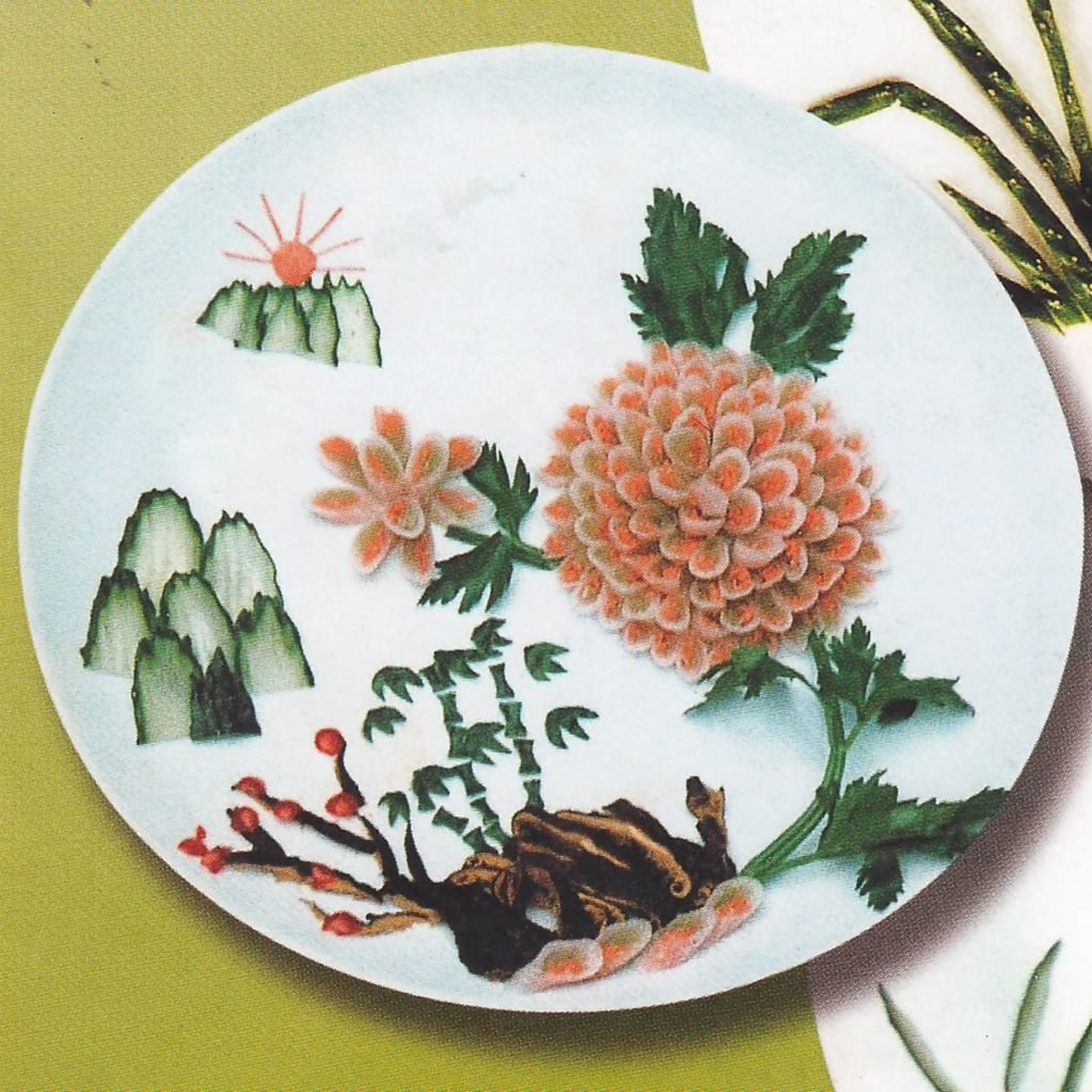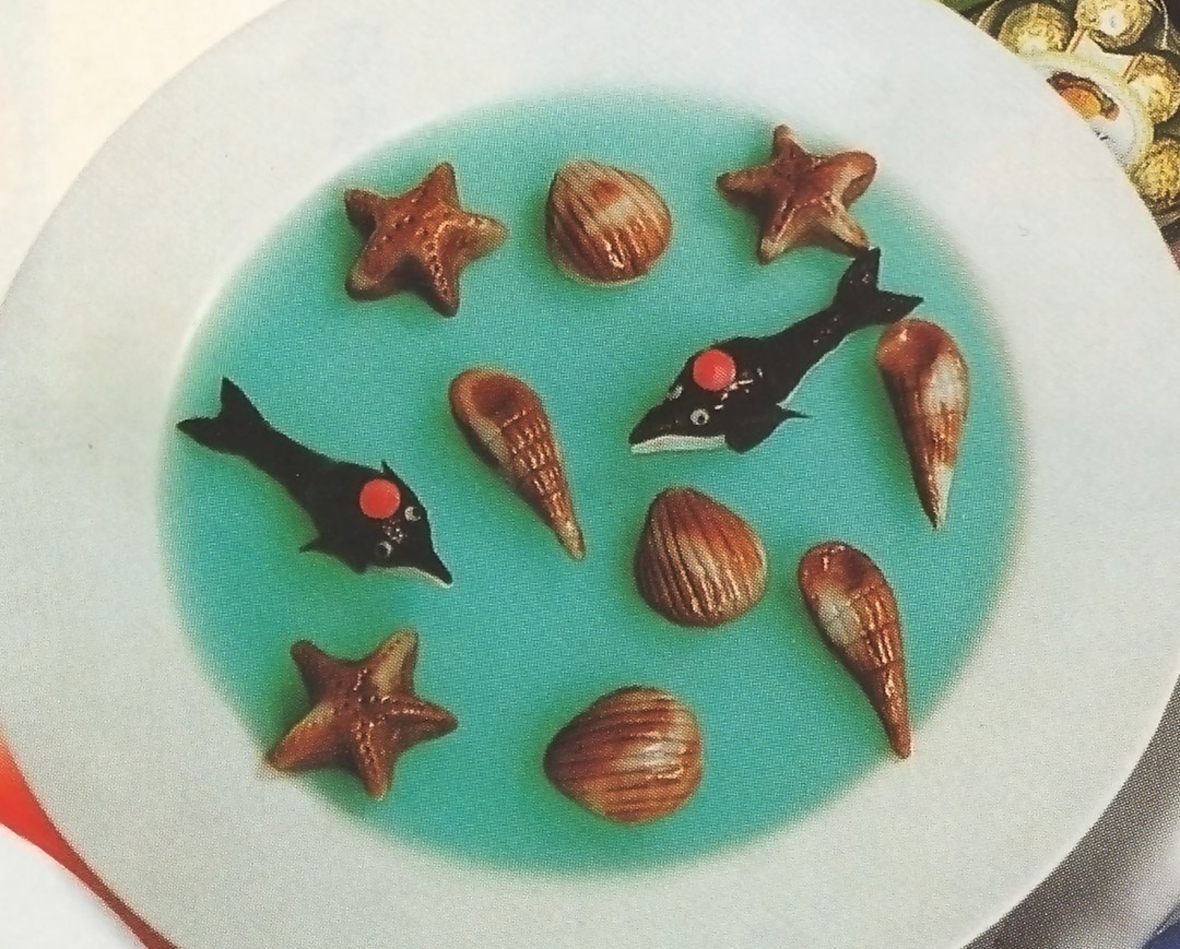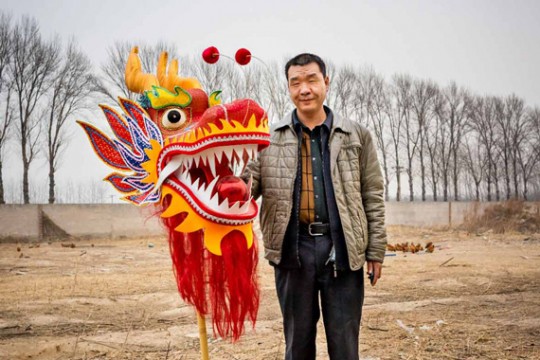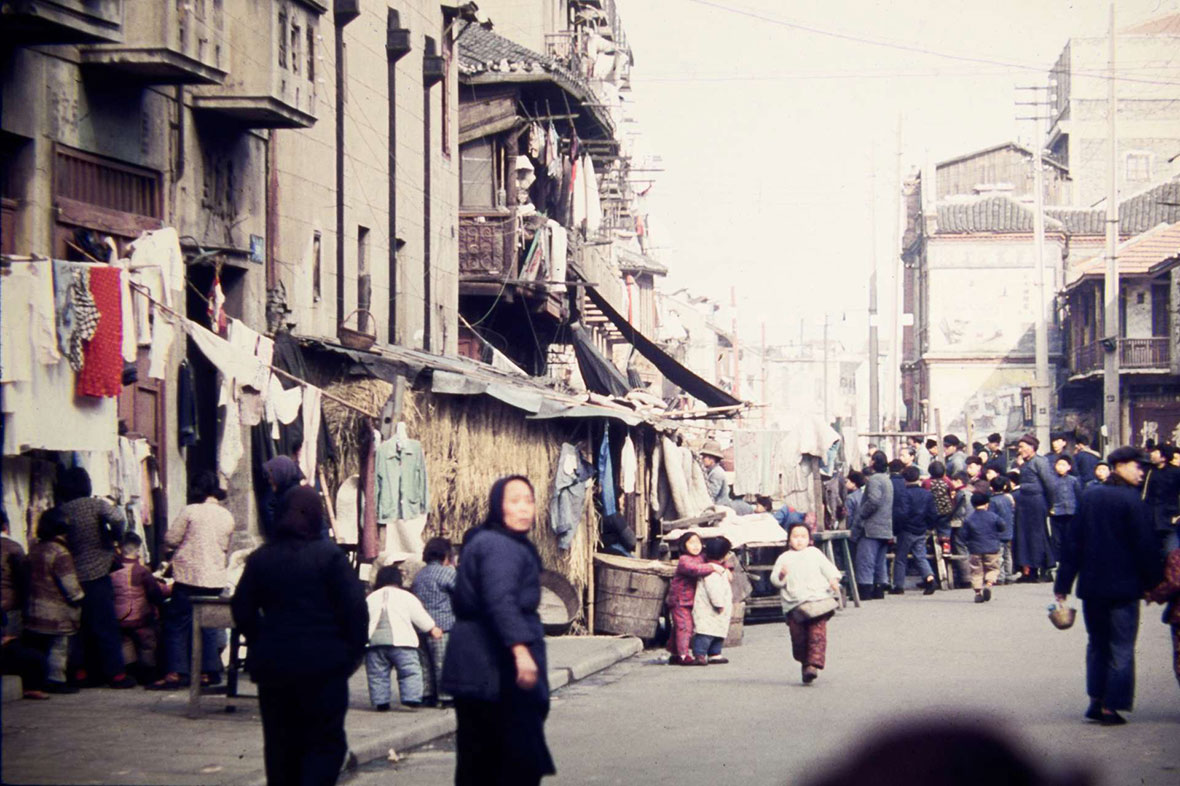
Sometimes items of exceptional historical value sit unregarded under our noses. One day, when Jakob Moritz Becker was helping his grandmother declutter her house, they stumbled across something remarkable: a collection of about 300 photographs of China taken by her father and his great-grandfather Horst Köntopp during a trip to the country in 1961. Becker already knew about this collection as a kid and had already seen some photographs, but it was only later, when facing the decision of whether they should keep or discard them, that he realized the value of what they had in their hands.
The photographs were all in color slide film and showed city and country life scenes in different provinces of China. Featuring landscape, architecture, fashion, and a fascinating human presence, they provide a rare glimpse into what life was like across the country in the early 1960s. Not just that: Köntopp’s slide photographs turned out to be the oldest sizable collection of color photographs of China known to date. Becker’s fascination with his discovery was such that, in early 2021, he published Traces of Change, a photo book with almost the entire original collection alongside photographs taken by himself on many trips to China more than half a century later as he traced his great-grandfather’s steps.
你可曾想象,近在眼前、稀松平常之物,可能具有特殊的历史价值?德国人 Jakob Moritz Becker 某天帮祖母整理房子时,突然发现一堆宝物:那是他父亲和曾祖父 Horst Köntopp 在 1961 年访问中国时拍摄的大约 300 张照片。其实 Jakob 小时候就知道这些照片的存在,还看过其中一部分,然而儿时的他并不能理解照片背后的价值。直到后来成年后,家人一度思考是否要把这些照片处理时,他才猛然间意识到,曾祖父留下的这些作品,是多么宝贵。
这些胶片摄影拍摄于中国不同省份,记录下不同城市和乡村的生活景象,其中不仅包含景观、建筑,更有生动的人物肖像以及那个年代的着装。中国上世纪六十年代初各地生活的摄影作品本身就极为罕见;而更值得一提的是,Horst 的这些胶片摄影,乃迄今为止已知最早的大型中国主题彩色摄影作品集之列。Jakob 深深着迷于这些照片,2021 年初,一部名为《你好,中国》(Traces of Change)的摄影集发行于世——书中囊括了 Jakob 曾祖父所拍的几乎全部作品,还收录了半个多世纪后,Jakob 多次前往中国追寻曾祖父足迹时拍摄的影像。
Becker’s first trip to China had nothing to do with his great-grandfather or the book. It happened before the discovery at his grandmother’s house. Trained as a civil engineer, he used to sing in the choir of the Berlin State Opera in his spare time and went to China for the first time in 2015 to attend choir festivals hosted in the cities of Shanghai and Nanjing. “The atmosphere in China back then was relaxed, everything was open, and everybody was very welcoming,” he recalls. “People from all over the world went to these festivals. It was like a big global classroom, with different groups enjoying and celebrating the beauty of art. It was a magical atmosphere.”
China left a positive impression on Becker. Back in Berlin, he began learning Chinese, already planning to return. Therefore, when he watched the photographic slides with his grandmother, they had gained a more personal value, beyond their historical importance.
The first thing he noticed was their excellent condition and photographic quality. Since they were kept in small slide frames, protected with glass on both sides, most pictures were practically undamaged, with no scratches or specks. Also, Köntopp went to China equipped with the best there was in photographic gear at the time, an Exakta Varex IIa 35mm camera and several Carl Zeiss Jena lenses, which contributed to the excellent results. “My impression of these photos is that they have a certain old charm, very different from photos today. It’s something that comes out naturally with these old lenses and colors,” Becker says.
Jakob 是土木工程出身,曾业余在柏林国家歌剧院合唱团演唱。2015 年,他第一次踏上中国,是去上海和南京参加合唱团汇演。那时的他还并没有留意到曾祖父的照片,但这次旅行为他留下了特殊印象。Jakob 回忆道:“中国的气氛很轻松,一切都很开放,每个人都很友好;来自世界各地不同文化背景的人们齐聚一堂,共享艺术之美。那种氛围真是奇妙。”
第一次中国行给 Jakob 留下了极好的印象。回到柏林后,他开始学习中文,并计划再次返往中国。也正是缘于对中国的情愫,当后来他和祖母一起浏览曾祖父的摄影作品时,他产生了一种对照片本身历史价值之外的更深感知,这也促使他开启了进一步研究。
关于相片,Jakob 首先注意到的,是相片近乎完美的保存状态。每幅作品都保存在小型胶片框中,两边都有玻璃保护,大多数照片几乎没有损坏,也没有划痕或斑点。他还发现,照片的摄影水准极高,这可能得益于曾祖父当时的爱克山泰相机(Exakta Varex IIa 35mm),这台相机是当时最好的摄影装备,同时配备数枚东蔡镜头(Carl Zeiss Jena),共同造就了作品的不凡呈现。Jakob 说:“这些照片有一种特有的古早魅力,与今天的照片非常不同,它们在老式镜头和色彩的加持下,呈现出更加自然、亲近的效果。”

Born in 1920, Köntopp lived through very tumultuous times in Germany. As a young adult, he served in the Second World War, in the Army Medical Service, and was imprisoned after it ended. He then returned home to what later became East Berlin and continued his medical studies to be a doctor. Köntopp was also a photo enthusiast. He shot in black and white and in color, developing the film at home in his own dark room. He even photographed for a few health periodicals as a freelance photographer. As a doctor, Köntopp helped rebuild the medical system that had collapsed during the war. His specialization was in vaccinations and social hygiene.
In 1961, along with two other doctors, Köntopp was invited on an exchange trip to China to meet Chinese doctors, visit hospitals, and observe local hygiene habits. “He didn’t take many pictures of his workplaces, but you can notice that some photos have a connection because whenever he saw something that had to do with hygiene in the street, he would take a picture. This is the only relationship I can see between his pictures and what he was doing there,” Becker says.
Jakob 的曾祖父 Horst 出生于 1920 年,曾经历过德国动荡和战乱。成年不久后,他参加第二次世界大战,服役于陆军医疗单位。二战结束后,他被一度监禁。之后,他回到东柏林,完成了医学学业,选择成为一名医生,专业领域是疫苗接种和社会卫生。在从医生涯中,Horst 参与重建了德国战后崩溃的医疗系统。摄影是 Horst 业余的热衷,他拍摄黑白和彩色照片,在自家的暗房里冲洗,他还以自由摄影师身份为几家健康刊物摄影。
1961 年,Horst 和另外两名医生应邀前往中国进行交流,他们会见中国医生,参观医院,观察当地卫生条件。Jakob 说:“虽然曾祖父没有拍过很多医疗场所的照片,但从一些照片中,不难发现与医学的关联。每当他在街上看到与卫生有关的事物,他都会随手拍下。这是唯一的线索,能让我从照片中了解到他所从事的行业。”

Köntopp’s trip happened in January and February, only months before the Berlin Wall went up. Even though East Germans still enjoyed relative freedom to travel abroad, including to Western European countries, they would more commonly travel to other countries in the Eastern Bloc of Europe. Their currency wasn’t strong nor convertible, making it very difficult to travel elsewhere—a trip somewhere as far as China was a farfetched idea, something extraordinary. The journey wasn’t easy. Köntopp and the two other doctors went by train to Moscow, where they took a plane to Tianjin with a stopover in Mongolia.
The group landed in China during the period of the Great Leap Forward, an economic plan with the goal of accelerating the transformation of the country from an agrarian society into an industrial powerhouse. However, the program had inverse and tragic effects, damaging and shrinking the Chinese economy. The worst happened in the countryside, where a combination of human errors, misleading crop reports, and natural catastrophes caused an unprecedented famine that killed tens of millions of people, the Great Chinese Famine.
Horst 的中国访问是在 1961 年 1 月 和 2 月,也就是柏林墙竖起的几个月前。当时,东德人仍然享有出国旅行自由,可以前往西欧国家,但大多数东德人选择东欧集团国家作为旅行目的地。这是因为东德的货币在当时并不坚挺,不能自由兑换,让国外旅行变得举步维艰。而前往中国这样遥远的东方国度,更是难以想象的。也因如此,Horst 的中国行并不轻松,他和另外两名医生先是乘火车到莫斯科,然后又坐飞机去天津,中途还有在外蒙古短暂停留。
Horst 的那次中国行正值大跃进时期。这是一项经济计划政策,旨在加快中国从农业社会向工业强国的转型。然而,该计划产生了反作用和悲剧性影响,不仅打击了中国经济,更使其不增反降。农村的情况最为糟糕,在人为失误、误导性的农作物报告和自然灾害的共同催化下,一场前所未有的饥荒降临,造成数千万人丧生,酿成 “三年大饥荒” 的悲剧。
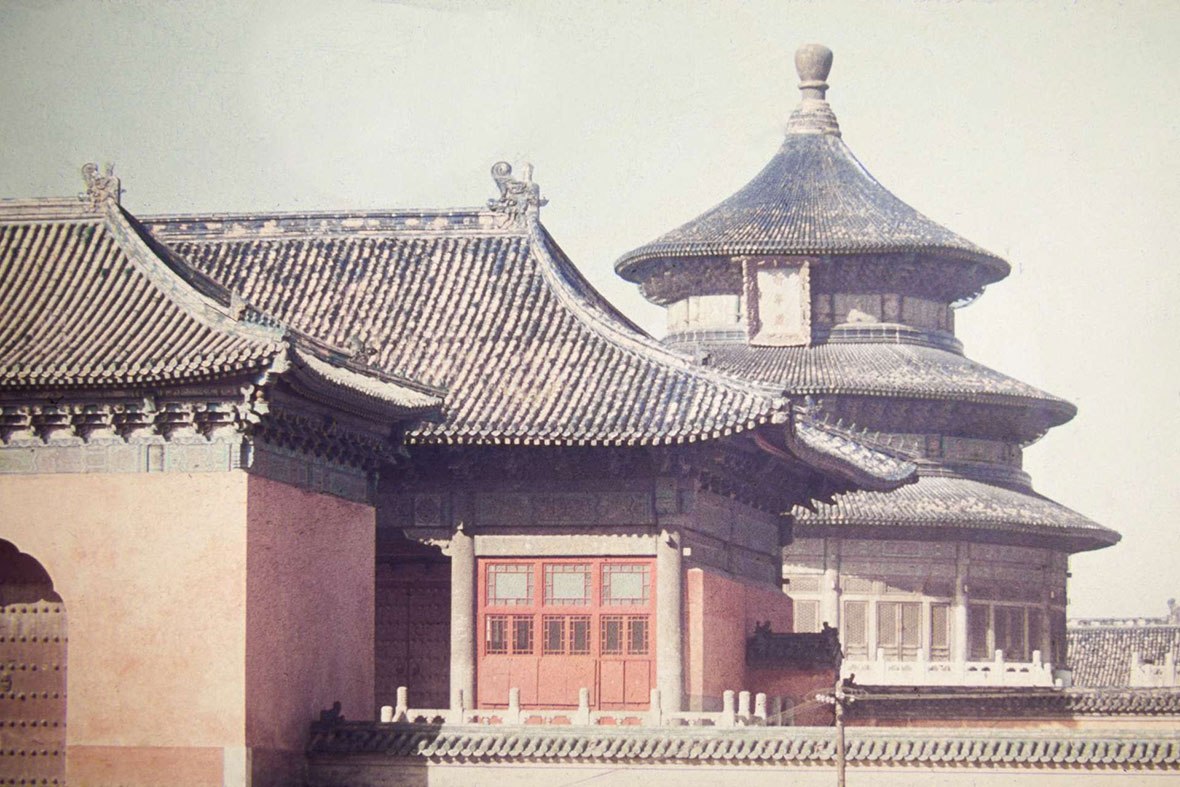
Although none of this is self-evident in Köntopp photos, a closer look reveals hints of the bigger picture. “We have to distinguish between the cities and the rural landscape. If you see photos of the cities, you don’t feel a great famine is going on. The cities still received food from the countryside,” Becker says, explaining that, as history shows, rural communes reported faux harvest numbers, painting a positive picture, not to lose the favor of government administrators. Based on these misleading reports, large parts of their stock were sent to cities on a redistribution scheme. After that, when the rural communes reported truthfully that they could no longer provide high amounts, they were accused of hiding stock, which often led to food being taken forcefully. That meant that little, sometimes nothing, would be left for the rural population to eat.
“In one picture taken in the country, we see a group of children working in the field without the presence of any adults. They, too, had to ensure the harvest was properly done,” Becker says. “Knowing this context, it’s interesting to see these photos where these three German scientists are sitting in a hotel having a rich dinner with all kinds of food. It was not something common at this time,” he adds, highlighting the contrast between the harsh conditions in the countryside and city life.
Still, as Becker remarks, even in the cities, there were obvious hints of shortages. For instance, in one picture, we can see dozens of people queueing in front of a shop selling coal, which shows that even basic materials and goods weren’t available in abundance.
这段历史在 Horst 的照片中并没有直接体现,但仔细观察,不难发现痕迹。Jakob 解释说:“当把城市和乡村照片的分开来看——从城市角度,你看不出大饥荒正在发生,这是因为当时城市仍有来自乡村的粮食供给,” 据历史记载,农村公社为了能持续获得政府官员们的青睐,虚假上报农作物产量,描绘了一幅粮产丰足的盛景。于是,根据再分配计划,农村的大部分粮食都被征收送往城市。而之后,当农村公社迫不得已只能如实汇报他们无法再提供粮食的状况时,政府却断定农村谎报,并采取强行征粮的措施,最终导致农村人口几乎没有余粮的情况发生。
Jakob 以一张照片为例并解释道,“照片里,一群孩子在田间作业。在没有任何成人看护的情况下,孩子们必须确保收割工作达标。而同时期另一张照片中,三位德国科学家坐在酒店中,正享用丰盛的晚餐,” 他强调,这样的晚餐在当时并不常见,农村的艰苦和城市的丰足之间的对比可见一斑。
然而,即使是在城市,也有明显的物资短缺迹象。Jakob 展示了另一张照片,几十人在一家煤炭店门口排成长队。这表明即使是在城里,基本物资和商品也曾出现过供不应求的现象。
Even though the circumstances were harsh, Köntopp’s impressions of people in China were positive. Becker learned from his grandmother that he found Chinese people friendly, calm, and remarkably honest. “My great-grandfather always said that once he had forgotten a tie on a train in China, and he was sure that if he were to go back there, he would still find the tie in the same seat he was because no one would have taken it,” Becker laughs. Köntopp’s trust in Chinese people went as far as his field of expertise, medicine. During the trip, Köntopp felt intense tooth pain, but he didn’t know any dentists in China. His solution was to try Chinese acupuncture, which was still very unorthodox, to say the least, for the Western mentality then.
Indeed, Köntopp’s respect for the Chinese people comes across in the portraits he took. He photographed people of all ages candidly. In one particular shot, he captured a group of young boys, probably around seven or eight years old, gathered around an improvised ping-pong table. They seemed to have made the table to fit their small stature. Also, they ingeniously improvised the net out of a combination of lined bricks. In another shot, Köntopp portrays a group of little girls, about the same age as the boys, playing a game of jump rope. They seemed to have noticed him taking the photo because some of them threw intrigued gazes at the camera and opened smiles.
“I find these portraits remarkable. Today, we’re always hesitant to take photos of people, especially in a different country, but I think my great-grandfather was not afraid. The atmosphere must have been different back then because not everybody was running around with a camera. This was something new, a sort of a privilege,” Becker says.
One thing that catches the eye in particular in Köntopp’s photos is the clothes people wear. We see no traces of European fashion or even more stylish Chinese pieces such as the qipao, and not yet an abundance of Mao suits that became popular in the following years. Instead, there’s a predominance of modest and untailored tang style jackets, baggy pants, and cloth slip-on shoes, all worn by men and women, even in the biggest cities.
尽管条件艰苦,但那次中国行却给 Horst 留下许多积极的印象。祖母曾告诉 Jakob,在曾祖父心中,中国人友好、冷静,而且非常诚实。Jakob 笑着说:“我的曾祖父总会谈起,一次他在中国火车上忘拿领带的经历,他坚信,如果他回去找,领带一定还放在原处,因为没人会拿。” Horst 对中国人民的信任甚至延伸到了医疗领域。访问期间,Horst 某天突发剧烈牙痛,可他在中国不认识牙医,于是果断尝试传统的针灸疗法。而在当时许多西方人眼里,针灸并非正规疗法,其往往被冠以偏见。
Horst 对中国人民的喜爱与好奇心,还体现在他拍摄的人物肖像中。他抓拍了各个年龄段的人群。其中一幅照片中,他捕捉了一群大约七八岁大的男孩,他们围在一张临时搭建的乒乓球桌旁。球桌很低,仿佛是为孩子们量身定做。男孩们机智地把地上的砖头排成一排,当作乒乓球桌上的分割线;另一个镜头中,Horst 捕捉到一群正在跳绳七八岁女孩,她们似乎注意到了镜头,纷纷对着相机投来好奇的目光,露出天真的笑脸。
Jakob 说:“时至今日,这些照片依然能给人留下深刻印象。如今,尤其身在异国他乡,当摄影师给陌生人拍照时,总是顾虑重重。但曾祖父当年并没有太过顾虑。诚然,当时的氛围肯定与现在不同,那时候可不是人人都能带着相机到处跑,相机在当时是一种特权般的新事物。”
在 Horst 的照片中,还有一点格外引人注目,那就是人的穿着。照片中没有出现欧洲的时尚痕迹,也没有旗袍之类的中国服装,就连后来数年里大热的中山装,也没有出现。相反,大部分人都穿着朴素,未经剪裁的唐风夹克、军大衣、宽松的裤子和棉质布鞋——无论男女老少,无论城镇还是乡下。

Beyond fashion, the mood in Köntopp’s photos seemed modest and, paradoxically, more idyllic. As Becker notices, even when the architecture was preserved, the aura of most places has changed drastically from those times. “Architecture-wise, some of these places he visited look much like they do today. But they feel completely different because they are so crowded today,” he says, showing a photo of the Long Corridor at the Summer Palace in Beijing taken by his great-grandfather. The corridor is uncrowded, with only a few people strolling. But then Becker compares this shot with a recent photo he took of the same corridor overcrowded with people in guided group tours. “This is what fascinated me. My great-grandfather’s photos show the China we all imagine, a peaceful, harmonious, and spiritual place,” he says.
Horst 在拍摄中采用的色调朴素至简,甚至带有某种田园诗意。Jakob 留意到,即便当时的一些建筑被保存至今,但大多数气质已发生了明显的戏剧性变化。他说:“我后来前往过一些照片的拍摄地,那里的建筑和当初比起来没有太大变化,但氛围早已截然两样——很多地方车水马龙,热闹非凡。”在一张 Horst 拍摄照片中,北京颐和园长廊里散步的人寥寥无几,而在 Jakob 近年内拍摄的照片中,同一条走廊里排满了导游团。Jakob 说:“曾祖父的照片展示了一个与我们想象中吻合的中国,一处和平的、和谐的精神家园。这是让我着迷的地方。”
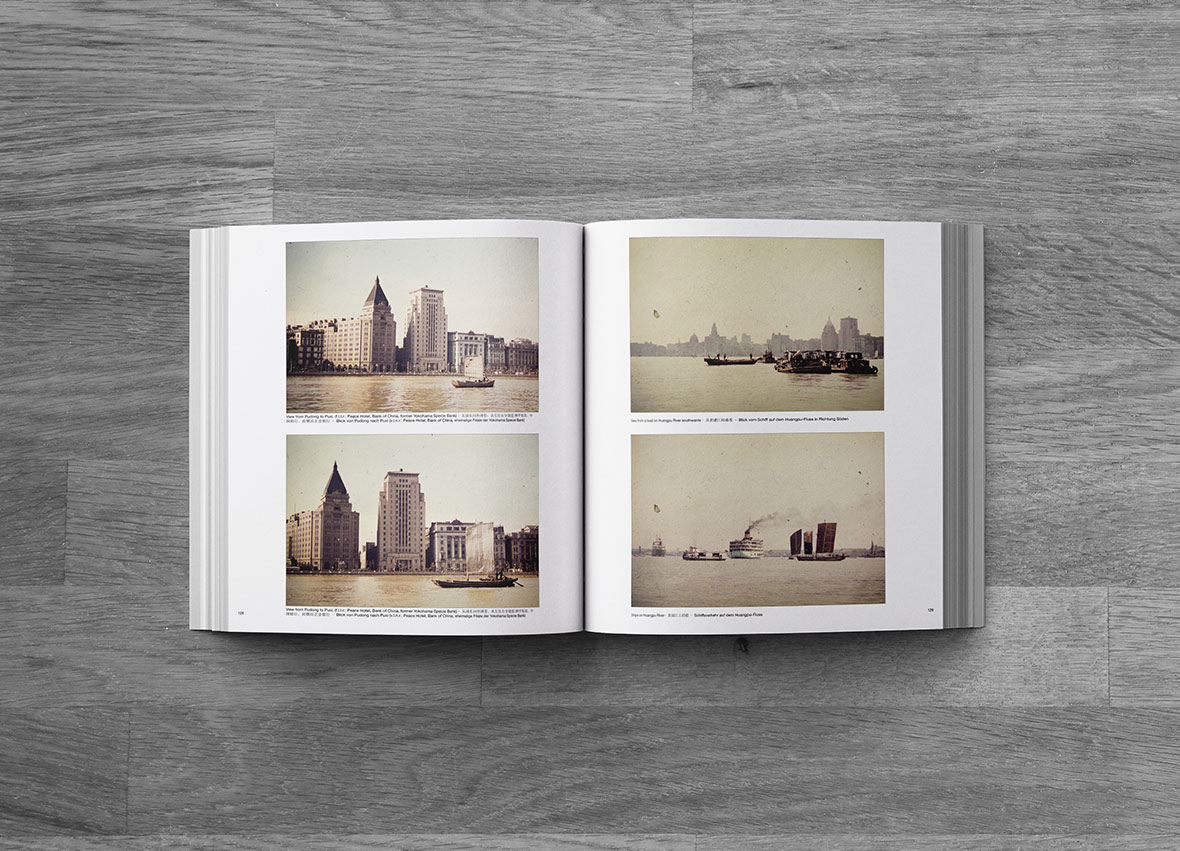
As he studied the photos, Becker wondered if he could find some of the less obvious places his great-grandfather had photographed. Since Köntopp didn’t leave a proper travel journal behind, Becker would have to rely on the images themselves and clues his great-grandfather left in them for guidance. Köntopp had scribbled notes and succinct descriptions in many of the pictures; sometimes, these scribbles revealed the name of the city or area where he shot them; sometimes, they were vague, just simple keywords, like “in the hotel,” for instance. Besides, not all of them were legible, especially considering how intricate handwriting was in the past. And there was yet another complicating factor: Köntopp had used the now obsolete German names given to those places.
To Becker, decoding these clues was a discovery process in itself. His investigation of his great-grandfather’s journey began in Germany. He researched online, on Google and Baidu, and, to his surprise, he found many of the places he was looking for with a simple research. When the difficulty level increased, he asked friends and people he knew in China for help. In the following years, Becker visited China for various reasons. He took the chance to stir his travels within the country towards the places his great-grandfather had been sixty years before.
在研究曾祖父的照片时,Jakob 想试试看能否找到以前曾祖父拍摄过的一些不太被人知道的地方。由于曾祖父的相册并没有留下像样的旅行日志,Jakob 不得不循着照片本身、和照片上的线索来寻找。许多照片上都有潦草和简洁的笔述,有些是关于城市和地名、有些则语焉不详,只是简单的关键词,比如“在酒店”等等之类的备注。此外,并不是所有的字迹都清晰可辨,当年曾祖父的手写字迹潦草难辨。还有一个因素让 Jakob 的探寻之路难上加难:一些地名依然是当年的德文标注,如今已不再使用。
解码这些线索对 Jakob 来说,是另一次探索。研究之初,Jakob 还在德国,他于谷歌和百度上搜索。令人惊讶的是,仅是简单的搜索,却让他一下子找对了许多地方。对于那些没那么容易搜到的地方,他便向中国友人和熟人寻求帮助。在接下来的几年里,Jakob 因各种缘由到访中国,并借机去曾祖父六十年前去过的地方寻迹。
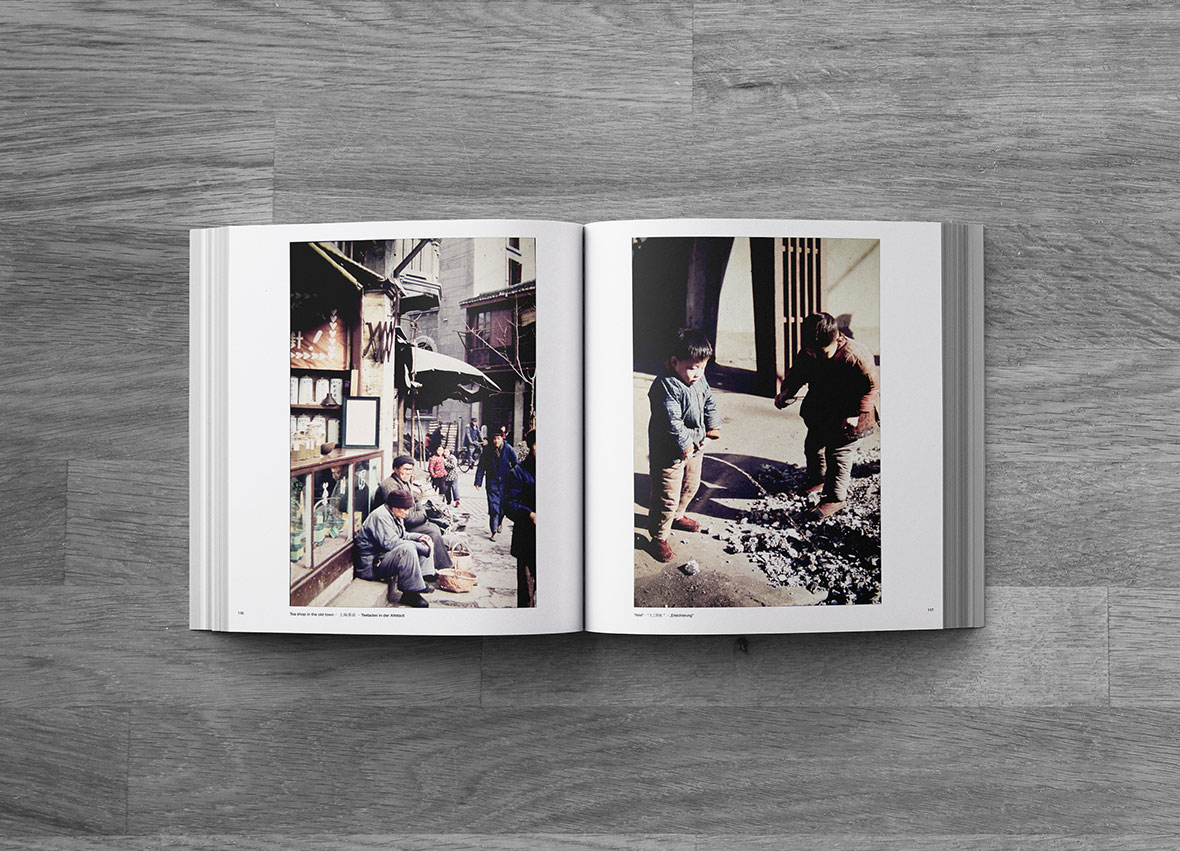
Still, finding cities and locations didn’t mean the job was done. Becker needed to find the exact spots Köntopp stood to photograph. Some were easy. “Memorials, parks, and gardens didn’t change much. Like the Summer Palace; it didn’t change at all. Maybe the colors became a bit more bright and catchy, but the structure and architecture remain the same,” Becker says.
Some spots, however, were much harder to locate. “Hutongs and other places where people lived in old houses have changed a lot. These were often in the city centers. If you look at the city center of Beijing, it’s full of new modern buildings now. A lot of this old architecture was seen as outdated and replaced,” Becker says.
To locate some places that had changed radically, and some that were simply too hidden, Becker used an interesting approach: he tapped into the memory of the elderly. “I would show pictures to the elderly in the streets and ask them if they knew these places. They really remembered places and promptly started giving me directions. I would follow them, and sometimes, suddenly, I would find the exact location I was looking for,” he says.
找到具体的地点并不意味着任务的告终,Jakob 还需要找到曾祖父当年拍摄的确切角度和方位。有些位置找起来很容易,比如纪念馆、公园和花园,这里和从前没有太大变化。“像颐和园就一点都没变”,他说,“也许颜色变得更加明亮,但建筑结构没怎么变。”
然而有些位置就很难找得多,比如胡同,和其他老式居民楼。“这些地方往往都位于市中心,变化巨大,” Jakob 说,“你看今天的北京市中心,到处都是新建的高楼大厦。人们认为老建筑过时了,所以很多就都被拆除了。”
为了找到发生巨变的地方,以及那些隐蔽于城市的角落, Jakob 采用了一套有趣的方法,那就是去找当地的老人聊聊:“我会把照片给街上老人看,询问他们是否认识这些地方,”他说,“一些老人还记得,他们会立刻为我带路。有时还真一下子就找到了。”
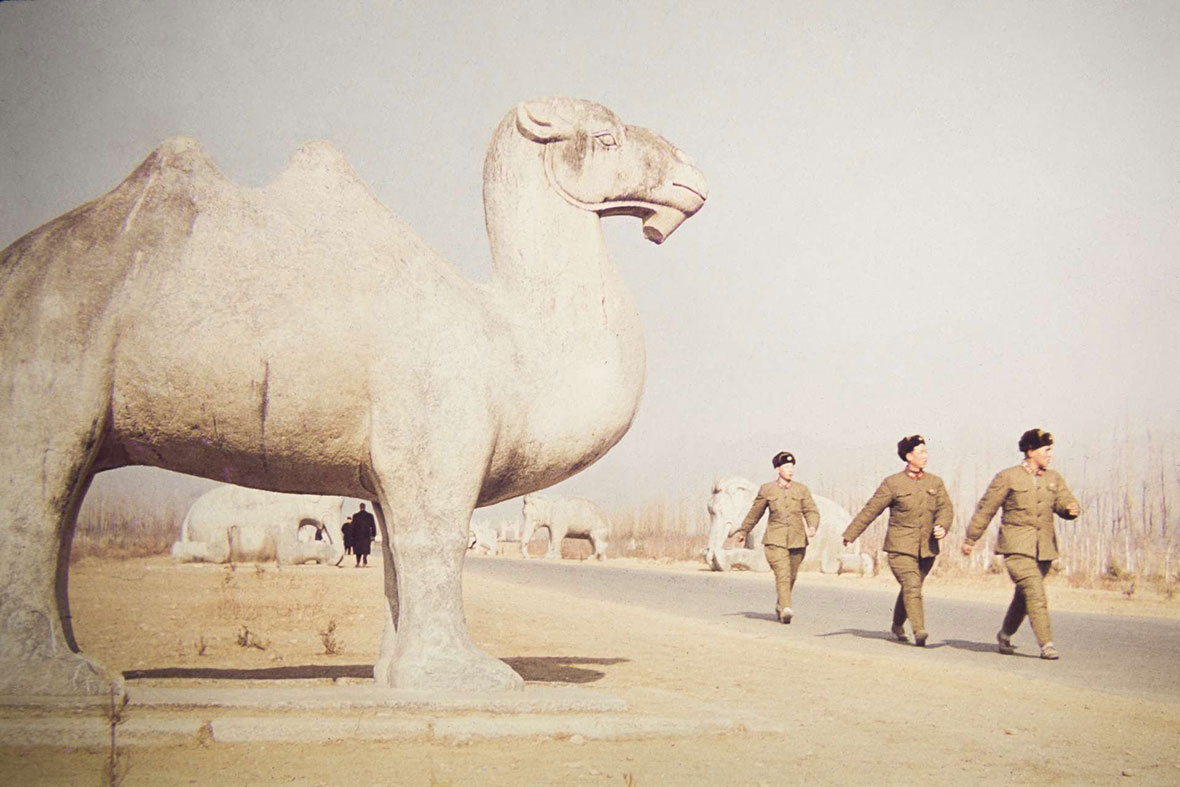
Other times, Becker would find nothing of what he was looking for, even if he were in the right place. Some landscapes had changed almost entirely, and he had to look for clues in the photographs that he could identify, like a stream of water or a small bridge, to ensure he was in the right place. Wherever he went, he would try to capture the same angle his great-grandfather did. That wasn’t easy either: sometimes new additions to the landscape had obstructed the view or made it impossible for him to stand in the same place Köntopp did in the past.
Unsurprisingly, some places proved impossible to find. Some spots had changed entirely. Whatever was visible in Köntopp’s photos had utterly vanished to open space for large modern buildings or massive infrastructure projects. “I could only find the places that have changed to a certain degree. But many places changed so much that I had no way of recognizing them. I will never be able to find them—probably nobody will.”
Contrastingly, some things remain the same. A few times, Becker found places where even the lifestyle seemed untouched by time. “With the car, I had more flexibility to go wherever I wanted, so I drove to some remote areas in Sichuan where you can still find life intact and original,” he says. However, he realizes it’s a matter of time until things change. Even in such places, there are hints of modernization, and they usually appear with tourism. “Sadly, most people will sacrifice tradition and culture for the money that comes with mass tourism.”
无论 Jakob 走到哪里,他都会习惯性地还原曾祖父的拍摄角度。这个过程并不顺利。即便找对了地方,也不能保证找得到确切位置。有些景观几乎完全变了模样,他不得不用照片里的线索来进行比对,比如一条小溪、一座小桥,以确认位置的准确性有多少。然而,有些地方建了新的景观,或阻碍视线,或阻挡路线,已然不可能走到曾祖父当年的拍摄位置了。
一些地方甚至消失得无影无踪,取而代之的,是大型现代建筑或大型基础设施项目。Jakob 说:“一些地方也许会发生变化,但终究可以找到。而变化太大的地方,我无法辨认,无论换作谁去找,可能都不会再找到了。”
相比之下,有些东西则几十年如一日。那里的生活依然如旧,仿佛没有受到任何时代的影响。Jakob 说:“我开车走访了许多地方,去了四川的一些偏远地带。在那里,我找到了旧日影像里的生活。”但他也知道,这样的状态不会持续太久,因为即便在这样的地方,也有现代化的迹象,通常都是被当地旅游业带起来的。他接着说:“大多数人会选择牺牲传统和文化来换取大众旅游带来的收入,这很令人惋惜。”
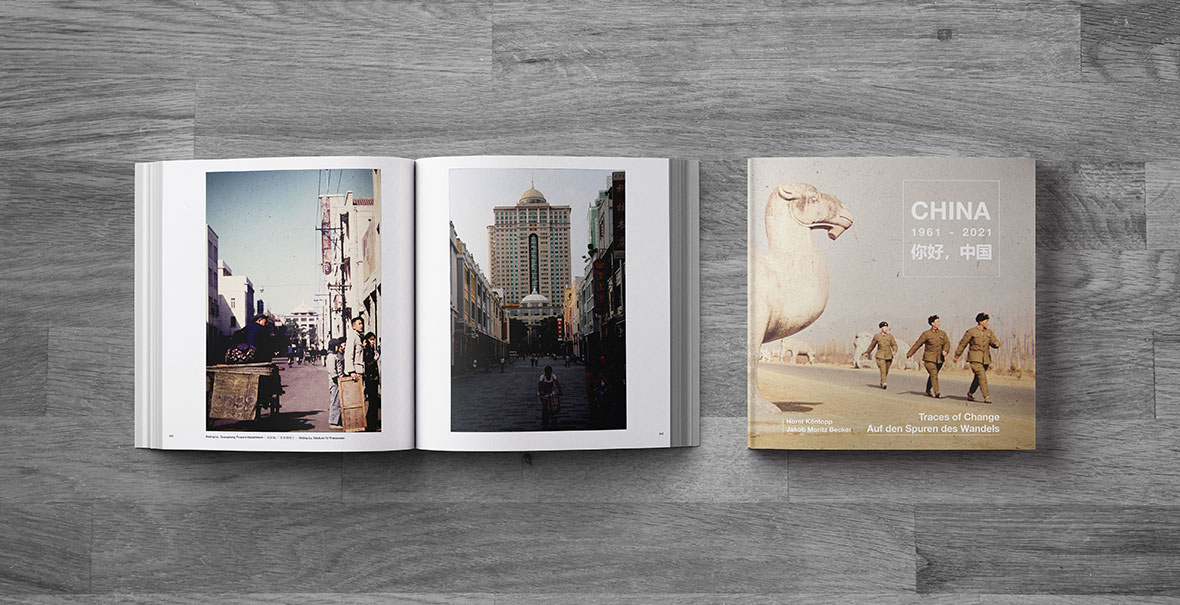
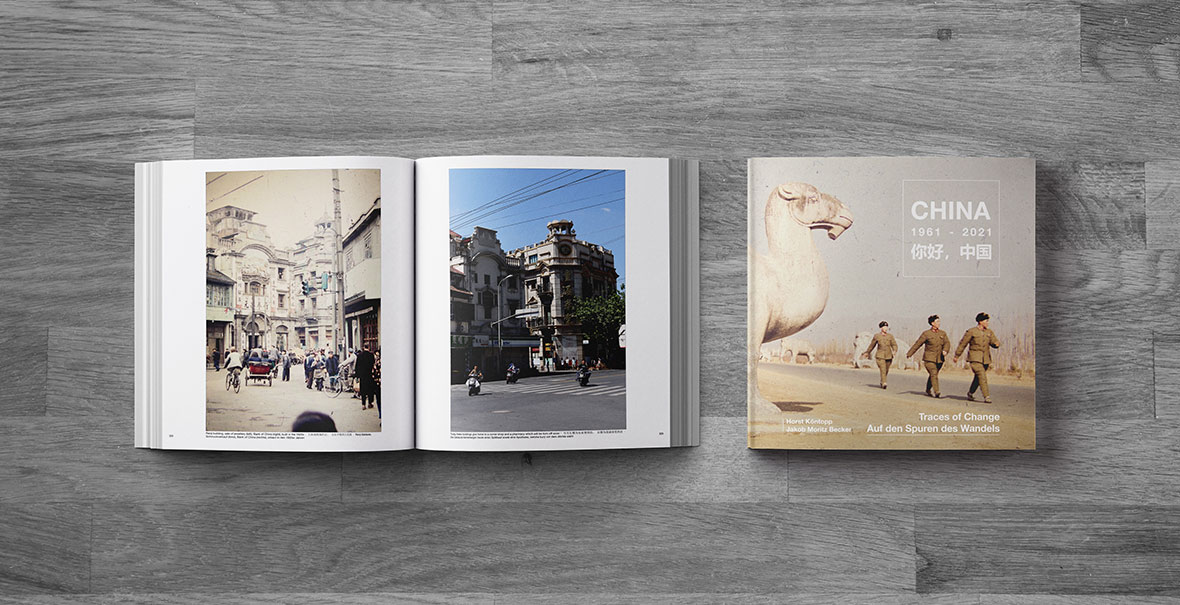
Becker noticed that in cities, some of the old buildings had their facades stripped of the original ornaments that decorated them, like Chinese texts, dragon images, and friezes. These buildings gained a more practical and unaffected appearance. The most noticeable change, however, was in street life. The book has pictures of 1961 showing people playing games on the sidewalk, reading, hanging their clothes to dry in public, and practicing qigong in the streets and parks. Scenes that you can still see in today’s China but that are getting increasingly rare due to the changes in lifestyle and the results of the gentrification of traditional neighborhoods.
“In the pictures of 1961, the streets were alive, full of people. If you analyze them, you have the impression of a functional social system,” he says, showing a photo of a lively street with many people coming and going on foot, bicycles, and rickshaws. A young man is pulling a cart filled with sacks in the back, and there’s an overall sense of how social the street was back then.
In the book, Becker juxtaposed this picture with a recent shot of the same street. We can immediately notice the emptiness: only a few scooters are racing by, and now there’s a pedestrian crossing, a Family Mart shop, and a pharmacy. The ornaments in one of the buildings are gone, and another building disappeared completely, possibly to open space for a wider road. “It’s a matter of perspective,” Becker says. “If you could ask the people back then, they would probably love what it looks like today: clean, functional, and people having enough money to buy things and eat. At the same time, in our position today, we look back at them and feel this dreaminess of the good old times. We can see the history that has been removed, and now it’s gone.”
此外,Jakob 还发现其他一些变化,例如,城里一些老建筑正上方的牌匾,如汉字、龙的造型和带状浮雕之类的装饰,统统不见踪影。少了雕饰的建筑,平添了几分实用和普世性。最明显的,是街头生活的变化,1961 年的照片里,人们常在人行道上嬉耍、阅读,还有的人在公共场所晾衣,在街道、公园里练气功。现如今,尽管这类场景在中国仍然可以看到,但缘于生活方式的巨大转变和社区现代化,这样的景象越来越少见。取而代之的,是跳广场舞的大妈、和整齐化一的街道。
他说:“1961年,街上到处是人,生机勃勃。倘若把这些照片综合起来看,你会感受一个完善的人文社会体系。”他随即翻开一张照片,上面是一条热闹的街,有很多行人,自行车和人力车来来往往,其中一个年轻人拉着一辆装满麻袋的推车,整体传递出一种生机和活力。
在《你好,中国》这部摄影集里,与上述这张照片并列的,是 Jakob 近年在同一条街拍下的作品,一段人行横道、一家全家便利店和一家药店,几辆电瓶车飞驰而过,显得很空旷;曾经的建筑装饰没了踪影,有的栋建筑也许是为了扩宽道路而被彻底拆掉。Jakob 说,“每个人的视角大不一样。今天的我,作为一个德国人,回望另一个国家的过往,感受到的更多是梦幻般美好旧时光;但如果你问当时的人们,他们可能更喜欢如今这里的生活:干净、便利,有足够钱来购买食物和商品。照片里,我们看到了一段被移除的历史,一段再也回不去的旧时岁月。”

Traces of Change is organized into two parts and subdivided into many chapters. The first part shows only Köntopp’s photographs; the second is the re-photography part, where Becker combines the past and the present. Each chapter corresponds to a stop in Köntopp’s journey. Inspired by the poetic character of the photos, Becker opens them with a traditional Chinese poem connected to the local atmosphere.
Even though the textual elements only appear minimally in the book as an introduction to Köntopp’s trip, captions, and the poems mentioned above, Becker had to invest time in researching background information and translating the text, including the poems, to English, German, and Chinese. It was something he wouldn’t be able to do without the help of his father, his girlfriend, and other collaborators. The processes were fairly complex, mainly because of the number of photographs he included in the book, almost the entire colored collection, except for a few duplicates.
Köntopp’s entire photo collection, however, was even more extensive. Becker’s grandmother told him there was also a series of black and white photographs he took in China with another camera, but they had disappeared with time. Had they been around, they would likely make it to this book, or perhaps another one. Becker is eager to protect and share every visual material he can with the broader public. “I wanted to leave nothing out,” he says. “Even though some of these pictures might not look special, they might be relevant to some people. They will see details that you and I won’t. Altogether, these pictures help construct an understanding of the time” he says.
Köntopp’s pictures of China provide precisely this. They are rare missing pieces that help us assemble a better understanding of Chinese society at the beginning of a pivotal period for the country. But they do so in a unique way, distinguishable from the usual scenes of despair or ideological fierceness that dominate the imagery available from the time. They’re more humane and perhaps even more meaningful, taken by an amicable traveler who was genuinely curious about the country in a seemingly apolitical manner. Together with Becker’s recent photographs, they form a window not just to reinterpret how Chinese people lived in the past but where they (and we) stand today.
《你好,中国》分为两大部分,每一部分细分为多个章节。第一部分,展示的是曾祖父 Horst 当年的摄影;第二部分,则是 Jakob 自己近年的拍摄,在这个部分中,他还将过去和现在的照片并列展示。其中每个章节,都与当年 Horst 在旅程中的每一站相对应。受老照片中怀旧情绪的启发,Jakob 特意给每章开头都配上一首诗,诗的内容恰好引出章节里照片上出现的人物和场景特点。
在摄影集为数不多的文字里,你会看到 Horst 中国之旅的介绍、作品说明以及诗歌。字虽少,但 Jakob 却花很多时间进行斟酌。并在父亲、女友和其他合作者的帮助下,将书中文字翻译成了英文、德文和中文。制作影集的过程相当复杂,主要是因为照片的数量过大,其中除了少数复制品,几乎所有的彩色照片都被收录进册。
不过,Horst 的摄影作品数量远不止这些。据祖母说,Horst 在中国时还用另一台相机,且拍了一系列黑白照片。然而随着时光流逝,这些照片却怎么也找不到了。如果这些照片还在,可能也会收录进现在这部摄影集里,或出版成另一部作品。Jakob 对这些宝贵的视觉影像有着强烈的保护欲,更带着与世人分享的愿望。他说:“我想毫无保留地分享这些作品。尽管有些照片看起来并不十分特别,但兴许它们会和某些特定人群产生共鸣,也许,总有人就能发掘你我关注不到的细节。总之,这些照片将帮助我们构建起对那个时代的理解。”
确实,当我们想深入探索中国那个特殊时期,Horst 的摄影作品能为我们填补一部分罕见的空缺。这些作品的表现方式如此独特,平静、和睦的生活之气,和当时占主导的绝望情绪、激烈的意识形态争辩,形成鲜明对比。作为一位友好的旅行者,Horst 以一种无关政治的姿态,真诚地展示他对这个国家的好奇心,也因此,他的作品更具人文关怀,更有深意。这些老照片,与 Jakob 近年的新作一道,为我们开启了一扇富有诗意的窗,连通着中国的过去与现在。
Like our stories? Follow us on Facebook and Instagram.
Website: www.tracesofchange.de
Instagram: @tracesofchange
Contributor: Tomas Pinheiro
Chinese Translation: Yang Young

